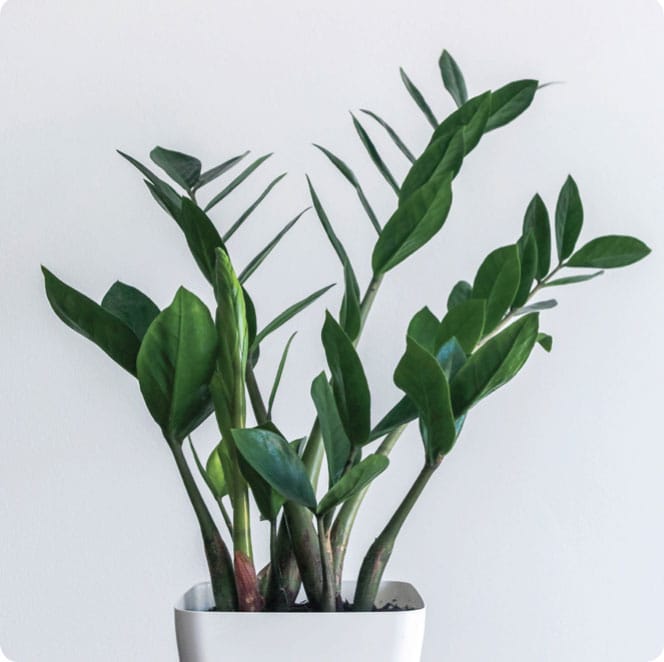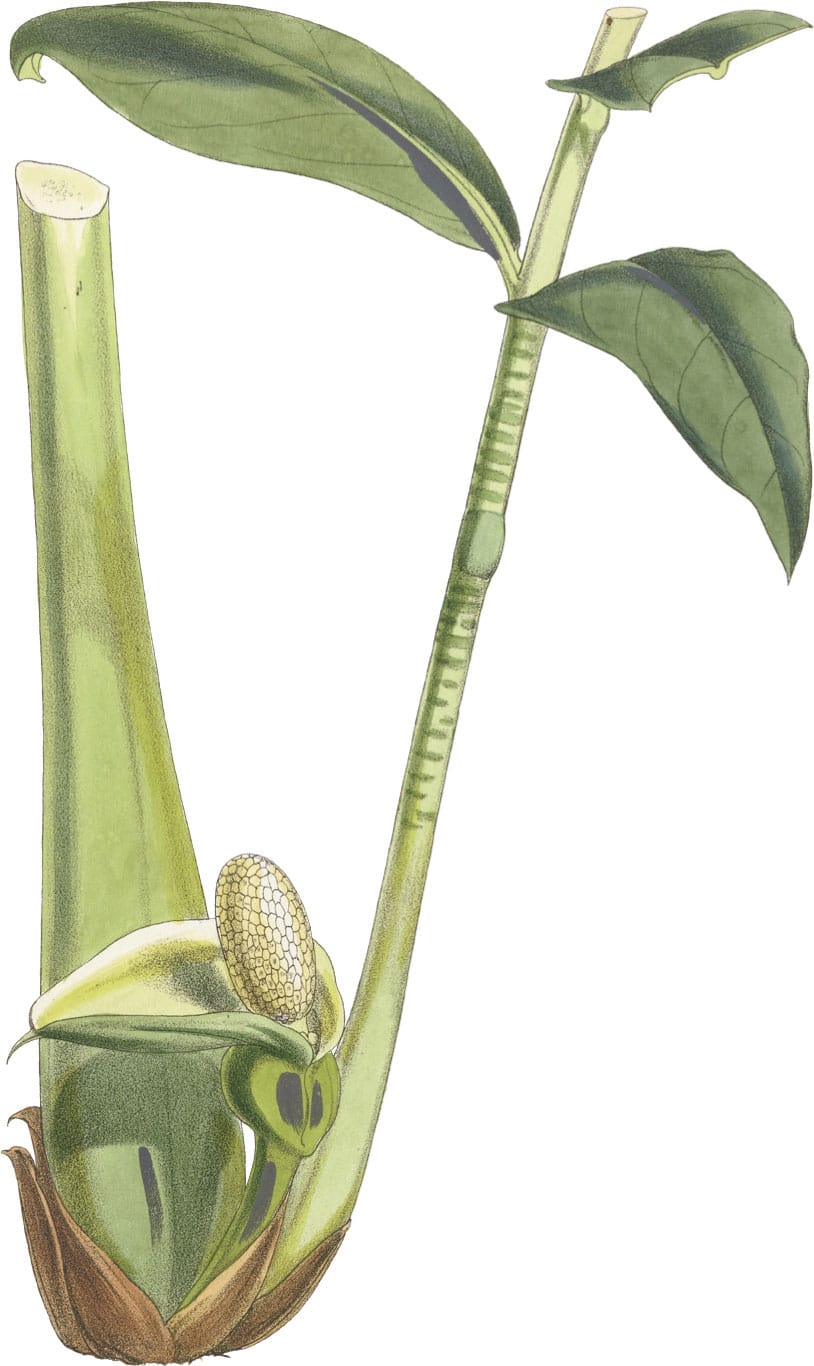Plants

FERN
Delta maidenhair fern
Adiantum raddianum
These delicate, lacy plants that hail from the humid, shady forests of tropical America are the perfect bathroom plant, thriving in the steamy air. Look out for A. raddianum ‘Fragrantissimum’, with its lush, sweetly scented foliage, and the filigree A.r. ‘Micropinnulum’.
WHERE TO GROW
The graceful, drooping fronds make delta maidenhair fern a lovely choice for a shelf, basket or plant stand in a humid kitchen or bathroom; it also loves the humid atmosphere of a tropical terrarium (see Miniature rainforest).
HOW TO GROW
Use loam-based compost, which holds moisture better than multipurpose compost. Water the plant at its base. Mist regularly or place the pot on a tray of pebbles and water. Feed once a month from spring to autumn, with a balanced liquid fertilizer. Watering can be reduced in winter but keep humidity levels up. Remove scruffy growth at the base.
GROWING TIP
These are high-maintenance, fussy plants that hate being moved, so give them the perfect spot from the start as they dislike draughts and the blasting heat from radiators.
ALL IN THE MIND
The shiny, black stems on this fern give it its common name as they are thought to resemble human hair.

BROMELIAD
Urn plant
Aechmea fasciata aka silver vase, scarlet star
Elegant, arching leaves are mottled with silver, and in summer the urn plant produces a single flower spike with pale pink bracts and small, but eye-catching, violet flowers. This rainforest plant is easy to look after.
WHERE TO GROW
Its beautiful flower spike and striking leaves make this a perfect centrepiece or feature plant on a table or shelf away from a window.
HOW TO GROW
Plant in a 50:50 mix of orchid compost and multipurpose compost. Simply top up the central well with water so that it is always at least 2cm/3/4in full. Use rain-, filtered or distilled water. In the growing season, feed every couple of weeks with a diluted liquid fertilizer watered into the well. Let the compost dry out between watering in winter.
GROWING TIP
Although the flower is long-lasting, the urn plant flowers only once and then dies. However, baby offsets are produced at the base after flowering, and once these reach about 10cm/4in they can be propagated (see here). New plants take around five years to flower.
REGULAR CHANGE
Empty the central well every month and refill, to prevent the water becoming stagnant.

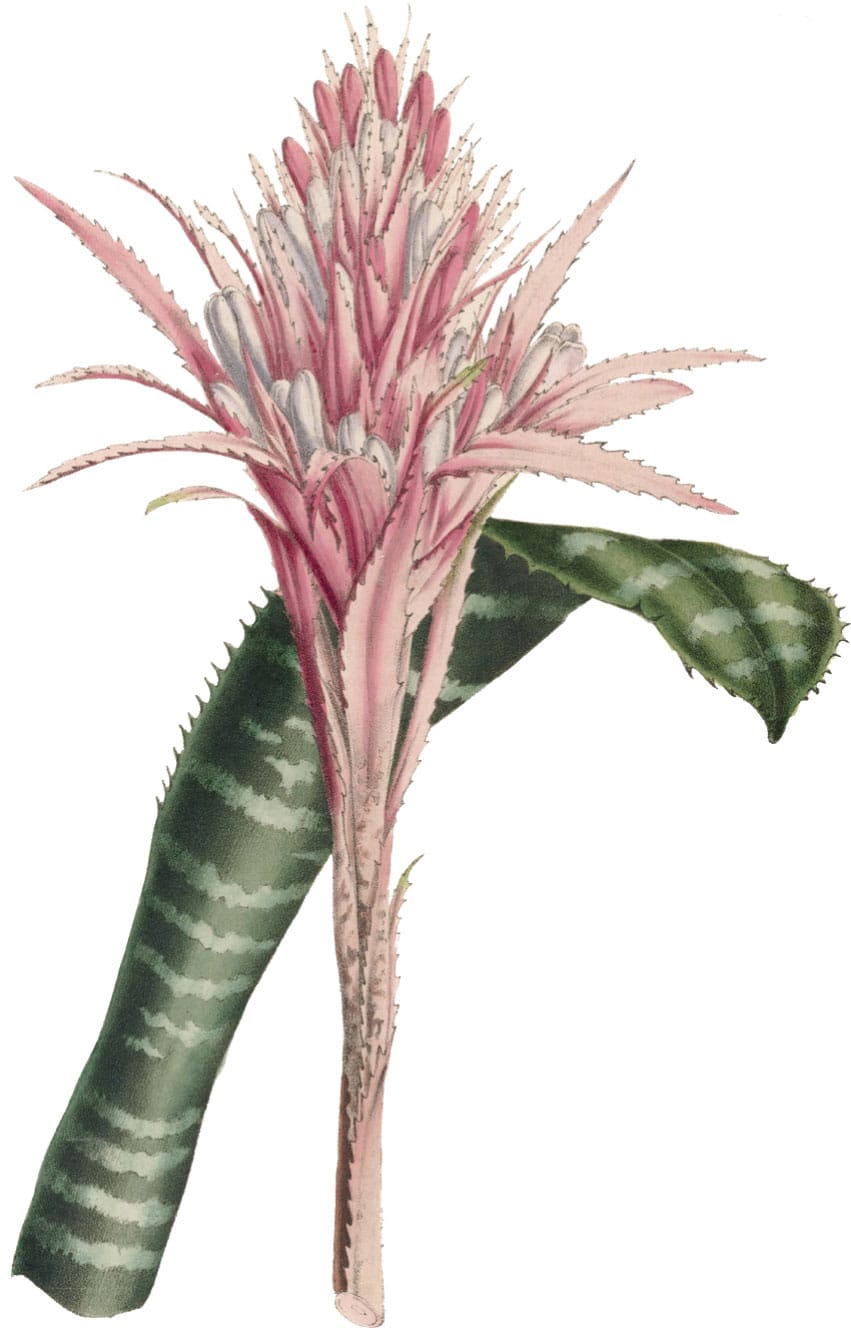
SUCCULENT
Black aeonium
Aeonium ‘Zwartkop’ aka black rose
Black aeoniums love a Mediterranean climate that is not too hot, cold, wet or dry. A branching shrub, it has stunning rosettes of purple, almost black, fleshy leaves and in spring diminutive, yellow, star-like flowers. Leaves may go green in winter when the light levels drop, but they will soon colour up as the days get brighter in spring.
WHERE TO GROW
Place on a windowsill from autumn to spring, but move out of direct sun in summer.
HOW TO GROW
Grow in very gritty, free-draining compost. In summer, high temperatures can make them dormant so keep plants almost dry; in other seasons, water when the compost feels dry. Feed monthly in winter with a diluted liquid fertilizer. Black aeonium dies after flowering, but a new plant will grow to replace it.
GROWING TIP
Easily propagated by snipping off a rosette with a few centimetres of stem. Let it dry out for a couple of days and then pot it up; the new plant will root quickly.
SUMMER TREAT
Black aeoniums can be placed outside on a sunny patio or terrace in the garden in summer.

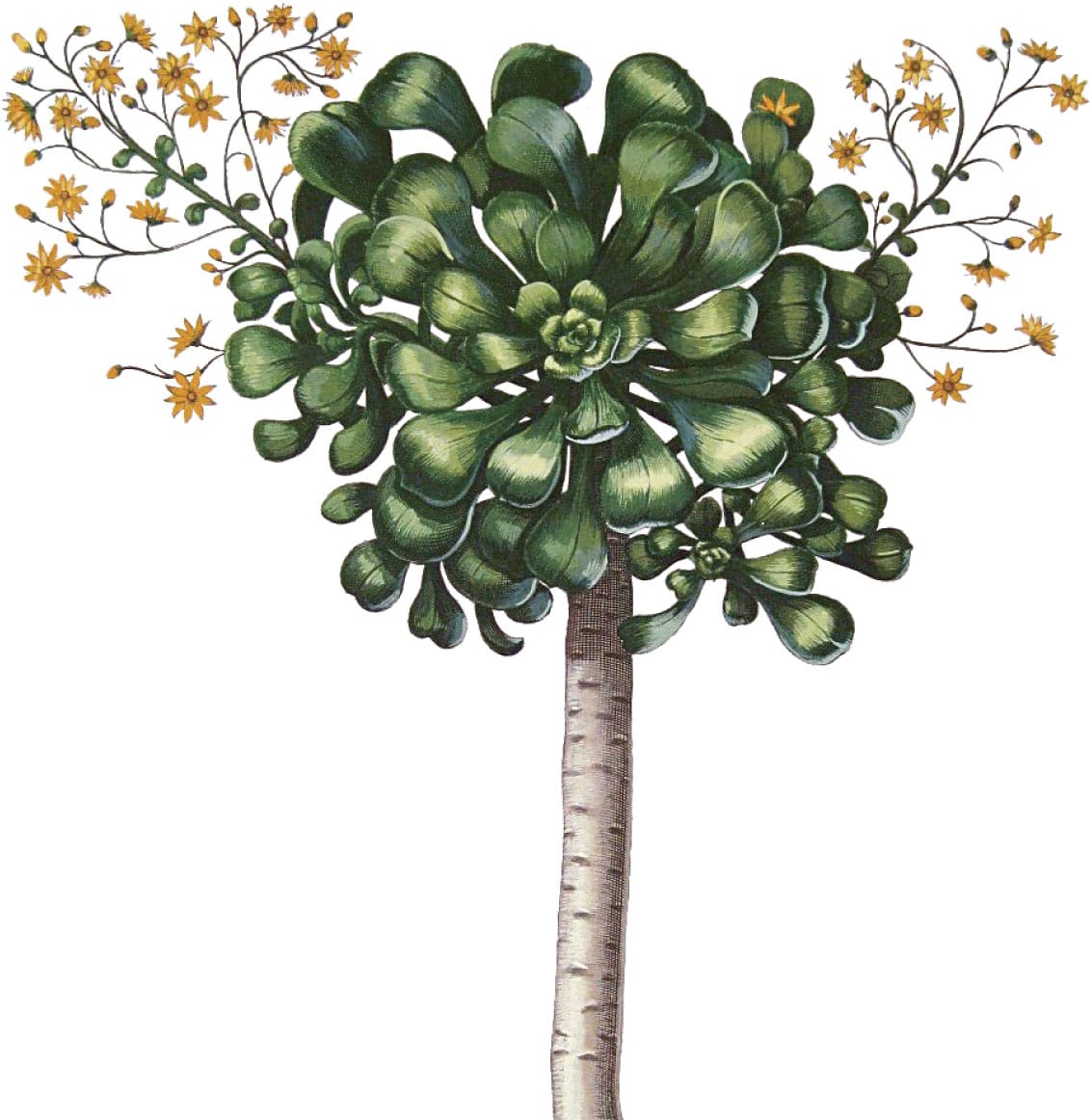
FOLIAGE
Chinese evergreen
Aglaonema commutatum
These are tough, easy plants that just need warmth and moisture to thrive. Their upright, dark green leaves are marbled with silver, and they make elegant centrepiece plants.
WHERE TO GROW
Chinese evergreen is tolerant of temperature change, provided that life does not get too cool, and so is ideal in a gloomy hall or at the back of a room.
HOW TO GROW
A humid atmosphere is important so mist your plant a couple of times a week or place it on a tray of wet pebbles if growing in a warm room. Feed twice a month from spring to autumn. Nip off any flowers that appear so that energy is concentrated in the leaves. Cut back tatty leaves in spring.
GROWING TIP
Repot plants every couple of years in spring into a slightly larger pot.
VIVID CHOICES
Look out for the new hybrids with their red, pink or peach colouring, such as Aglaonema ‘Pink Dalmatian’. They do, however, need a brighter spot, as too much shade makes their colours fade.
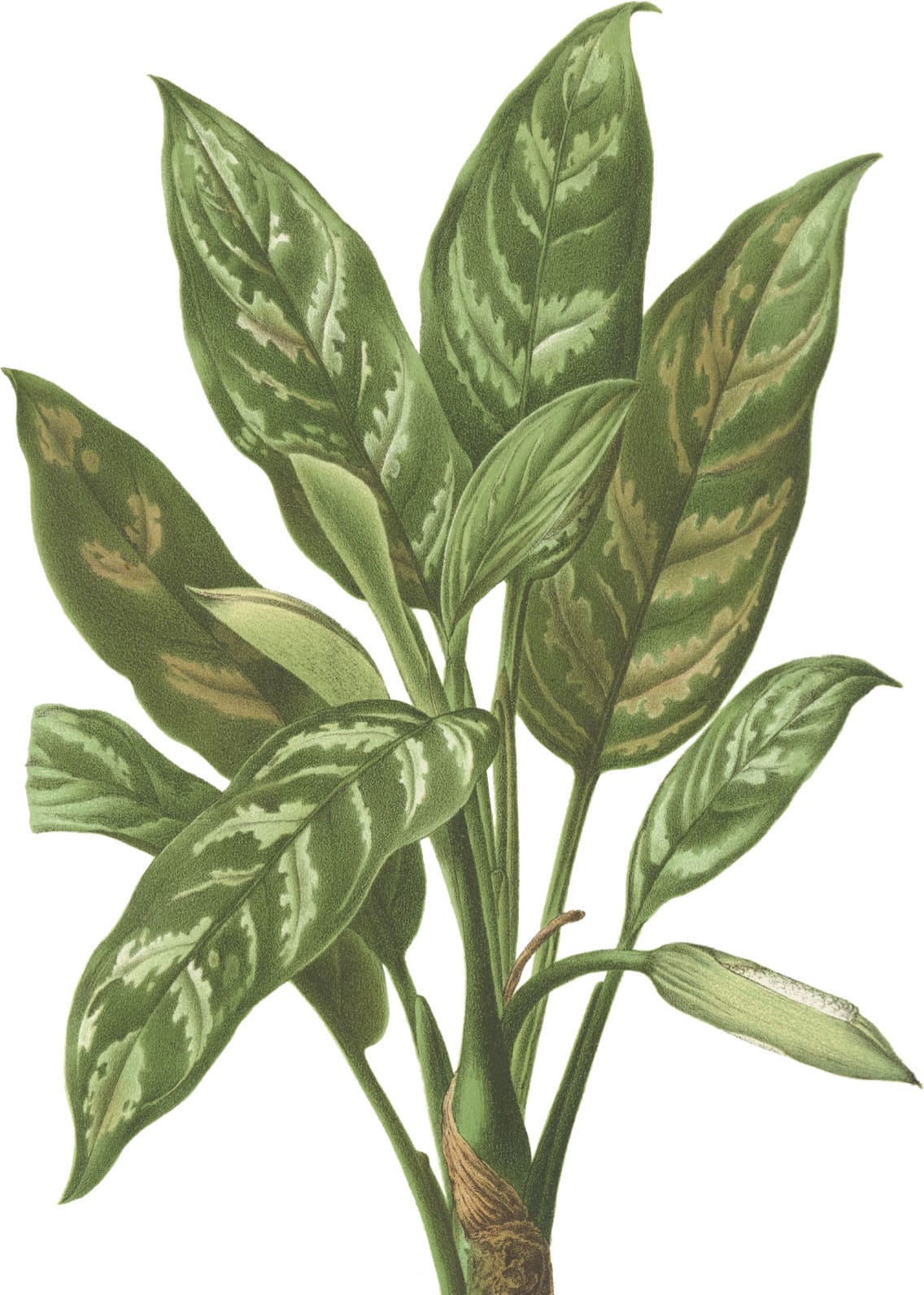
PROJECT 1
Several steps up
Stepladders are a simple and stylish way to display plants, and the taller they are the more plants you can show off. Make use of the different heights by placing a range of textures and leaf shapes where they can be grown best. Position the softer-leaved, friendlier plants such as ferns, asparagus fern and spider plants where they can be touched and where it does not matter if they are gently brushed against. Place more fragile or spikier specimens higher up.
PLANTS FOR THE LOWER SHELVES
Asparagus fern (Asparagus setaceus)
Boston fern (Nephrolepis exaltata)
Button fern (Pellaea rotundifolia)
Cretan brake fern (Pteris cretica)
Delta maidenhair fern (Adiantum raddianum)
Foxtail fern (Asparagus densiflorus)
Spider plant (Chlorophytum comosum ‘Variegatum’)
PLANTS FOR THE TOP SHELVES
Barbados aloe (Aloe vera)
Black aeonium (Aeonium ‘Zwartkop’)
Bunny-ears cactus (Opuntia microdasys)
Golden barrel cactus (Echinocactus grusonii)
Old man cactus (Cephalocereus senilis)
Pincushion cactus (Mammillaria)
Pineapple (Ananas comosus)

1 The soft, feathery foliage of asparagus fern cries out to be touched.
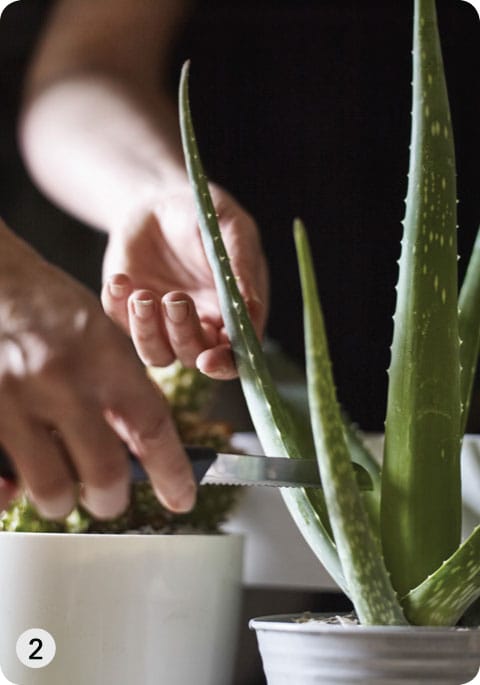
2 Soothe burnt skin with the cooling gel of Barbados aloe. Cut a leaf at the base and slice into segments, then hold each upside down to release the gel.
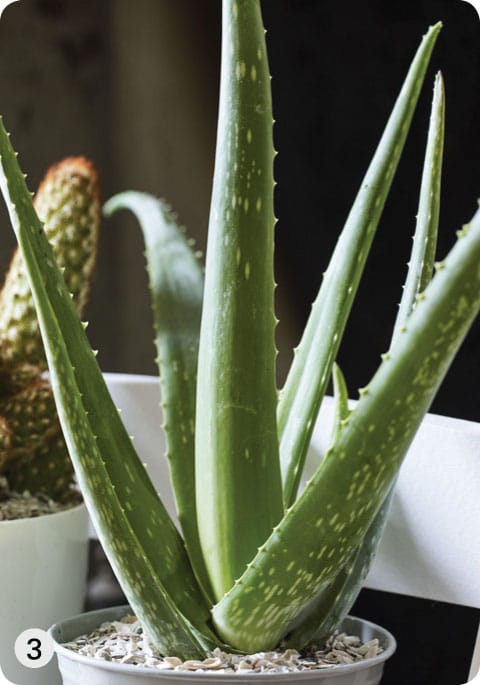
3 The succulent, spiky-edged leaves of Barbados aloe are easily bruised and broken, so place this plant at the top of the display ladder.
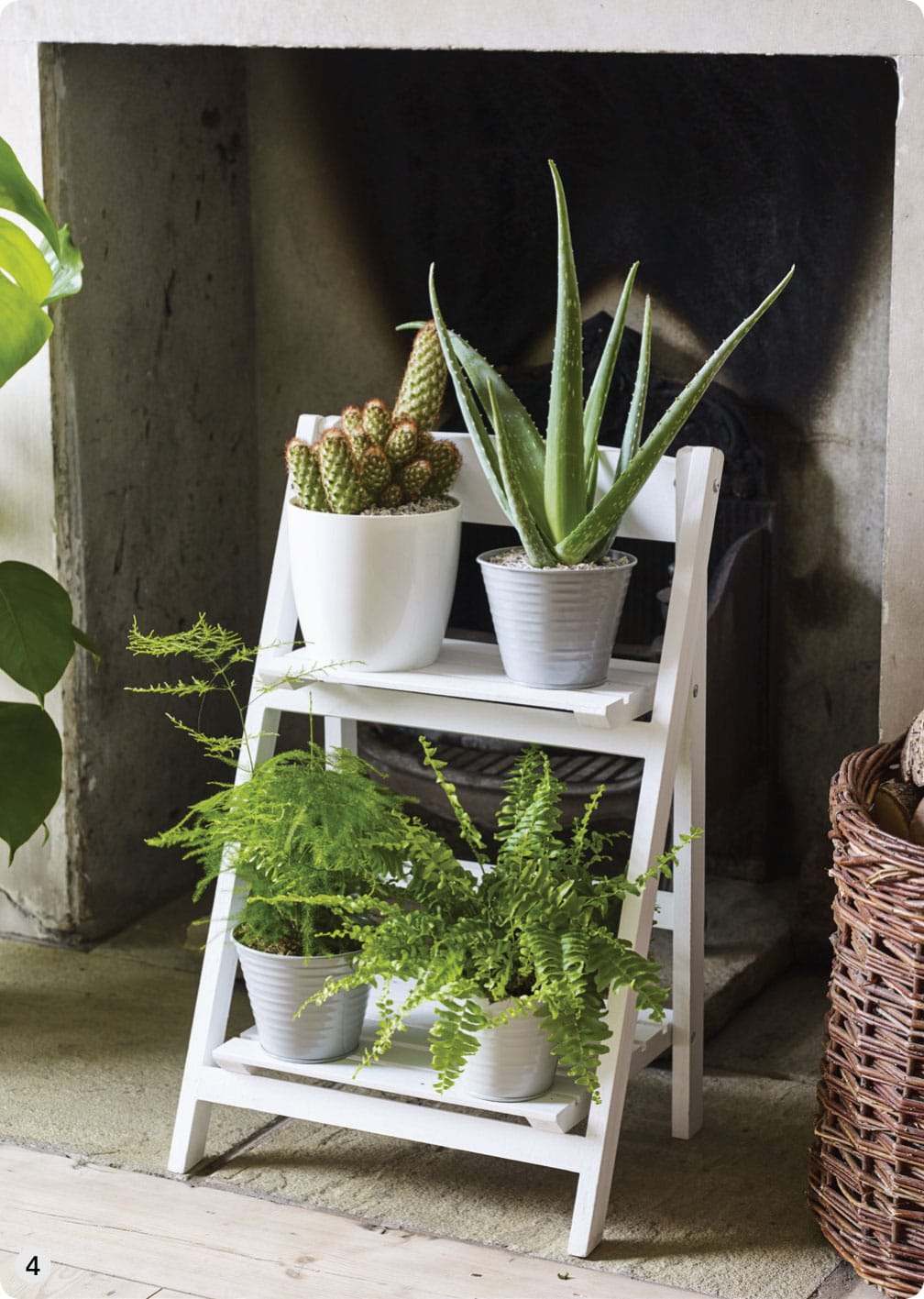
4 Fill each step with plants or else stagger them up the ladder.
FOLIAGE
Amazonian elephant’s ear
Alocasia x amazonica aka African mask, jewel alocasia
An exotic showstopper with huge, arrow-shaped leaves that are glossy, wavy and heavily marked along the veins and margins in white. These are real head-turners, but they are trickier to grow than many other house plants, demanding constant warmth, humidity and moisture.
WHERE TO GROW
Amazonian elephant’s ear prefers indirect light but not shade – if in too dark a spot, plants can become elongated and floppy. A warm, light kitchen or steamy bathroom would be ideal. Keep out of draughts and away from radiators.
HOW TO GROW
Mist leaves every day to keep humidity levels up. The rhizome will rot if kept too wet so water lightly, using rain- or filtered water, every couple of days from spring to autumn. In winter, allow the compost to dry out completely between watering. Feed with a balanced liquid fertilizer every few weeks from spring to autumn. Repot every couple of years.
GROWING TIP
Wipe the foliage regularly to keep it dust-free and glossy (see also Natural air fresheners).
CONFUSING NAME
Although Alocasia comes from the forests of Asia and Australia, A. x amazonica is a horticultural hybrid named after the nursery where it was developed – it is not from the Amazon!
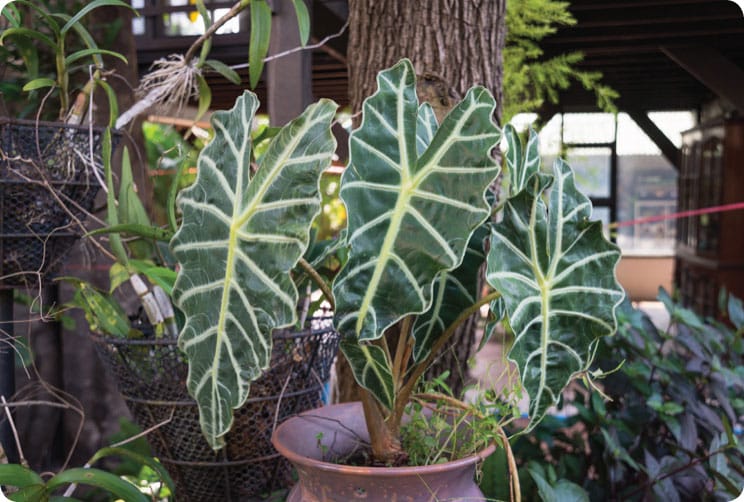
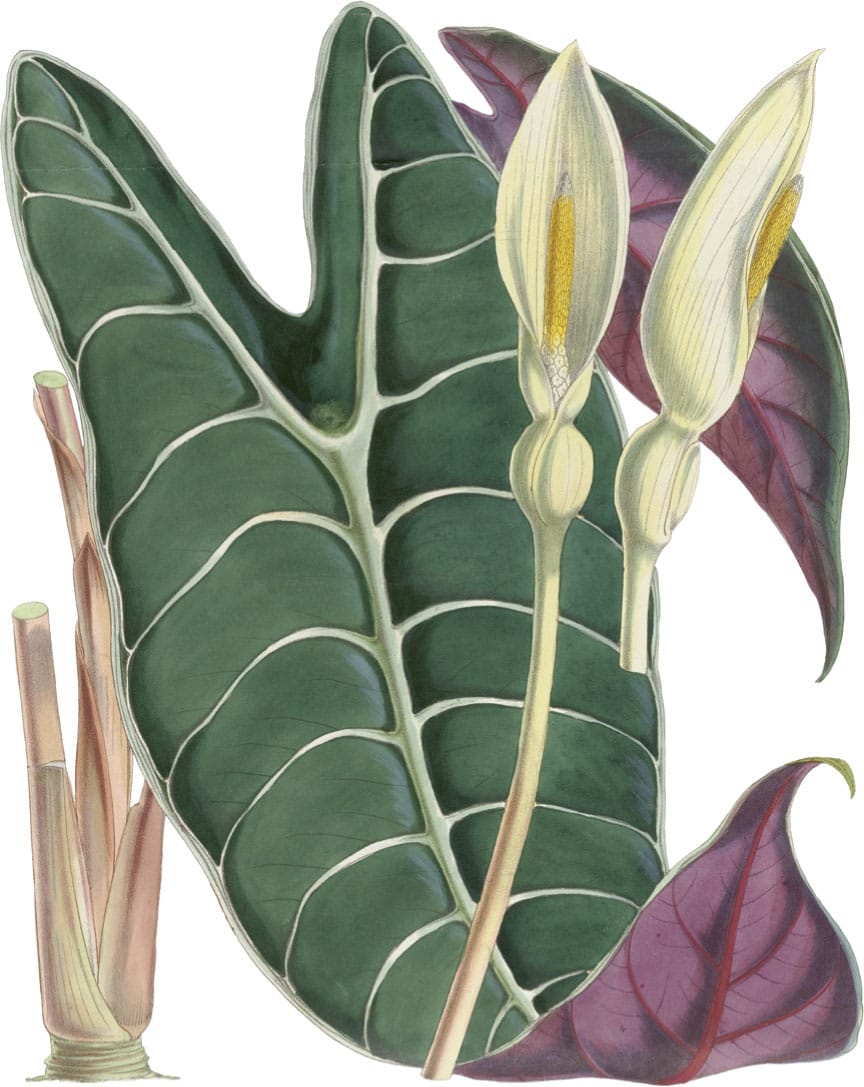
Alocasia longiloba
SUCCULENT
Barbados aloe
Aloe vera aka Curaçao aloe
Barbados aloes are tough plants, making them brilliantly undemanding and easy to look after. Their rosettes of spiky, fleshy leaves provide architectural interest and, if growing well, striking flower spikes of yellow blooms are borne in summer. Their plump leaves contain a translucent gel that soothes sore, irritated or burnt skin; to access it, just snip off a leaf (see here). Partridge breast aloe (A. variegata) is lovely, too, with blotchy, stripy leaves.
WHERE TO GROW
The fleshy leaves are used to arid conditions so a warm, sunny, even south-facing windowsill above a radiator suits Barbados aloe well.
HOW TO GROW
Grow in a free-draining, 50:50 mix of potting compost and grit, perlite or sand. Water well and then allow the compost to almost dry out before watering again. Over winter, reduce watering to just once a month. Feed a couple of times in the growing season.
GROWING TIP
Move plants outside in summer. The fresh air will give them a boost.
AIR FRESHENER
Barbados aloe is one of the top plants for purifying the air in your home, absorbing benzene and formaldehyde (see also Natural air fresheners).
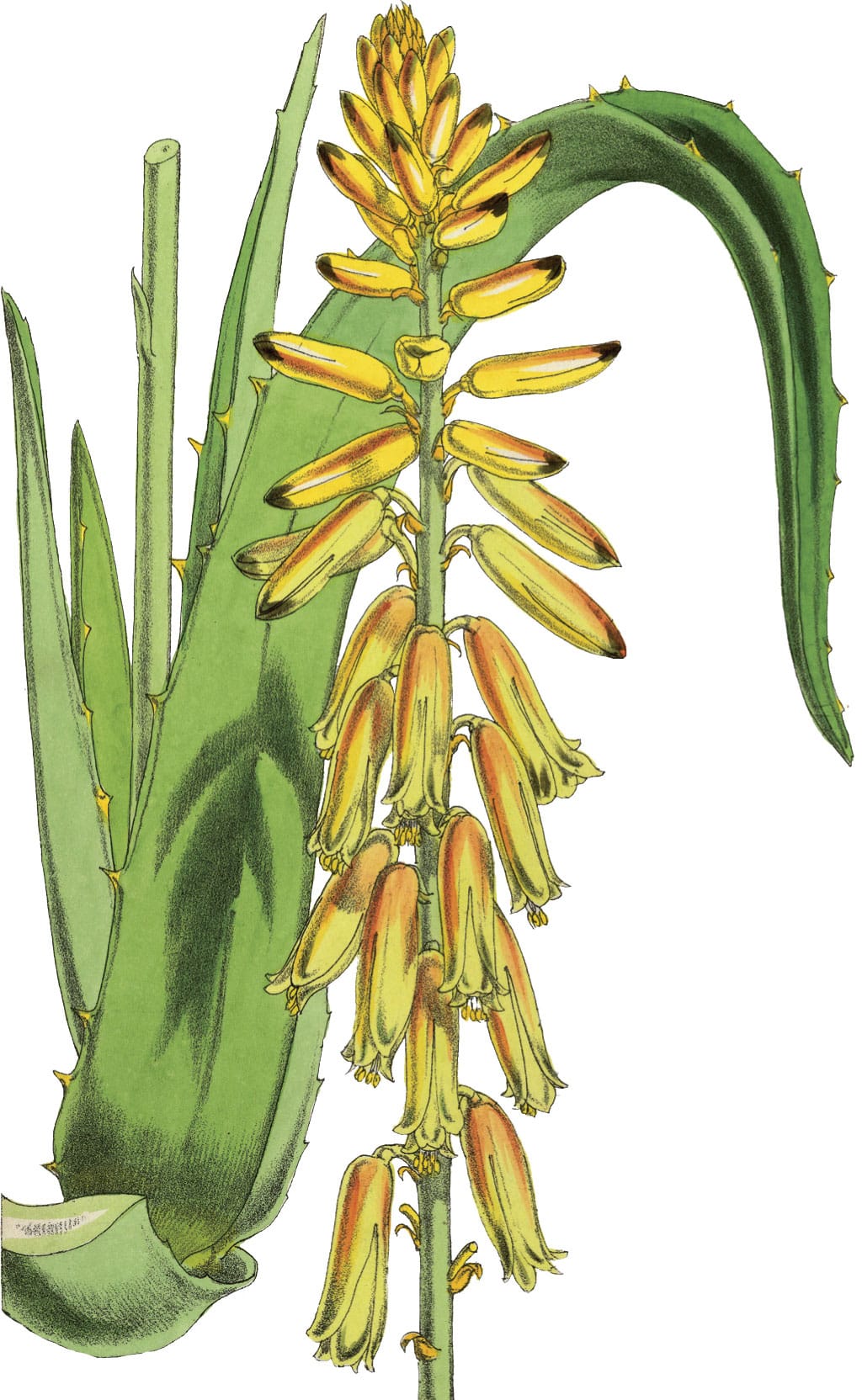
BROMELIAD
Pineapple
Ananas comosus
This knock-out feature plant has dense rosettes of prickly edged, strappy leaves. After yellow and purple flowers it will produce your very own pineapple fruit from the centre, although this is purely ornamental and inedible with a bitter taste. Ananas comosus var. variegatus has yellow-and-green-striped leaves.
WHERE TO GROW
The floor or a tabletop in a warm, bright room would make a better home than a shelf, which might cramp the arching leaves.
HOW TO GROW
Grow in a 50:50 mix of orchid compost and multipurpose compost. Plants need high humidity to fruit so mist every day or grow on a tray of wet pebbles. Water well in spring and summer and then reduce to keeping the compost just moist in winter. Give a liquid feed every two weeks in the growing season. Baby offsets at the base can be removed and grown on into new plants (see here).
GROWING TIP
If your plant is getting too large, restrict its size by growing it in a heavy stone pot 15cm/6in in diameter.
PROPAGATION USES
Although the pineapple growing from the middle is not edible, a new plant can be propagated from it – simply remove it, cut off the leafy top and trim off the bottom leaves, then pot on the stem. Water sparingly until new growth appears and then keep moist.

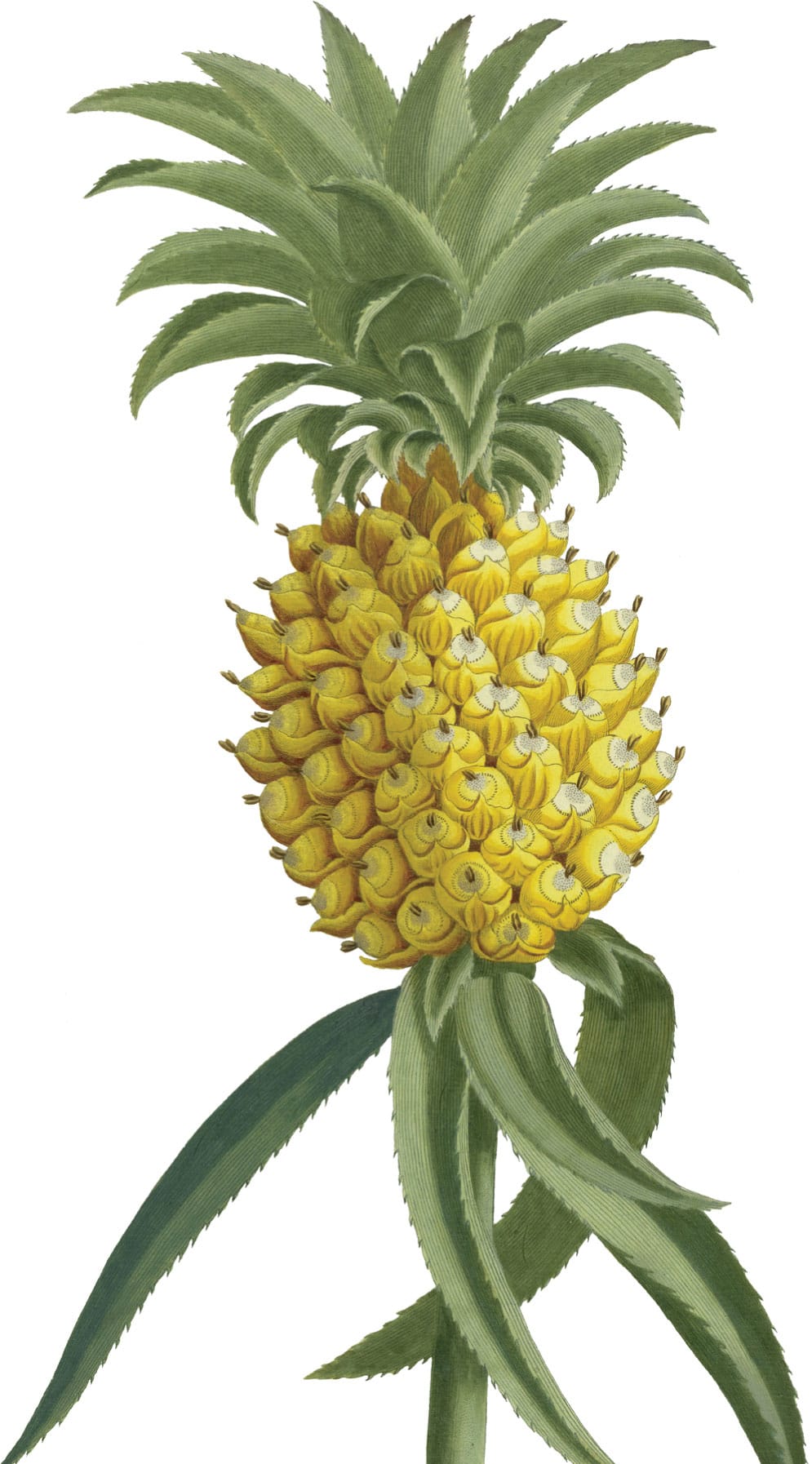
FOLIAGE
Tail flower
Anthurium andraeanum aka flamingo flower, lace leaf, oil cloth
Tail flowers are popular, stylish plants with dark, shiny leaves and dramatic flowers that can last year-round. This species has a bright red spathe with a white spadix covered in tiny, yellow flowers, but there are also stylish white, pink and darker burgundy forms such as A. Pink Champion and A. Black Queen. All are easy-going and quite simple to grow.
WHERE TO GROW
Tail flower requires warmth, high humidity and protection from direct sunlight so a bright bathroom is perfect.
HOW TO GROW
Water lightly every day if growing in a warm room and mist plants daily to keep the humidity levels high. Feed with a liquid fertilizer every other week in the growing season. When repotting, ensure the top of the root ball sits just above the surface of the compost; then cover with a layer of mulch so that it does not dry out.
GROWING TIP
Make sure your pot has good holes in the base so that water can drain away freely.
FLOWER PARTS
The ‘bloom’ of a tailflower is in fact a waxy, leaf-like spathe with a long flower spike, or spadix, in the centre.

FOLIAGE
Asparagus fern
Asparagus setaceus aka feathery fern
Despite its common name, asparagus fern is not a true fern but a member of the lily family and close relative of the edible asparagus. This elegant plant has delicate, lacy foliage and a bushy habit that starts to climb with the help of spines on the stem as the plant matures. Foxtail fern (A. densiflorus) bears dense, feathery, bottlebrush-like ‘fronds’ and is lovely in a hanging basket or tall planter or on shelving.
WHERE TO GROW
A light kitchen is a good choice because direct light scorches the leaves, but too little light makes the foliage fade to a jaundiced yellow. Plants can be trained up supports or left to scramble downwards from a shelf.
HOW TO GROW
Feed every month in spring and summer. Reduce watering in winter, allowing the top of the compost to dry out before watering again. When plants are root-bound, repot into a new pot just one size larger.
GROWING TIP
Keep plants looking their best by misting occasionally, particularly in winter when the central heating is on.
JOB DIVISION
The tiny, needle-like leaves are actually flattened stems or cladodes, and these perform photosynthesis rather than the true leaves, which are the minuscule scales between the cladodes and the stem.
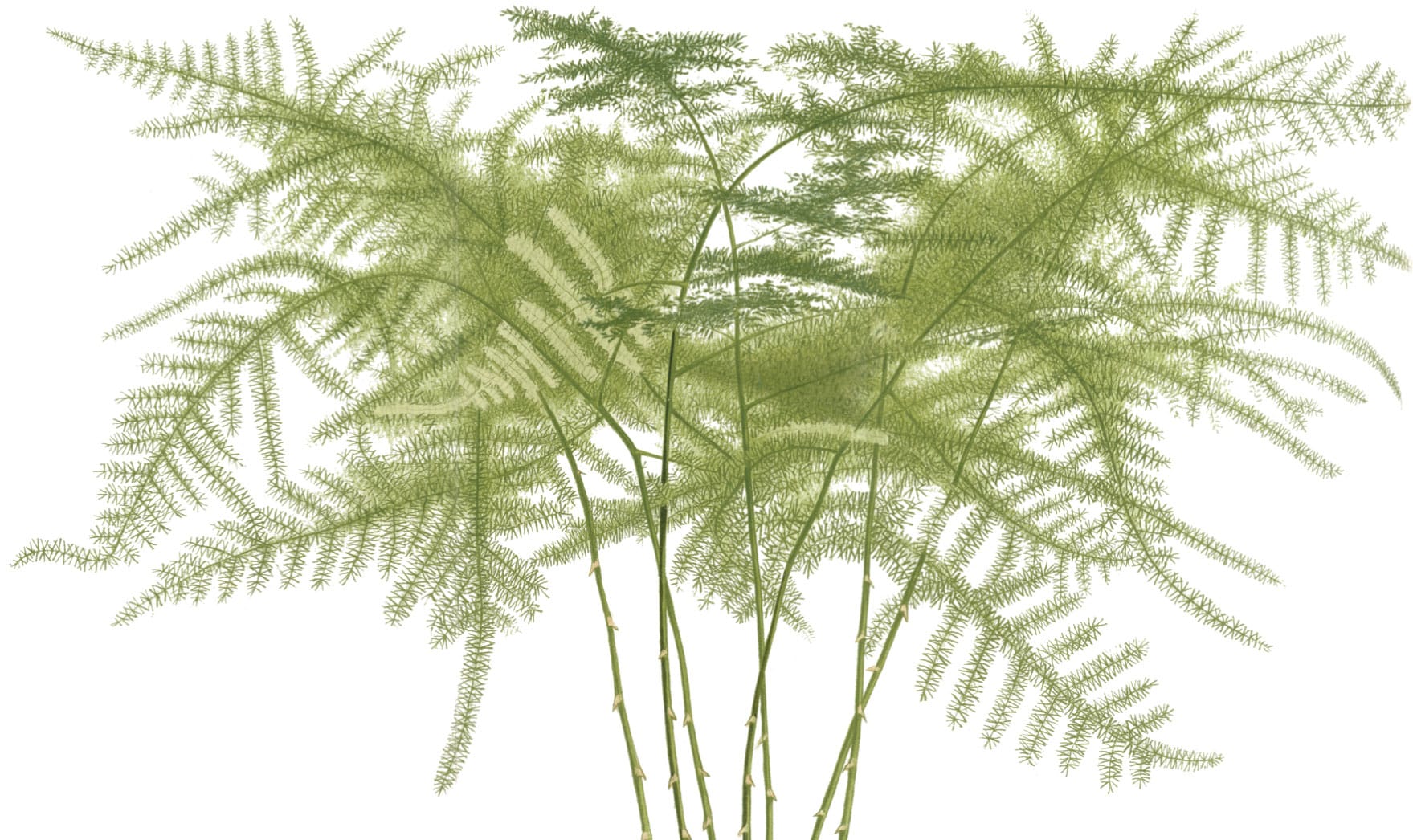
FOLIAGE
Cast-iron plant
Aspidistra elatior aka bar room plant
Tough as old boots, this stately plant is aptly named and has long been a household favourite for good reason – it thrives in dry shade. It bears strappy, dark green leaves and looks good when grown in groups. Look out for cultivars with interesting variegation in the form of striping or splashes, such as A. elatior ‘Asahi’.
WHERE TO GROW
These are forgiving plants that can cope with both warm or cold temperatures so grow them where more fussy plants will fail. Variegated plants need a lighter spot than plain-leaved species, if markings are not to fade.
HOW TO GROW
Cast-iron plant tolerates pretty much anything but overwatering, so make sure its pot and compost are free-draining and do not leave it sitting in water. Feed monthly in spring and summer.
GROWING TIP
Wipe leaves weekly with a damp cloth, to keep them dust-free (see Natural air fresheners).
GLORY DAYS REVIVED
A Victorian favourite, cast-iron plant fell out of favour but is back in fashion thanks to its easy-going nature.

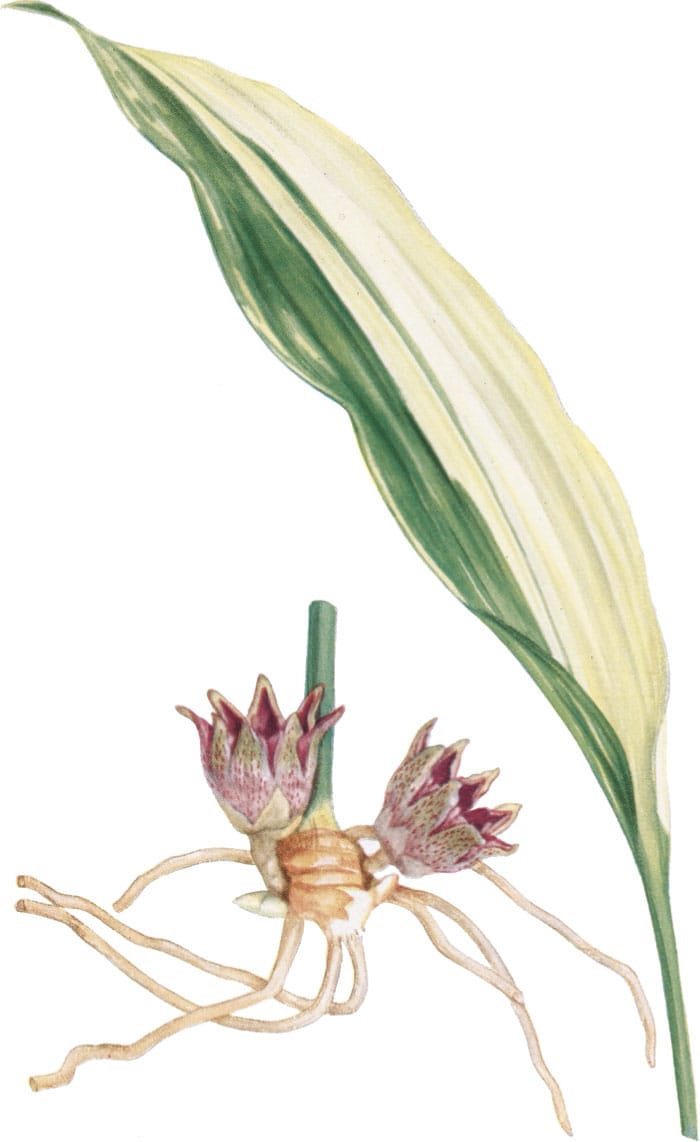
FERN
Bird’s nest fern
Asplenium nidus aka shield fern
Handsome rosettes of shiny, strappy fronds form an upright shuttlecock with new baby fronds curled up in the base. The fronds of A. nidus ‘Crispy Wave’ are attractively crinkled and ruffled along the edges.
WHERE TO GROW
A north- or east-facing window is ideal, provided that this easy-to-grow plant is out of draughts and bright light. Its need for humidity makes the bathroom the perfect choice.
HOW TO GROW
Mist plants every day, particularly in winter, or place each on a saucer of wet pebbles. Feed every other week from spring to early autumn. Wipe the fronds regularly to keep them shiny and free from dust (see Natural air fresheners). Repot in spring every couple of years.
GROWING TIP
Water the edge of the compost rather than over the fronds, which can cause the rosette to rot.
FROND FUNCTION
Unlike in other ferns, the fronds are not divided but entire and are excellent at helping to purify the air.
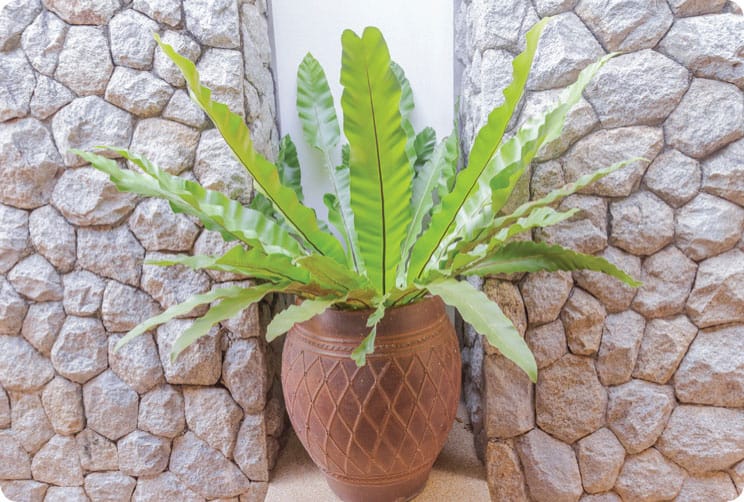
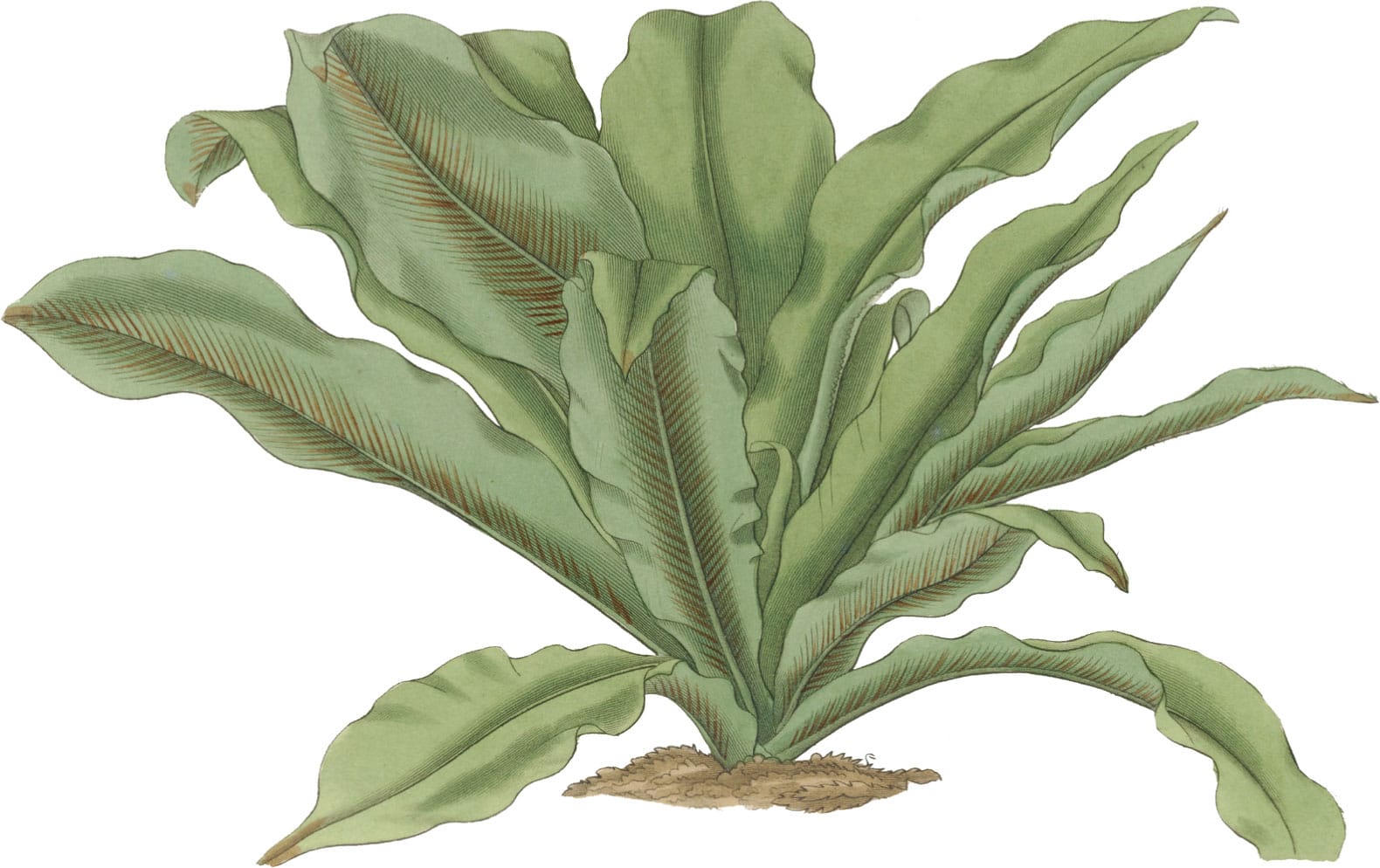
PALM
Ponytail palm
Beaucarnea recurvata aka elephant’s foot
Ponytail palm is a truly star plant with its distinctive bulbous stem, or caudex, and shock of narrow leaves. At home in the arid deserts of Mexico, the swollen caudex is an adaptation for storing water during drought, so this easy-to-grow plant will forgive a long holiday or missed watering.
WHERE TO GROW
Give the ponytail palm a bright, sunny spot.
HOW TO GROW
Grow in a free-draining compost with an equal quantity of perlite or grit mixed in. Water plants once a week in the growing season. Allow plants to dry out completely over winter. Being slow-growing – it can live for hundreds of years in the wild – ponytail palm does not need repotting very often.
GROWING TIP
This plant likes a snug home in a pot only slightly bigger than the width of its stem.
COMMON NAME ANOMALY
The ponytail palm is actually closely related to the yucca (see here).

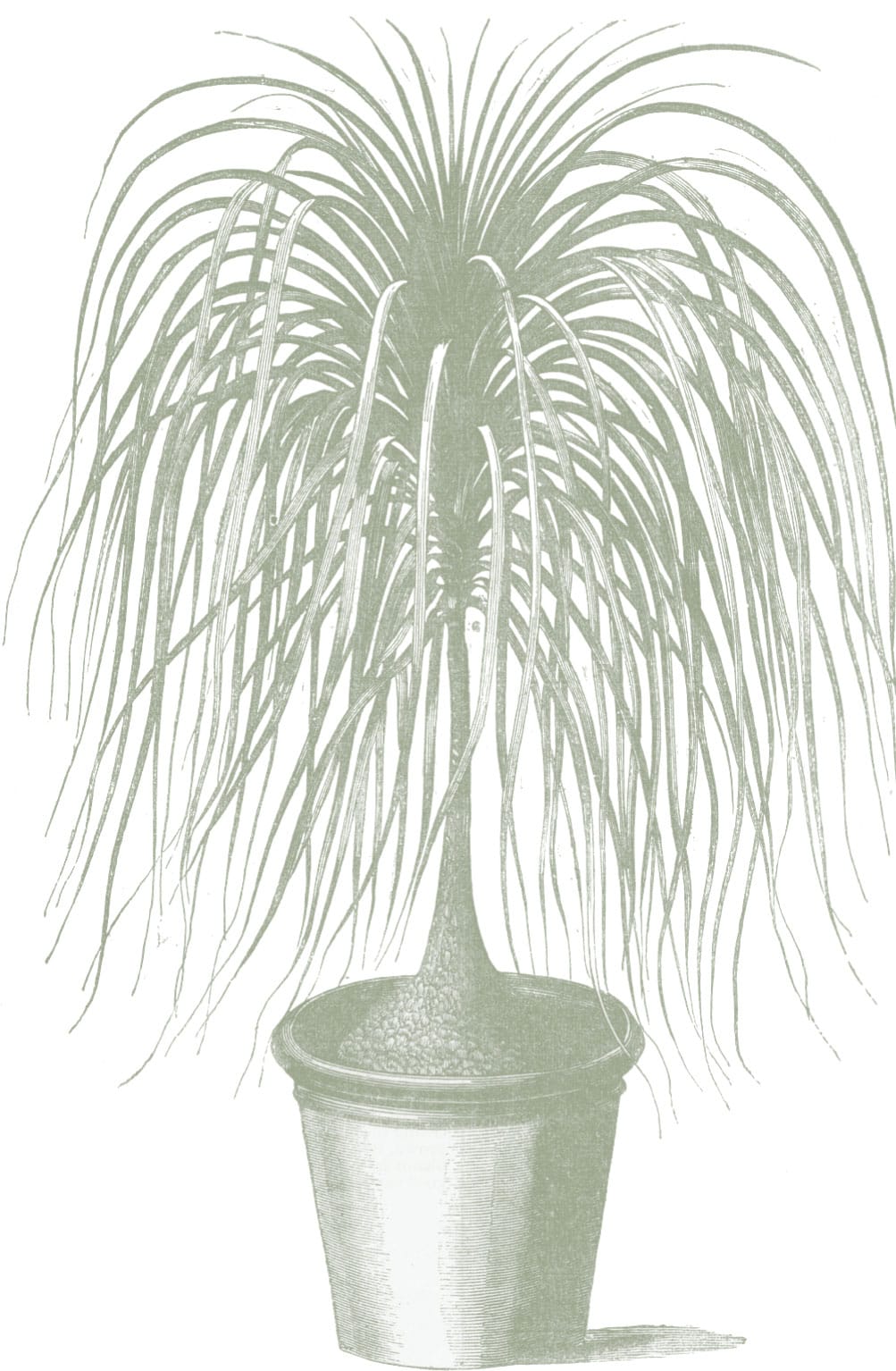
PROJECT 2
Making a decorative screen
Windowsills are a predictable place to grow house plants, but why not use these plants as a screen to provide privacy or to mask an unsightly view? Such a green barrier is particularly useful in bathrooms and bedrooms, or any room that is overlooked, and it will instill a feeling of calm.
Plants that have an upright habit but will not block out too much light are key to a successful decorative screen, so opt for plants such as snake plant, cast-iron plant, fern arum and asparagus fern – choosing your plants according to the light levels at your window.
Traditional window boxes work well – just be sure to block off any drainage holes with silica gel to stop water leaking out, or else line your sill with plants in individual pots. If using a trough as a cover pot, drop your plants into it, staggering them so they make a dense screen.

1 When planting into a trough, add a layer of gravel or grit to the base to help with drainage and to improve air flow. Then half fill with compost. Remove each plant (here, Sansevieria bacularis ‘Mikado’) from its pot and set so it is at the correct depth.
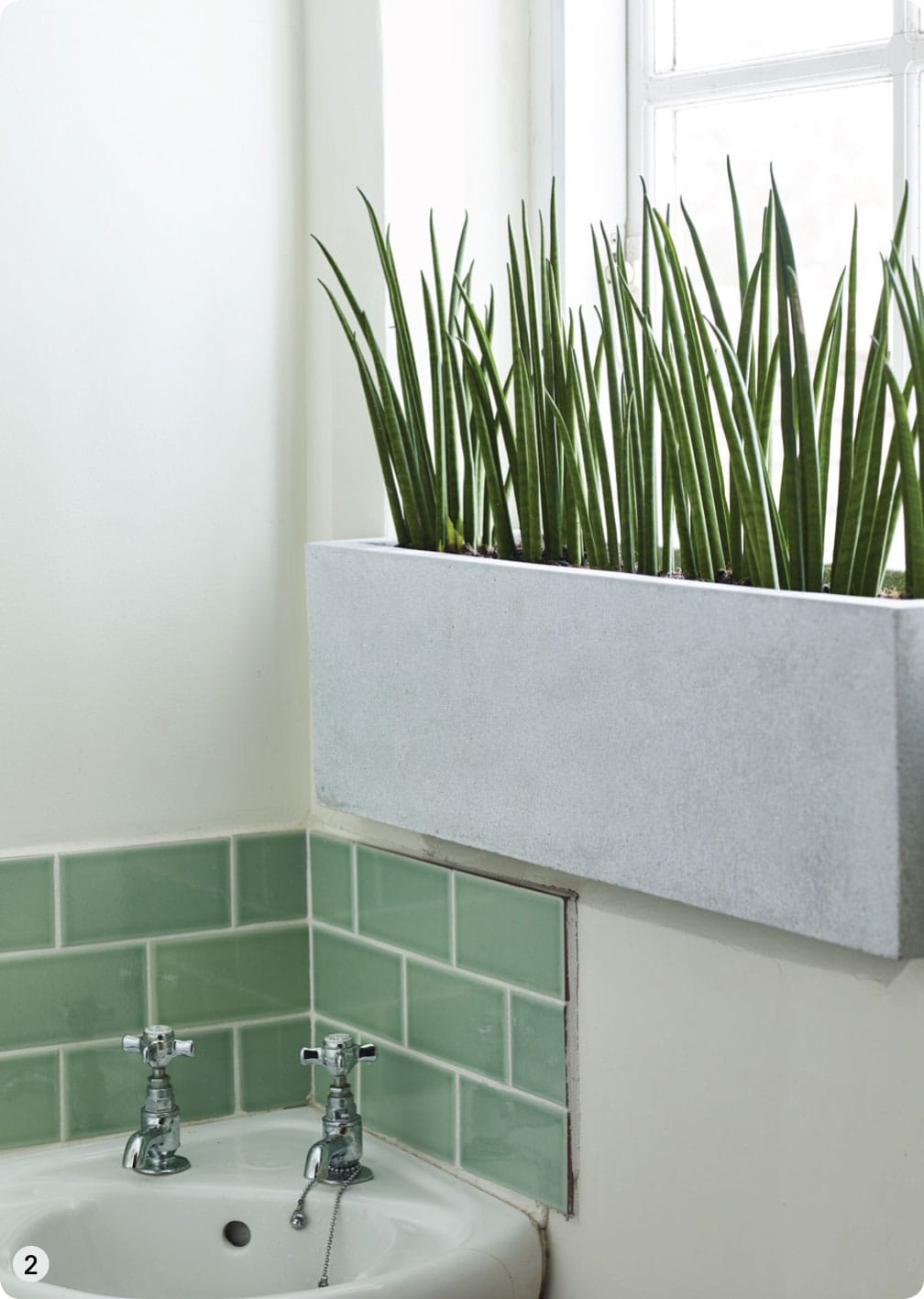
2 Insert the remaining plants, then fill and top off with compost and firm down. Water the plants in well.
FOLIAGE
Painted-leaf begonia
Begonia species
Very different beasts to their brash bedding plant cousins these are beautiful foliage plants with bold spots and swirls, stripes and splashes. There are hundreds of forms to choose from, many hybrids of B. rex, but there are also cane-stemmed types, which are taller and have larger flowers.
WHERE TO GROW
These are plants that need to be seen close up, so grow them in a prominent spot on a table or sideboard that is away from draughts and the drying heat of a radiator, particularly in winter.
HOW TO GROW
Raise humidity around plants by placing each on a saucer of pebbles and water rather than misting the leaves, which are susceptible to powdery mildew. Feed every couple of weeks in the growing season with a nitrogen-rich fertilizer, switching to a high-potash one when buds appear on forms grown for their flowers. Allow the compost to dry out between watering in winter.
GROWING TIP
Cane-stemmed types may need staking to stop plants flopping over.
COMMON ANCESTOR
Begonia semperflorens (now called B. cucullata), illustrated here, is the ancestor of the common bedding begonia, first described in 1829.

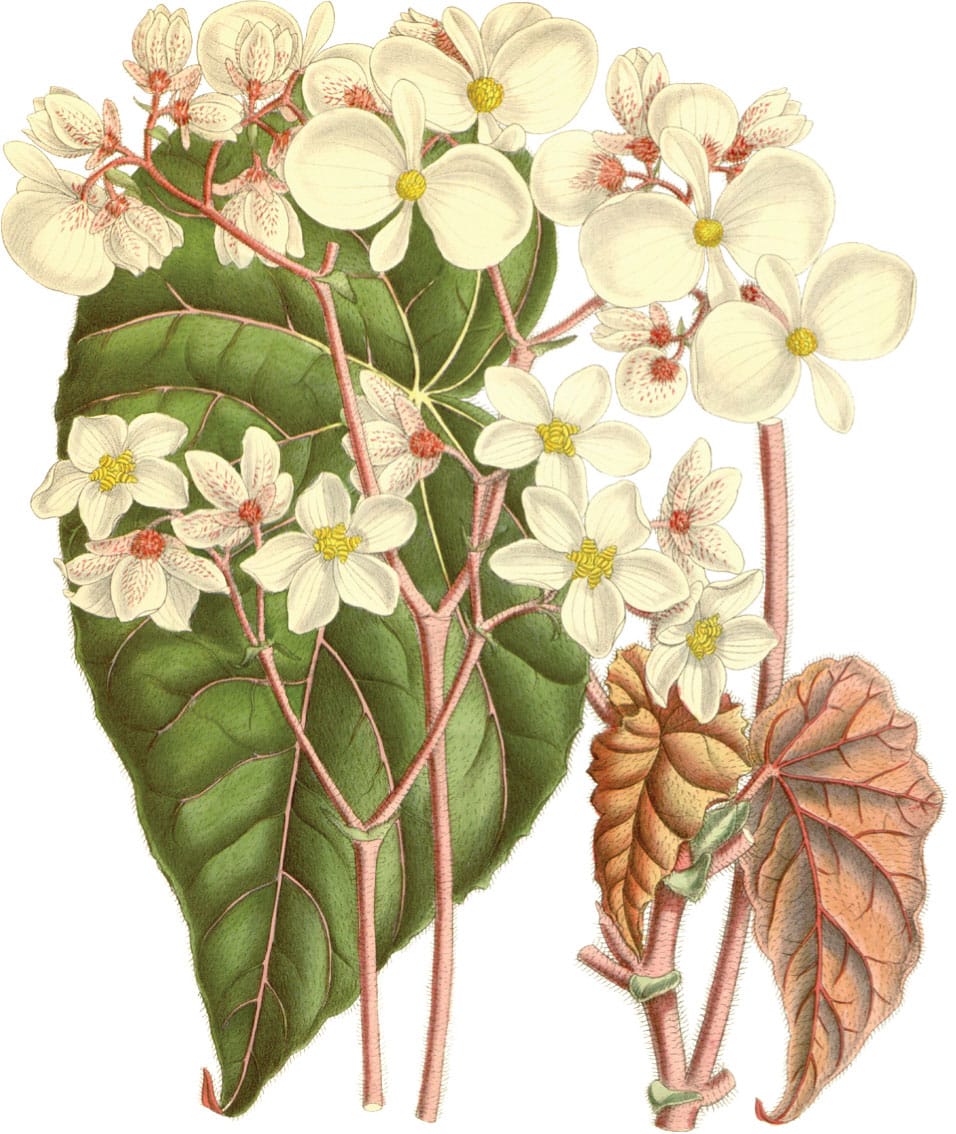

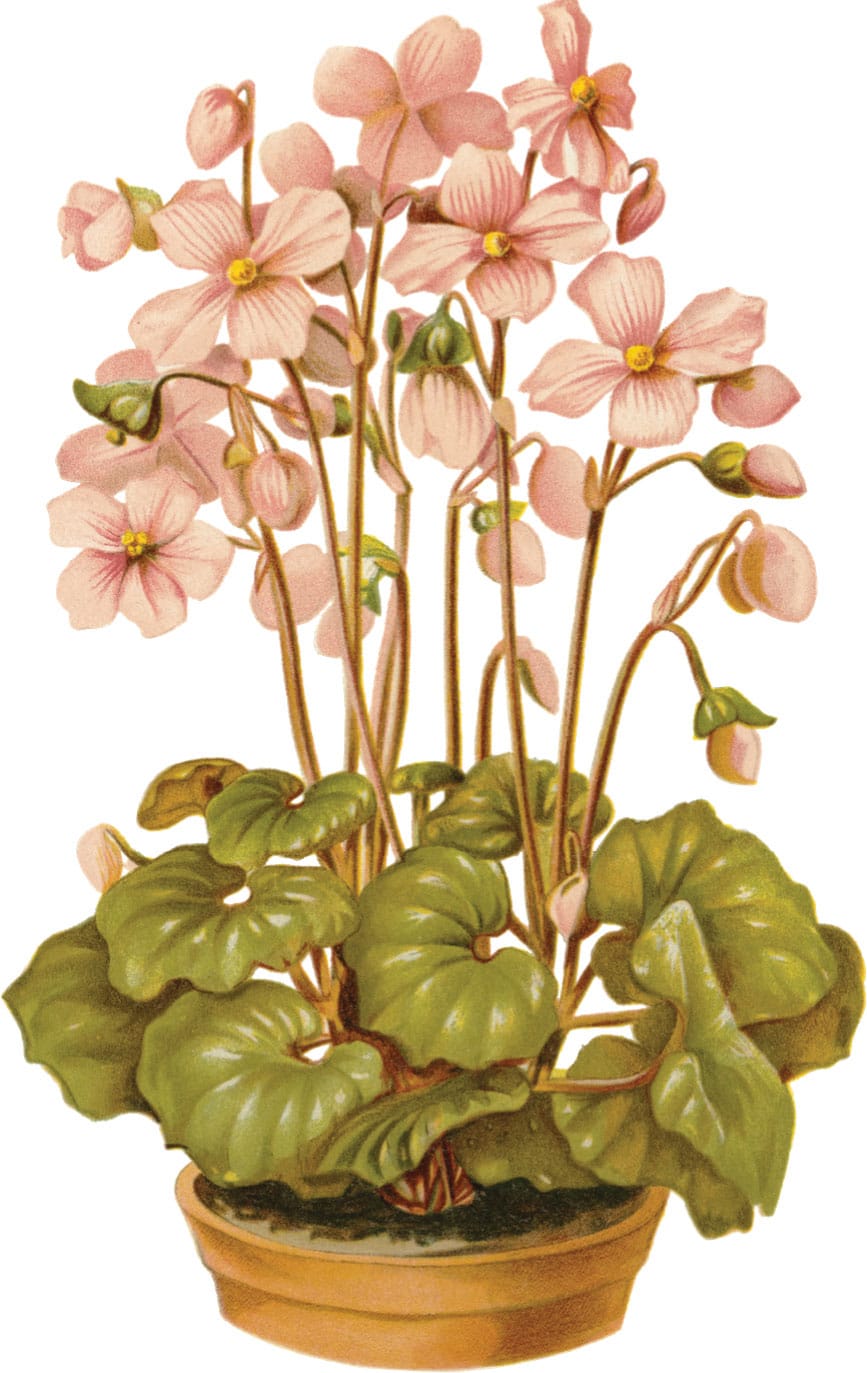
CACTUS
Old man cactus
Cephalocereus senilis aka monkey cactus, old man’s head
This woolly cactus with its white, old man’s beard is a favourite among house plant growers, thanks to its striking, columnar looks. The hairs insulate it against frost and extreme heat, and may also conceal formidable spines.
WHERE TO GROW
Give this a sunny windowsill – the brighter the spot the more the hairs (which protect it from the heat) will grow, but shield it from the intense heat of the sun through the glass in summer.
HOW TO GROW
Use a coarse, free-draining compost mix (see Compost mixes). Water from the bottom to protect old man cactus from rotting, and in winter water only every few weeks. Repot plants every other year, in spring.
GROWING TIP
Too little light causes the stem to elongate and grow thin so keep it in a bright spot, especially in winter.
BALDING PATTERN
As the plant ages and its skin thickens and increases its ability to withstand temperature extremes, old man cactus will start to lose its hairs.

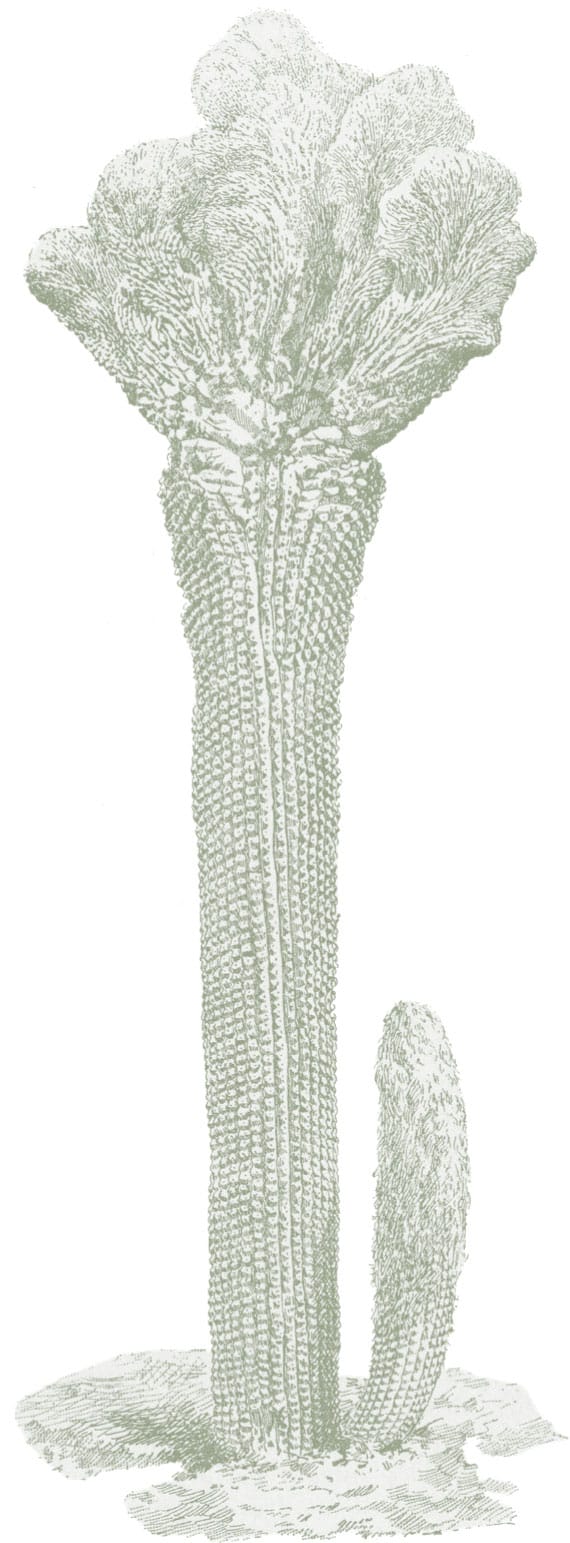
SUCCULENT AND FOLIAGE
String of hearts
Ceropegia linearis subsp. woodii aka hearts on a string, rosary plant, sweetheart vine
This is a lovely-looking, trailing vine with delicate, cotton-like stems and heart-shaped leaves. It is surprisingly tough, easy to grow and very drought-tolerant thanks to the root tubers it develops to store water as it matures. If happy, string of hearts will flower in late summer, producing little, pink, tubular blooms.
WHERE TO GROW
Give this plant pride of place on a shelf or in a basket, where it can tumble down and show off. It is happy in a humid spot so a bathroom would suit it well. Although string of hearts prefers a bright spot, it copes with shade but its lacy leaves may lose some of their pretty colouring. It also tolerates temperature change.
HOW TO GROW
Grow in a free-draining mix of 50:50 potting compost and perlite. Feed every couple of weeks in spring and summer. In winter, water only when the compost is almost completely dry. Repot when the plant is root-bound.
GROWING TIP
Snip off stems and pot up (see Propagation by stem cuttings); such cuttings root easily.
DUE REWARD
Discovered hanging from rocks at 500m/1,640ft in South Africa by the curator of Durban Botanic Garden John Medley Wood in 1881, string of hearts was sent to RBG Kew in 1894 and was named after him.

PALM
Parlour palm
Chamaedorea elegans aka dwarf mountain palm
A favourite in the parlours of the Victorians and popular ever since thanks to its easy-going nature and tolerance of low light levels, this is one of the easiest feature plants you can grow. It bears feathery fronds and develops a compact, slender habit. If it is happy, tiny, yellow sprays of flowers will appear once it is mature.
WHERE TO GROW
This slow-growing palm is perfect for a shady spot in any room – too harsh a spot will turn the leaves yellow. It likes humidity so keep it away from the drying heat of radiators, particularly in winter.
HOW TO GROW
Mist the leaves regularly, particularly in winter when the air will be dry. Feed monthly in the growing season. In winter, reduce watering so that the compost is almost dry. Cut out any brown fronds at their bases.
GROWING TIP
Wash dust from the fronds by standing the plant under a tepid shower or outside in summer rain during the warmer months.
HEALTH BENEFITS
The parlour palm is on NASA’s top 50 plants for cleaning the air because of the way its lush fronds aid this process (see also Natural air fresheners).

FOLIAGE
Spider plant
Chlorophytum comosum ‘Variegatum’
A seventies’ favourite but still a timeless classic, spider plant is one of the easiest house plants going. Its striped, arching leaves and endearing, dangling offsets give it its distinctive look.
WHERE TO GROW
Being native to tropical and southern Africa where it grows on the forest floor, spider plant is tolerant of both light and shade. However, you should avoid direct sunlight, which will scorch the leaves, while at the same time appreciating that a shadier home will produce fewer plantlets.
HOW TO GROW
Thanks to its tuberous root, the odd period of drought in the growing season will do no harm. Water sparingly in winter, allowing the compost to dry out completely before watering again. Feed plants every 2–3 weeks in spring and summer. Repot every couple of years when it becomes pot-bound.
GROWING TIP
In the wild, baby plantlets root whenever they touch soil. Grow on such plantlets by planting them into individual pots of compost (see here).
CHOICE SETTINGS
Spider plant is perfect for a hanging basket or when grown cascading over a shelf.

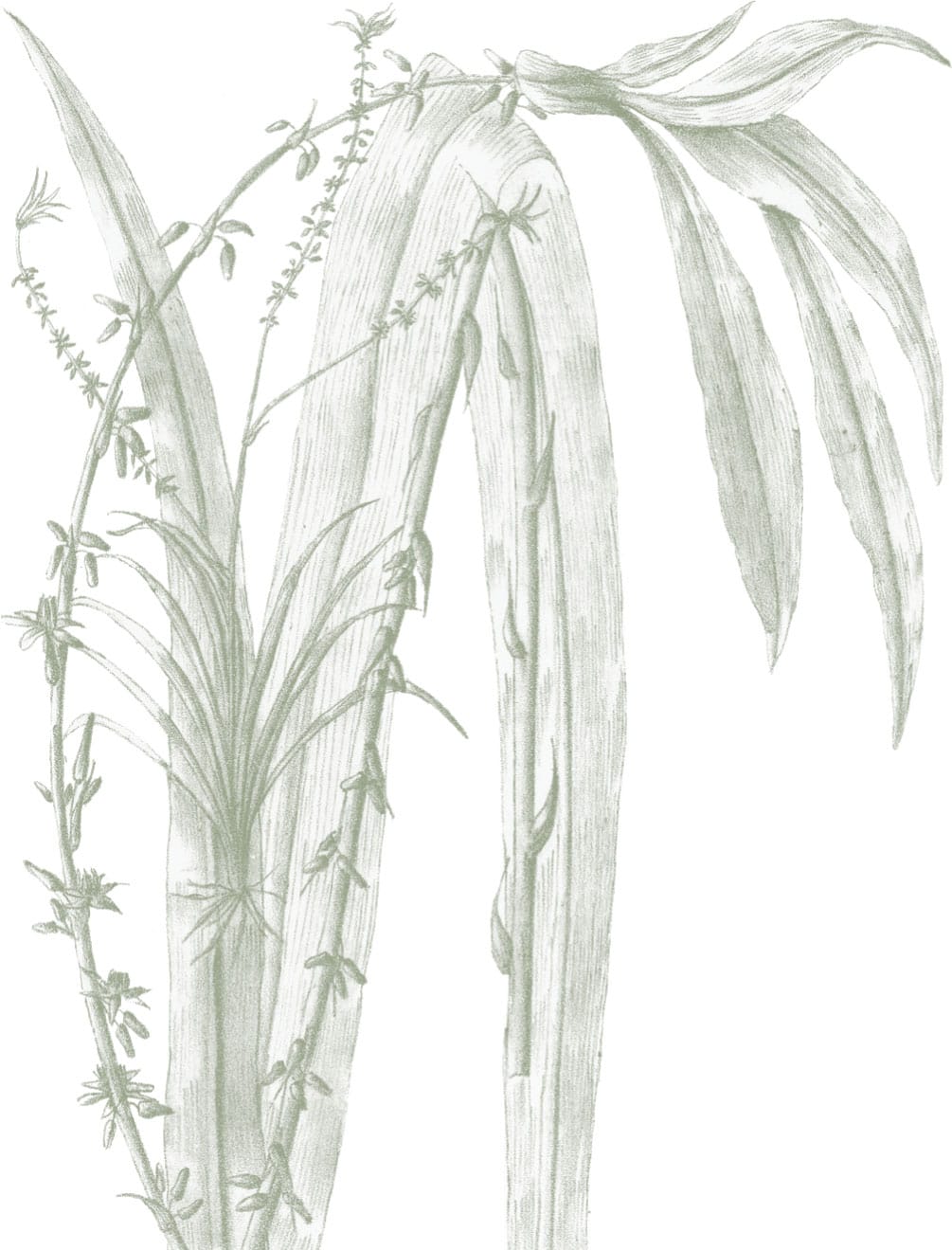
FLOWERING
Natal lily
Clivia miniata
Natal lilies are beautiful, clump-forming plants. Their strappy, deep green leaves form a showy, layered bulbous stem as they grow. Jubilant, tall spikes of trumpet flowers in orange or red are borne from mid-spring to late summer and are followed by large berries containing fleshy seeds. Look for butter-yellow-flowered C. miniata var. citrina. Natal lily exudes an irritating sap so wear gloves when handling the plants.
WHERE TO GROW
Through spring and summer grow it in a warm room, but during winter transfer it to a cooler spot, at just 10°C/50°F, to allow the plant to rest and to promote flowering. Keep away from the dry heat of a radiator.
HOW TO GROW
Plant so that the neck of the bulbous root is just above the surface of the compost. Give a low-strength general feed every month from spring to autumn. Stop watering in winter and move to a cooler room until flower buds are spotted; then place back in the warmth, c.16°C/61°F. Cut flower spikes off at the base as they fade.
GROWING TIP
Natal lily grows best when snug around the roots so do not repot unless it is literally bursting from its pot.
ROYAL CONNECTION
In 1828 Kew botanist John Lindley named the genus Clivia in honour of a governess of Queen Victoria – the Duchess of Northumberland, Charlotte Percy (née Clive) – who was the first to grow and bring Clivia to flower.

SUCCULENT
Jade plant
Crassula ovata aka money tree, friendship tree
One of the easiest and low-maintenance house plants, jade plant is extremely tolerant of neglect and almost indestructible thanks to its thick, fleshy, oval leaves. When given plenty of light, tiny, star-shaped, pink or white flowers will appear in late winter and spring. The silver jade Crassula arborescens is similar, but has silvery leaves.
WHERE TO GROW
A warm, sunny, south- or west-facing windowsill suits jade plant well and promotes the pretty, red edges to the leaves.
HOW TO GROW
Grow in a free-draining mix of equal quantities of potting compost and perlite. Water sparingly in the growing season and hardly at all in winter, just often enough to stop the leaves shrivelling and drying out. Feed once in spring and again in summer.
GROWING TIP
Jade plant grows according to the size of its pot, but, whichever size you choose, make it a sturdy one as plants can be top-heavy.
GOOD GIFT
Jade plant is simple to share by propagating from stem or leaf cuttings (see here). Let cuttings dry out and the wound callus over before potting on into moist compost.

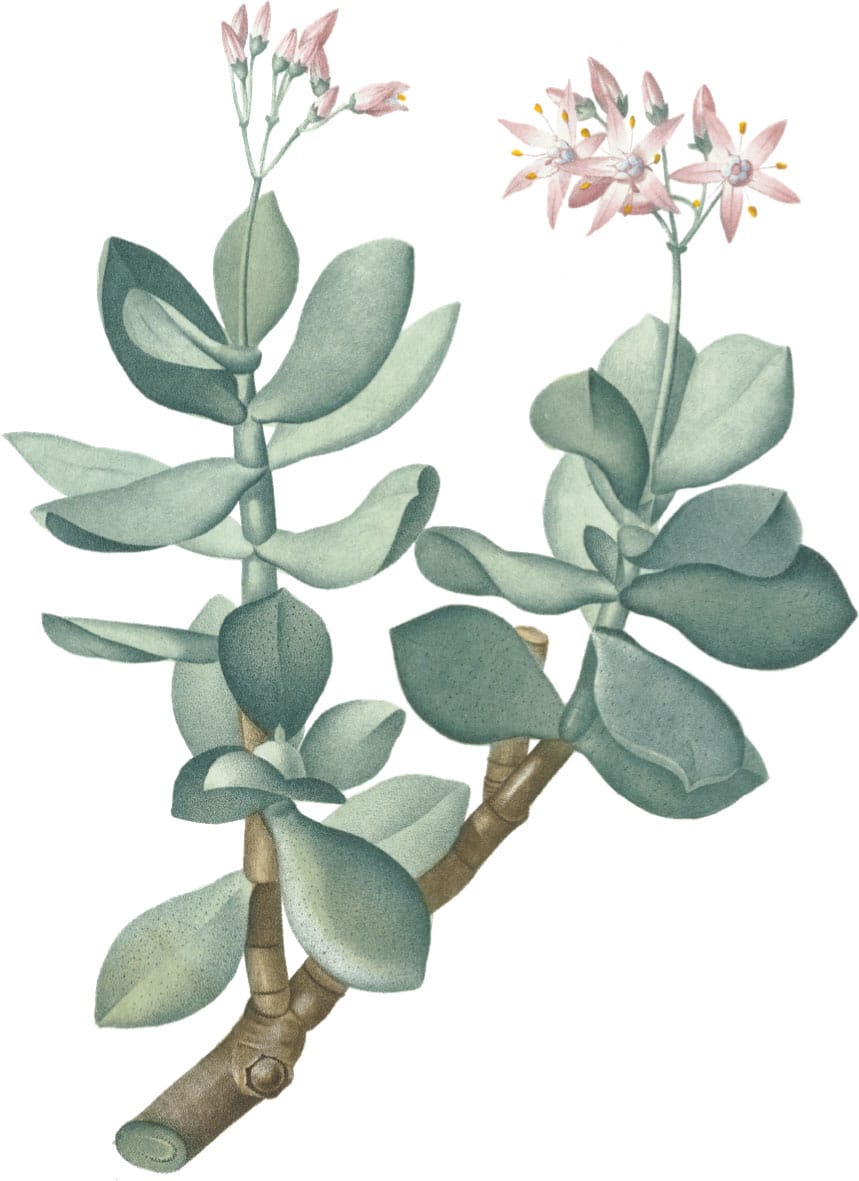
FOLIAGE
Sago palm
Cycas revoluta aka cycad
An eye-catching plant with its rough-textured trunk and sturdy, upright (surprisingly sharp) fronds, this is not a true palm but part of an ancient group of plants called gymnosperms that date back to the dinosaurs, 651/2 million years ago.
WHERE TO GROW
Sago palm has a beautiful symmetry that deserves pride of place in a living room. Just keep it away from draughts and radiators or other heat sources. Avoid direct sun, which will cause scorching.
HOW TO GROW
This plant is very tolerant of drought and low temperatures. Water only the compost or from below (see here), as any water on the crown will cause it to rot. Feed once a month in spring and summer, and mist the fronds in summer. Leave plants almost dry in winter.
GROWING TIP
When new fronds appear, do not move a sago palm. As they unfurl, the fronds arrange themselves to receive maximum light, and if you move the plant they will twist.
CULINARY CHALLENGE
In their native home cycads are used to make sago, which involves a lengthy process to carefully wash out toxins – all parts of the palm being poisonous to humans and animals. Always keep these plants away from pets.

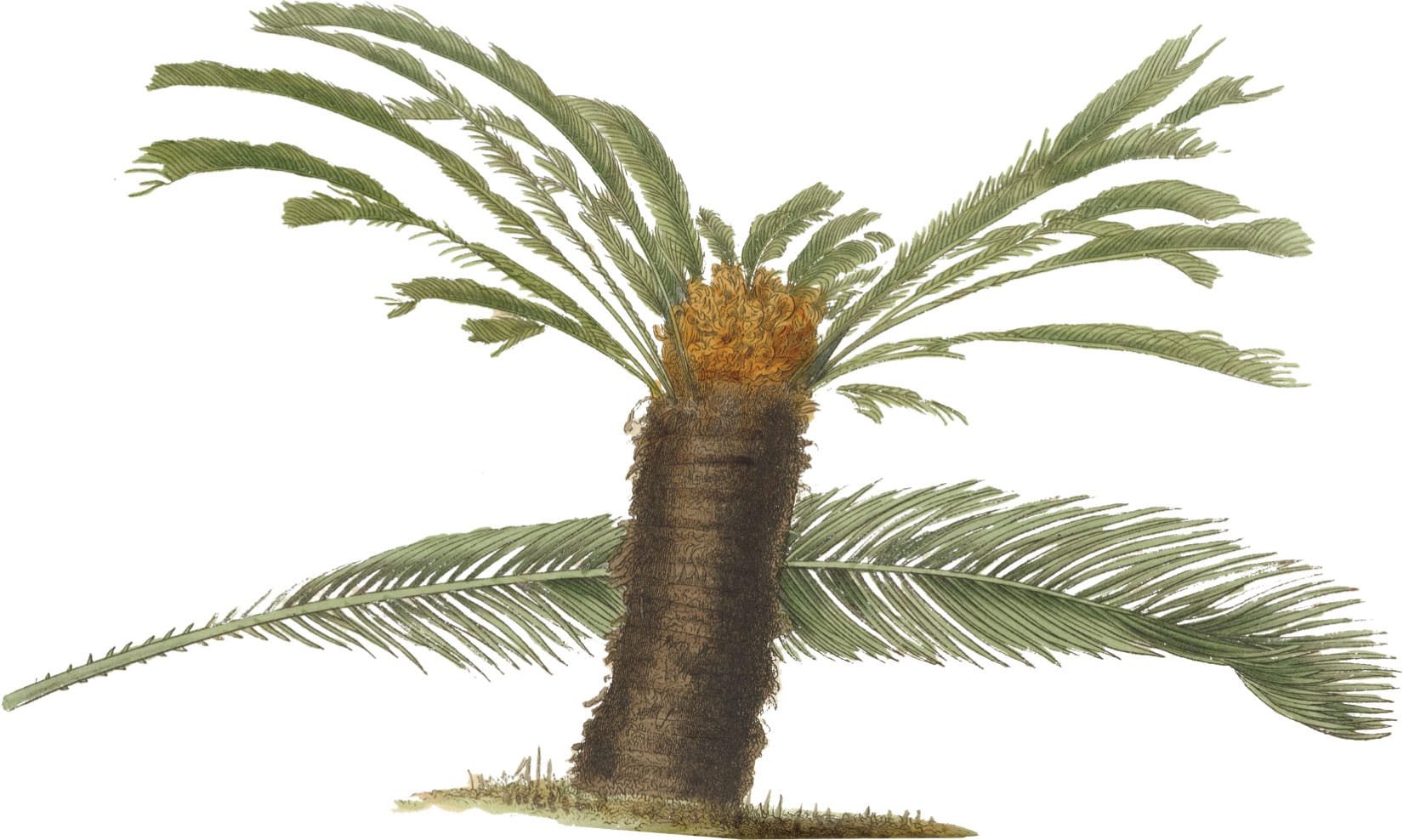
FOLIAGE
Dumb cane
Dieffenbachia seguine aka leopard lily
These lush, impressive plants produce huge, oval leaves with splashes and splotches of dark green, lime-green and cream.
WHERE TO GROW
Happy by an east- or west-facing window out of bright direct light, this is a statement plant for a main living area. Dumb cane dislikes draughts and the drying heat from radiators.
HOW TO GROW
Mist plants or stand each on a tray of pebbles. Feed monthly in spring and summer. Keep the compost on the drier side of moist in winter.
GROWING TIP
Wear gloves when repotting, to protect against the toxic sap in the leaves and stem. Keep pets away.
BE ALERT
The common name dumb cane comes from the toxic sap in the leaves and stems, which causes swelling and blistering in the mouth if eaten and can be severe enough to prevent speaking and swallowing.

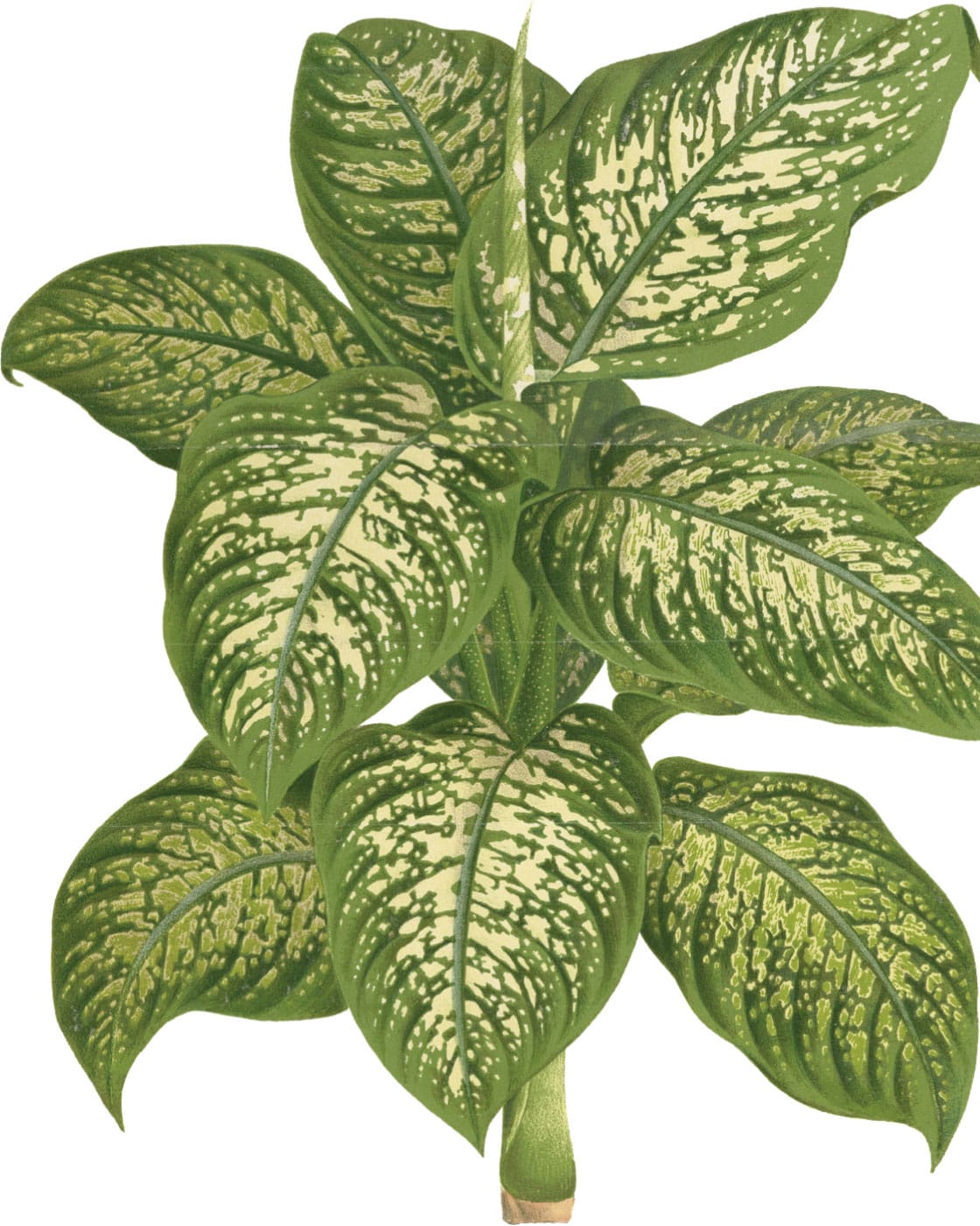
PROJECT 3
A shallow bowl of succulents
Drought-loving succulents with their plump, fleshy leaves provide us with a whole host of dramatic shapes, textures and colours. They are also undemanding, easy plants to grow that love a warm, bright spot, making them ideal for growing together in an attractive planter in the heat of a sunny windowsill. Use a mix of your favourite succulents but select a large focal plant such as a jade plant or black aeonium, to add height and draw the eye.
Add a good layer of gravel to the base of a container with plenty of drainage holes, to help improve air flow and drainage and prevent your plants from sitting in water. Use a free-draining cactus compost or make your own (see here).
Plant your focal plant first and then add the rest, leaving room between plants for them to grow. Use your fingers to firm the compost around each plant. Pretty pebbles, shells and stones will help to personalize your display. Move your succulents to a bright spot near a window and water only when the compost feels completely dry.
GOOD SUCCULENTS FOR DISPLAY
Barbados aloe (Aloe vera)
Black aeonium (Aeonium ‘Zwartkop’)
Crassula ovata ‘Hobbit’
Jade plant (Crassula ovata)
Mexican gem (Echeveria elegans) and others
Moonstone (Pachyphytum oviferum)
String of pearls (Kleinia rowleyana)

1 Assemble your succulents (here, Crassula ovata ‘Hobbit’ and Echeveria), compost, grit, a suitable container and a decorative gravel or horticultural grit for topdressing that contrasts well with the container.
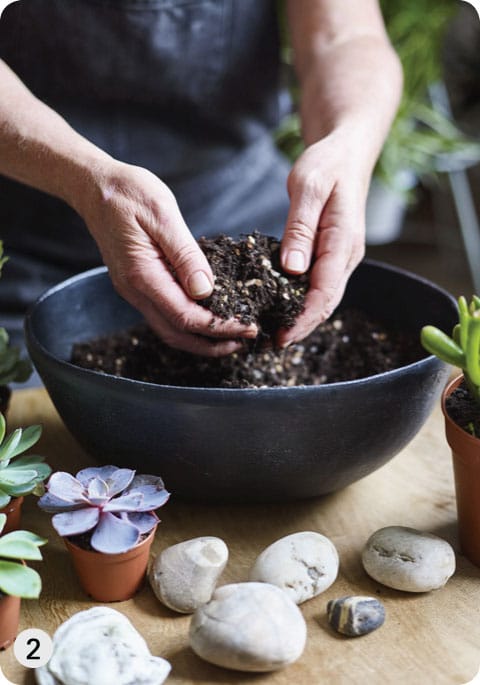
2 Make a free-draining mix to suit your succulents (see here).
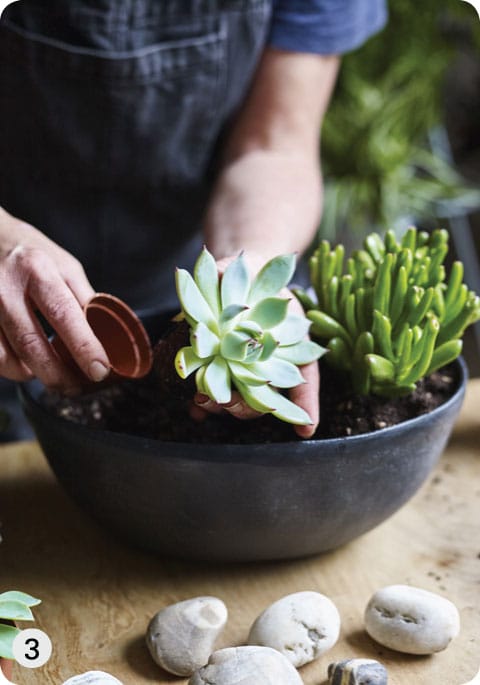
3 Remove each plant from its pot and gently tease out its roots, to encourage growth. Place it in the compost and firm well.
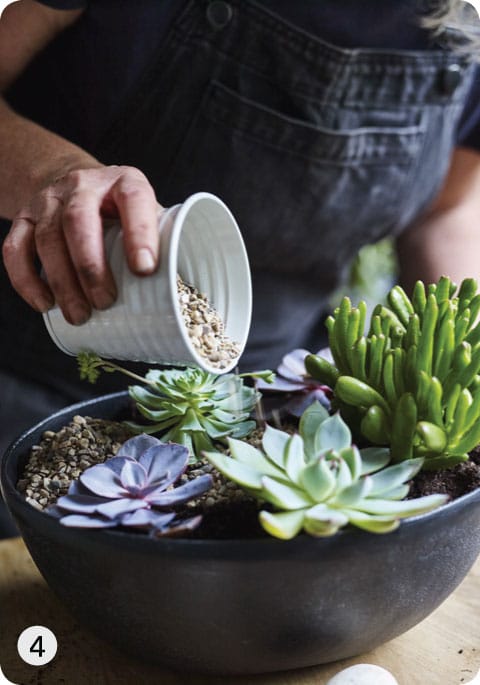
4 Topdress the compost and between the plants. This will hold moisture in the soil.
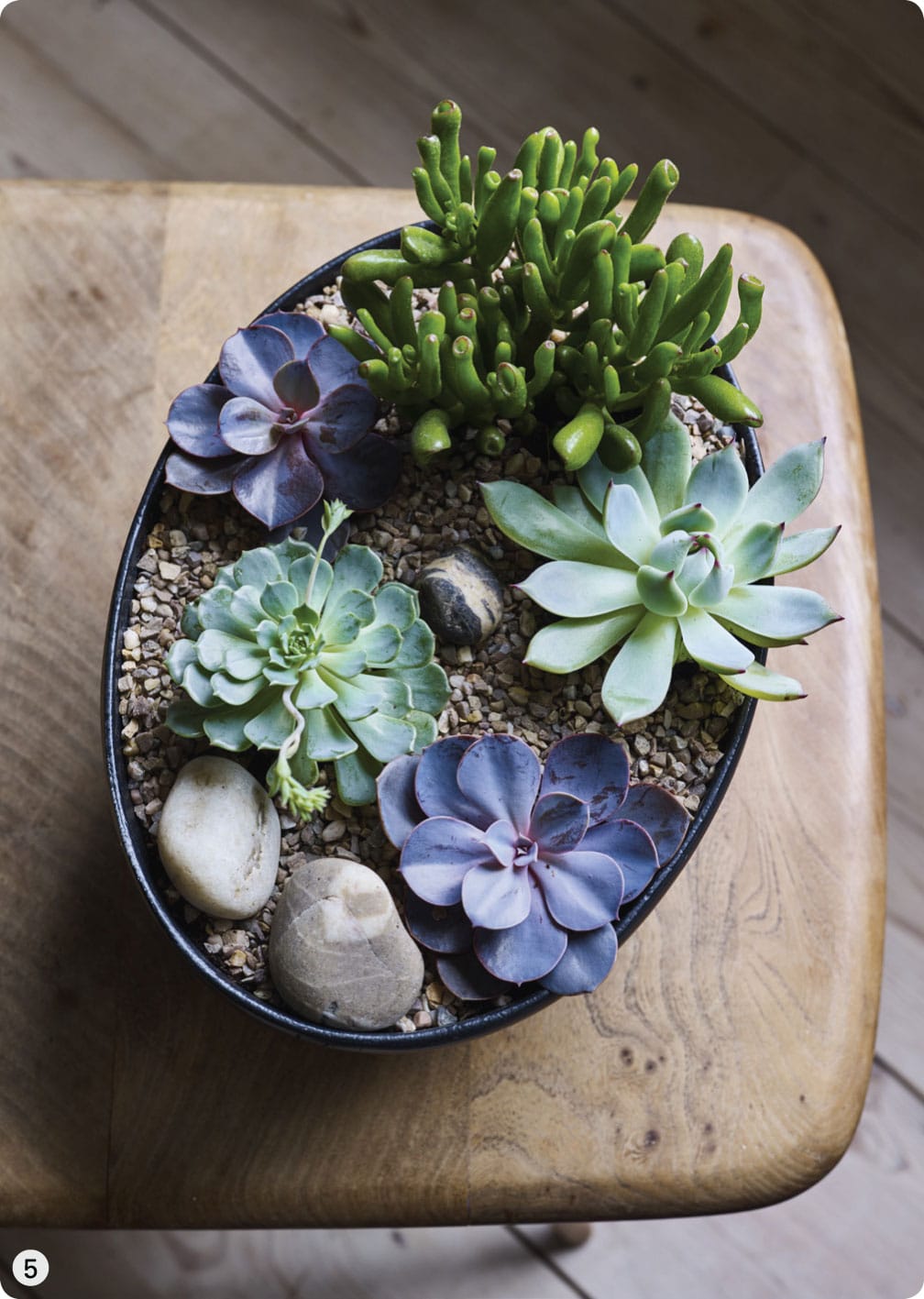
5 Water the plants in.
CARNIVOROUS
Venus fly trap
Dionaea muscipula
Insects are lured with nectar to this very popular carnivorous plant with its hinged, snapping leaf traps. These are triggered by an insect or spider touching the tiny hairs scattered across its leaf surface. The teeth in the traps are wide enough to allow lucky, smaller insects to escape – they are not worth the effort involved in digesting them!
WHERE TO GROW
A south-facing windowsill away from radiators is ideal. Ensure your plant gets food by opening the window, to allow insects in, or leave it outside for a few days at a time in summer.
HOW TO GROW
Grow Venus fly trap in a nutrient-poor potting mix (see Carnivorous plants) and keep it almost saturated in spring and summer, by placing its pot on a saucer of soft rain-, filtered or distilled water. Remove this in winter when the plant is dormant, but keep the compost still moist, always watering from below (see here). Plants do not need feeding. Repot every year as Venus fly trap hates being cramped (see also Carnivorous vase).
GROWING TIP
White flowers appear in spring, but nip these out so that the plant can concentrate its energies in the leaves.
NOT A TOY
Resist the temptation to keep coaxing Venus fly trap to snap shut its jaws. The effort involved will kill it.

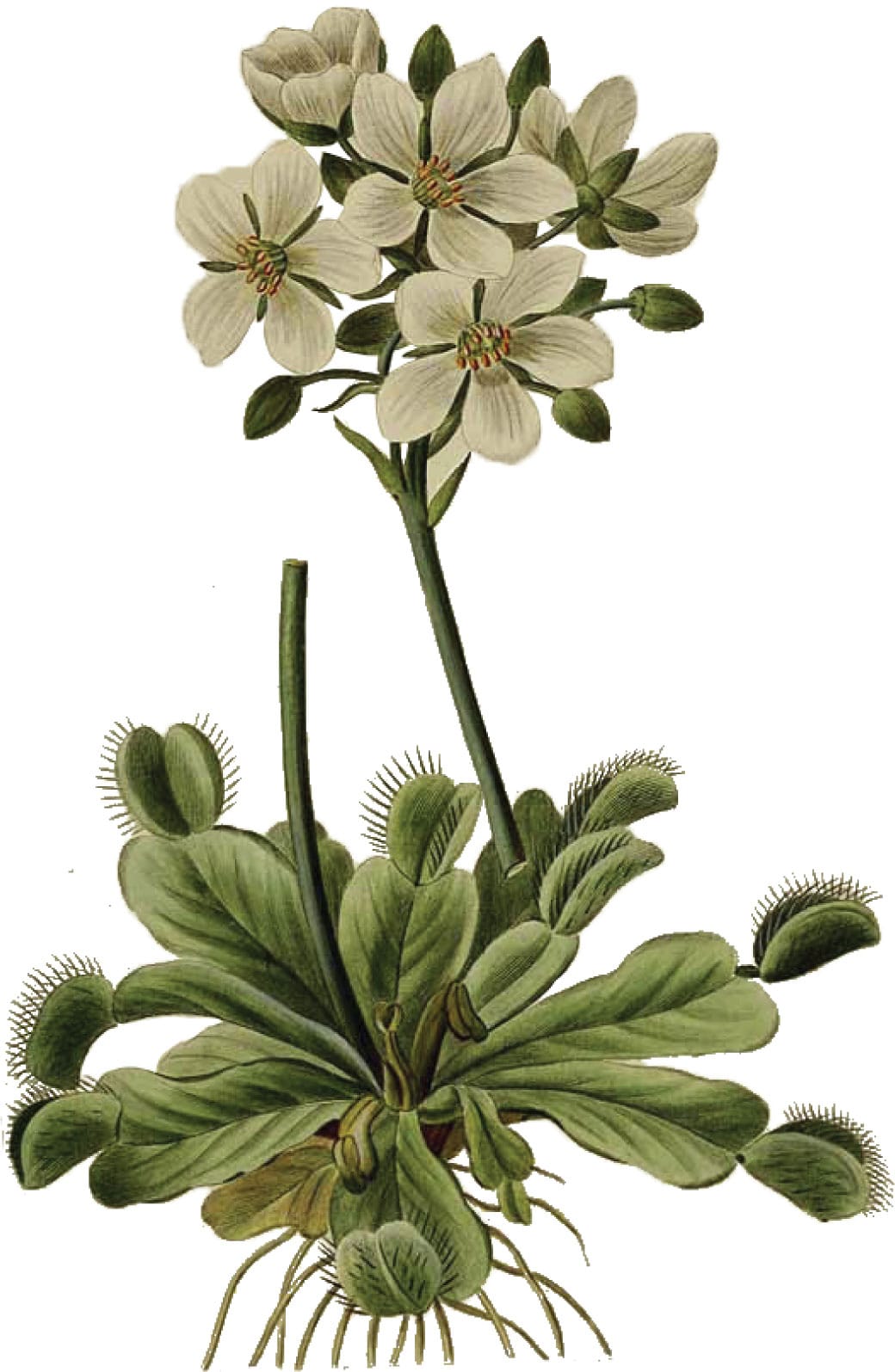
FOLIAGE
Dragon tree
Dracaena marginata aka Madagascar dragon tree
This is an exotic-looking, upright plant with grassy, red-edged leaves sprouting from multiple woody stems, while Dracaena fragrans bears fountains of broad, glossy leaves. D. ‘Janet Craig’ is tolerant of shadier spots than these two species.
WHERE TO GROW
Dragon tree is ideal for a bright, north- or east-facing room, but keep it close to the window as it suffers in very gloomy shade.
HOW TO GROW
Mist or group plants together to improve moisture levels around them. Feed monthly in the growing season. Being surprisingly drought-tolerant, dragon tree hates sitting in soggy soil so allow the top of the compost to start drying out before watering in winter. Prune back if a plant gets too tall, using loppers or a pruning saw if the trunk is thick and tough. New shoots will sprout in a couple of weeks.
GROWING TIP
Keep the toxic leaves away from pets, particularly cats which seem to find them particularly appetising.
EASY CARE
Dragon tree is at home in the semi-arid desert areas of Africa and is low-maintenance and easy to grow, tolerant of both erratic watering and a shady spot.

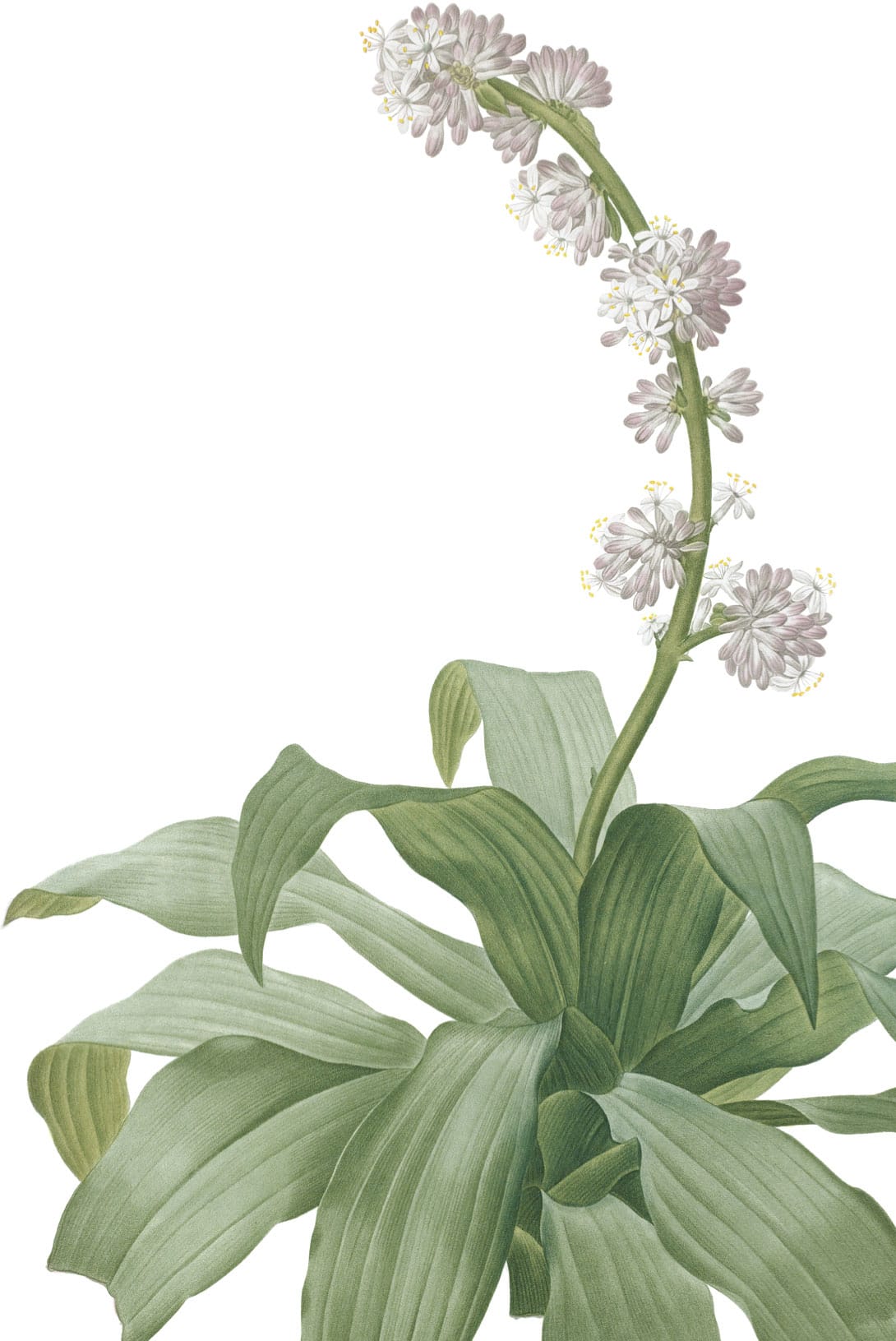
PALM
Cape sundew
Drosera capensis
These colourful, glistening plants catch their food with sticky traps – rosettes of long, slim leaves with red tentacles covered in globules of sticky mucilage (they look like water, or dew, hence the name). These catcheinsects and the leaves then wrap around the prey, trapping it until it is absorbed by the plant.
WHERE TO GROW
Position on a bright, sunny windowsill. Cape sundew is more forgiving than other carnivorous plants, tolerating the odd, short-lived fluctuation in temperature.
HOW TO GROW
Grow in a nutrient-poor potting mix (see Carnivorous plants). Always water Cape sundew from below (see here) and use soft rainwater, filtered or distilled water rather than tap. Keep plants constantly moist and humid by growing them on a saucer of water in spring and summer. Remove this in winter when the plant is dormant but still keep the compost moist. Plants do not need feeding (see also Carnivorous vase).
GROWING TIP
In late spring or early summer, pretty, pink flower spikes are borne, but each lasts just a day. Nip these out to stop plants self-sowing into nearby plant pots.
MEAGRE FARE
Cape sundew is good at catching midges, mosquitoes and small houseflies, although it can survive on just two or three insects a month.

PALM
Golden cane palm
Dypsis lutescens aka Areca palm, butterfly palm
A graceful, tufted palm with arching, feathery fronds, this is a popular plant that is cultivated extensively in gardens in warm climates.
WHERE TO GROW
These palms make wonderful focal points in a hallway or living area. A bright spot will enhance the yellow in their upright stems and intensify the lush, green fronds.
HOW TO GROW
Golden cane palm dislikes sitting with soggy roots, so tip excess water away. It prefers a humid life so mist every day or two. Feed twice a month in spring and summer. Repot in spring when plants are pot-bound.
GROWING TIP
Be prepared to water your plant often as it transpires heavily, losing 1 litre/13/4 pints of water in just twenty-four hours.
STAR BILLING
Golden cane palm is rated by NASA as one of the best plants for removing indoor air pollution (see also Natural air fresheners).


PROJECT 4
Carnivorous vase
Carnivorous plants are an intriguing group that are much easier to look after than you might think. Most of them simply require boggy, slightly humid conditions and a sunny spot. They can be grown individually in a pot and saucer, but as most have similar cultural needs they can also be planted together to make a fascinating feature. Collections look good when grown in low troughs or shallow planters, but are also happy in large glass vessels such as this round, fishbowl-style vase.
Carnivorous plants are fussy about soil and demand moisture-retentive, ericaceous soil so use a specialist carnivorous compost mix or make your own peat-free potting mix (see here). Such plants need to be kept constantly moist from spring to autumn, so line and topdress your container with moss to help to retain water and give plants the boggy conditions they love. Carnivorous plants are also very sensitive to water type. The minerals and salts in tap water, particularly hard water, will build up and eventually kill them so always collect and use rainwater to water them with. Carnivorous plants do not require feeding.
CARNIVOROUS PLANTS FOR A VASE
Cape sundew (Drosera capensis)
North American pitcher plant (Sarracenia flava)
Venus fly trap (Dionaea muscipula)

1 Line the vase base and sides with moss.
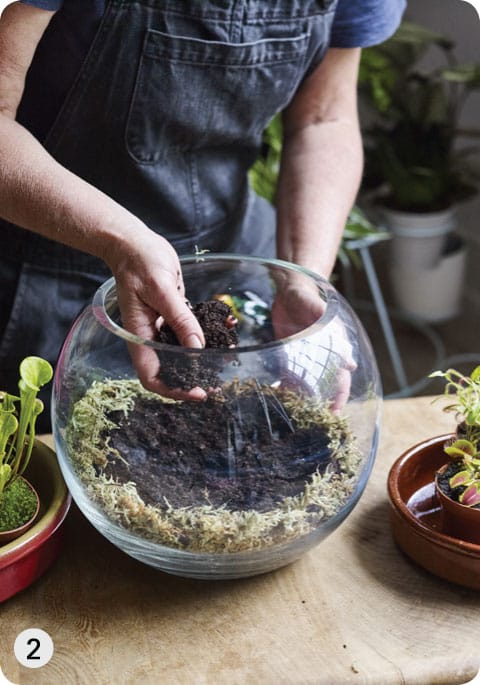
2 Add a generous layer of carnivorous compost.
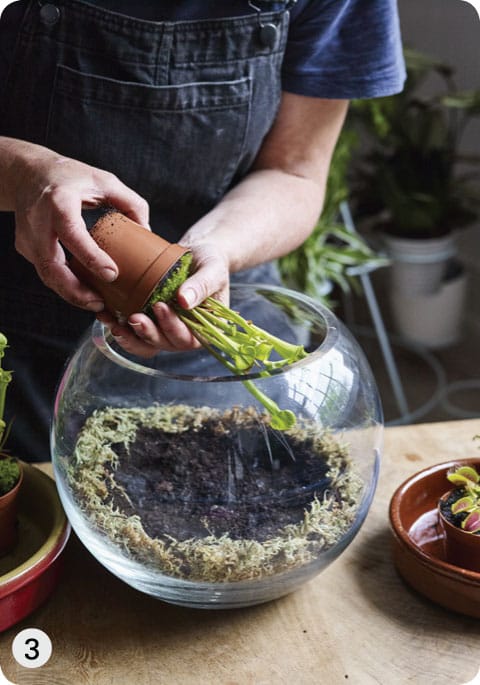
3 Remove each plant (here, North American pitcher plant) from its container.
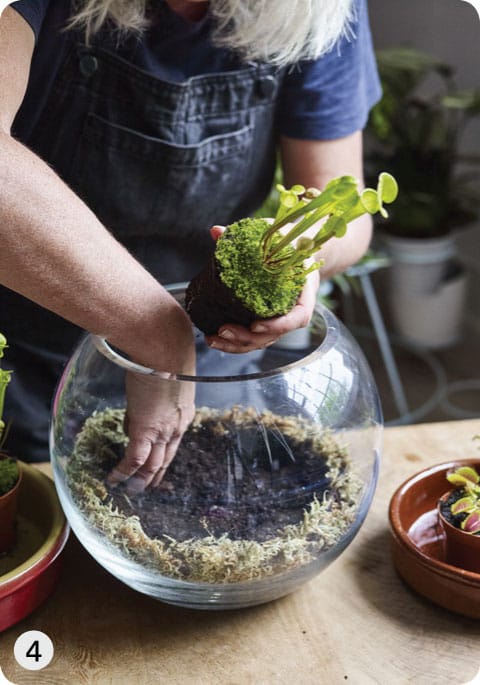
4 Plant in the compost. Fill in around the plants with more compost if necessary and firm down, to remove any air pockets.
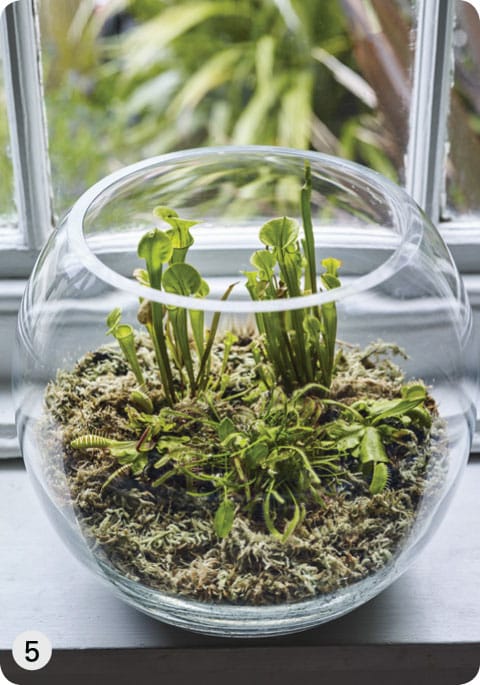
5 Topdress with a layer of moss.
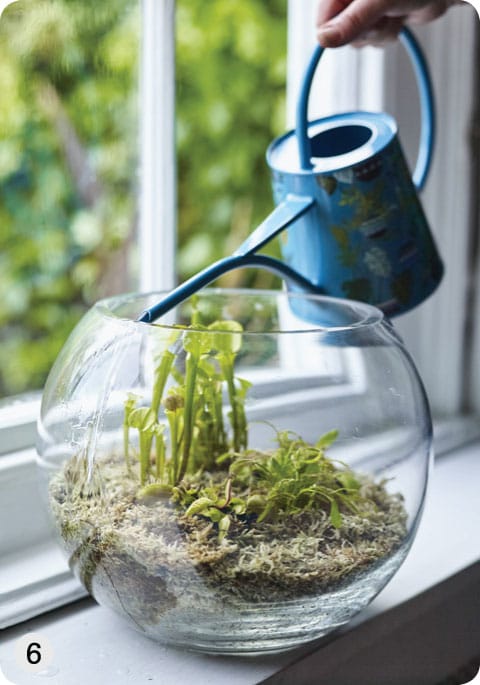
6 Water in the plants. To do this in a round vase, carefully aim the water at the side of the vase so that it goes directly into the compost rather than splashing over the plants.
SUCCULENT
Moulded-wax succulent
Echeveria agavoides aka wax agave
This species is just one of a huge group of rosette-forming succulents that come in countless shades of green, silver and red with leaves that can be plump, flat, fuzzy, crinkled or smooth. All produce brilliantly coloured flowers on long stems. Moulded-wax succulent has thick, deep green leaves, which turn bronze at the tips in very bright light.
WHERE TO GROW
Grow on a bright, sunny windowsill as too little light will make the rosette start to elongate.
HOW TO GROW
Plant in an open, free-draining compost mix (see Cacti and succulents). Water regularly in spring and summer, but give none when dormant, when plants should be moved to a cooler spot (6–10°C/43–50°F) to promote flowering the following year. Feed just a couple of times in the growing season. When plants are root-bound, repot in spring.
GROWING TIP
Baby plantlets at the base of the plant can be removed and grown as new plants (see here) or be left to form a larger group of plants. Moulded wax succulent can also be increased by leaf cuttings (see here).
ON THE RECORD
Many Echeveria come from Mexico and were named after a Mexican naturalist and botanical artist, Atanasio Echeverria y Godoy, who compiled an inventory of its flora and fauna in the eighteenth century.

CACTUS
Golden barrel cactus
Echinocactus grusonii aka golden ball, mother-in-law’s cushion
Eye-catching golden barrel cactus is rounded with green flesh, a fluffy, yellow crown and distinctive ribs of very sharp, golden spines. As it ages, it become more oblong, and the spiny ribs are more dramatically pronounced. Mature plants bear large, sunny yellow flowers.
WHERE TO GROW
Place on a sunny windowsill and open the window occasionally in summer so plants can enjoy the fresh air. Avoid humid rooms such as a bathroom and kitchen.
HOW TO GROW
Grow in a free-draining potting mix (see Cacti and succulents). Water regularly in spring and summer. Give plants minimal water in winter. Feed a couple of times in the growing season. Repot when plants are root-bound, but wear very thick gloves or wrap plants in layers of paper to protect your hands. Plants grow quickly when young but then slow right down and so need repotting less.
GROWING TIP
The green flesh can mark if conditions are too humid so move the plant to a drier spot if this occurs.
SPECIAL PLACES
Endemic to Mexico, plants can live up to thirty years but are rare in the wild, occurring in only a couple of areas following the creation of the Zimapán Dam in the state of Hidalgo.

CACTUS
Hedgehog cactus
Echinopsis aurea aka sea-urchin cactus, Easter lily cactus
The globular hedgehog cactus is covered in dense, long, curly spines and, in summer, stunning, bright butter-yellow flowers on long, tubular stems are borne in the evenings.
WHERE TO GROW
Position on a warm, sunny windowsill in the growing season but keep out of direct sun. To promote flowering, hedgehog cactus requires a period of winter cold so move it to a cool, bright window with a minimum temperature of 5°C/41°F.
HOW TO GROW
Although hedgehog cactus likes a free-draining potting mix (see Cacti and succulents), it does need more water than typical cacti. Water regularly in spring and summer. In winter, it requires little, if any water. Repot plants every two years.
GROWING TIP
Do not saturate plants. They have soft, fibrous roots that will rot if kept too wet.
EXTENDED OPENING
Flowers usually appear once plants reach two to three years old. Often, many buds develop on one plant and open in flushes over several days.

CACTUS
Fishbone cactus
Epiphyllum anguliger aka zigzag cactus, ric rac cactus
These are wonderfully weird-looking plants – mounds of long, flattened, wiggly leaves dangle outwards, making them perfect for a spot centre stage in your house.
WHERE TO GROW
The hanging leaves tend to make plants top-heavy so grow them in hanging baskets or in heavy stone pots on a shelf, to prevent them from tumbling over.
HOW TO GROW
Plant in a free-draining cactus compost mix. Mist plants daily or stand each on a tray of wet pebbles. Water regularly, in spring and summer, and feed monthly in the growing season. In autumn and winter, keep the compost just moist.
GROWING TIP
Fishbone cactus prefers a cooler, shadier spot during winter. Move the plant back to a minimum of 16°C/61°F in spring.
NOCTURNAL TREAT
After four or five years, beautiful, fragrant flowers bloom at night during autumn. These are followed by edible, kiwi-like fruits.

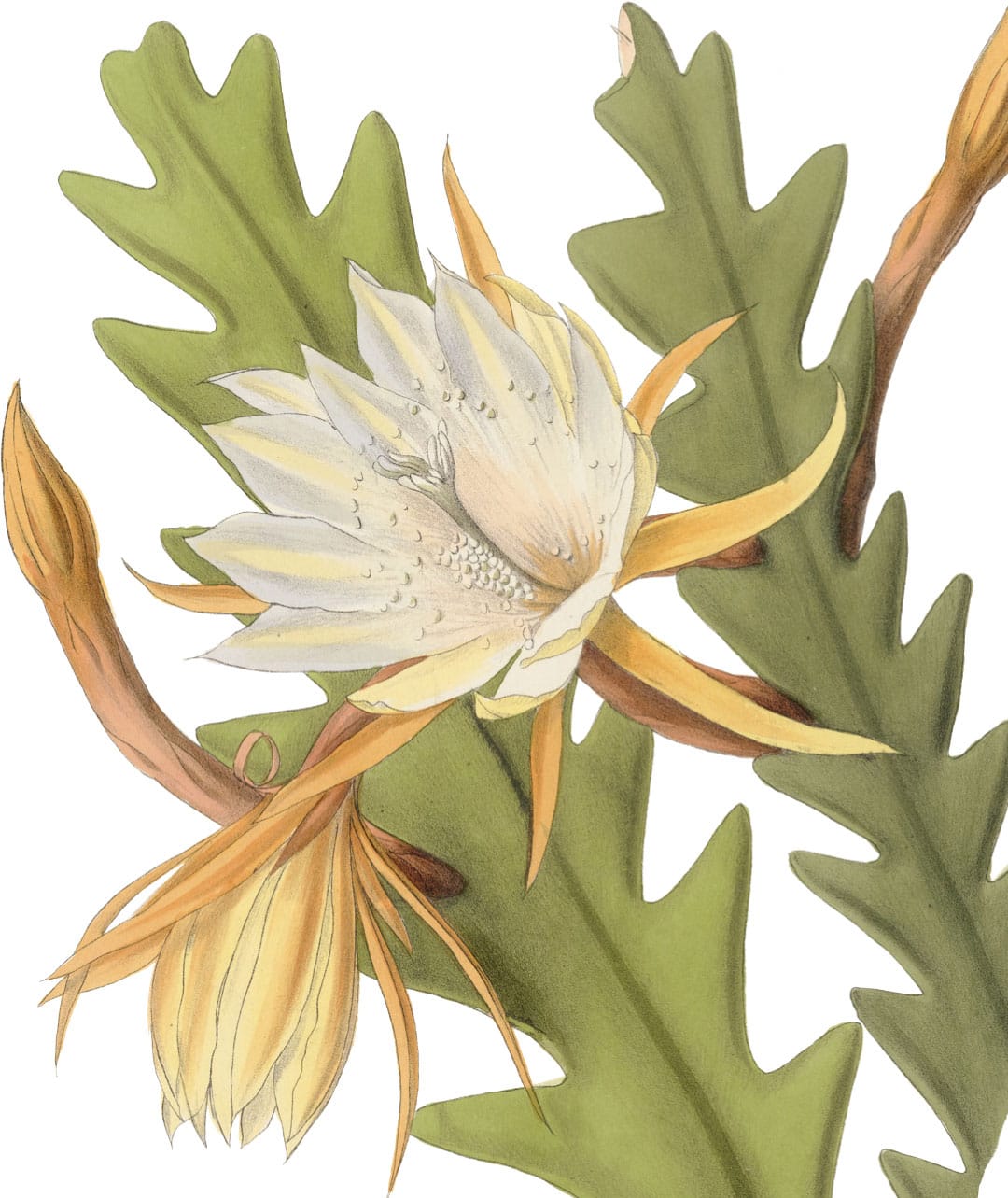
PROJECT 5
Desert islands
All cacti and succulents have strong individual textures, from fleshy leaves to spiky stems, and a great way to show off their many different shapes and sizes is to group them together. To reinforce the relationship between them and to draw the eye to the individual plants rather than distract from them, select pots that are exactly the same or very similar. Here, I have chosen simple, white pots as a contrast to the plants and to highlight the variations in their textures and form, and have then drawn them all together by standing them within a large stone platter. Each pot has also been topdressed with crushed oyster shell, which sets off the plants and helps to keep moisture away from their stems. Place the display in a sunny spot.
Water your desert plants only when their compost is dry, taking care not to splash the plants. Leave them to dry out completely between mid-autumn and early spring.
PLANTS FOR A DESERT DISPLAY
African spear (Sansevieria cylindrica)
Bunny-ears cactus (Opuntia microdasys)
Golden barrel cactus (Echinocactus grusonii)
Old man cactus (Cephalocereus senilis)
Pincushion cactus (Mammillaria species)
Sansevieria kirkii ‘Silver Blue’
Zebra cactus (Haworthia fasciata)

1 When repotting, wrap newspaper around spiky cacti (here, Pilosocereus pachycladus), to avoid getting prickled.
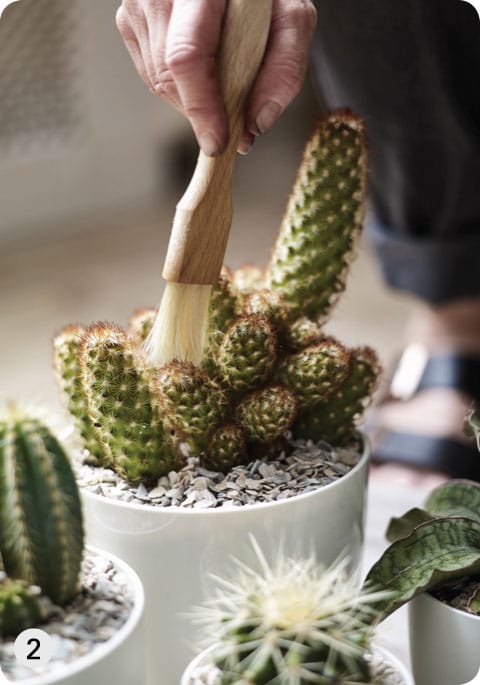
2 Use a small, soft paintbrush to carefully clean away excess compost or grit from plants (here, Mammillaria elongata).
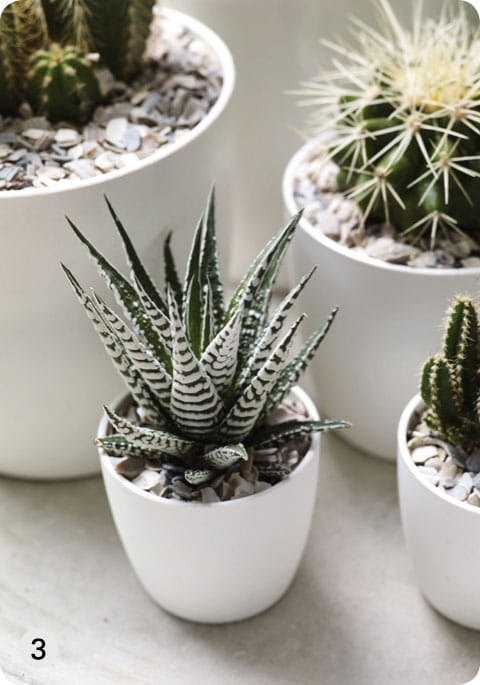
3 The distinct, white stripes of Haworthia fasciata ‘Alba’ match the pots beautifully.
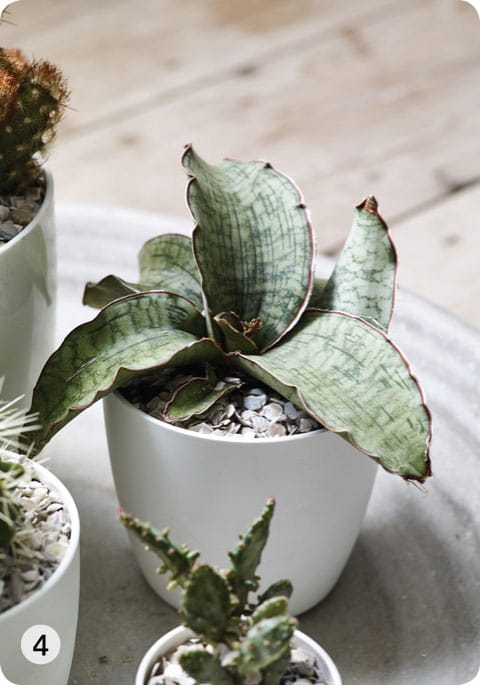
4 Sansevieria kirkii ‘Silver Blue’ has a low, spreading habit and is perfect for the front of a display.

5 The trick to harmonizing your display is to grow the cacti in matching containers.
FOLIAGE
Devil’s ivy
Epipremnum aureum aka golden pothos, silver vine, scindapsus, Ceylon creeper
The perfect plant for nervous growers, this tough, easy plant will still reward the odd forgotten watering with its trailing stems and large, marbled, heart-shaped leaves.
WHERE TO GROW
Lovely in a hanging basket or cascading from a shelf, these quick growers can equally be trained to grow up a moss pole. In a group these rampant plants are a great way to screen areas, too. Keep away from draughts and the drying heat of a radiator. Also position plants away from pets, as all parts of devil’s ivy are toxic.
HOW TO GROW
Grow in multipurpose potting compost. Water year-round, keeping the compost moist except in winter, when it should be just moist. Take care not to overwater, which causes rot. Feed plants monthly in the growing season. Repot every couple of years.
GROWING TIP
New plants are easily propagated in spring from stem cuttings (see here).
CLEANER AIR
Devil’s ivy is excellent at removing toxins and chemicals such as formaldehyde, xylene and benzene from the air (see also Natural air fresheners).

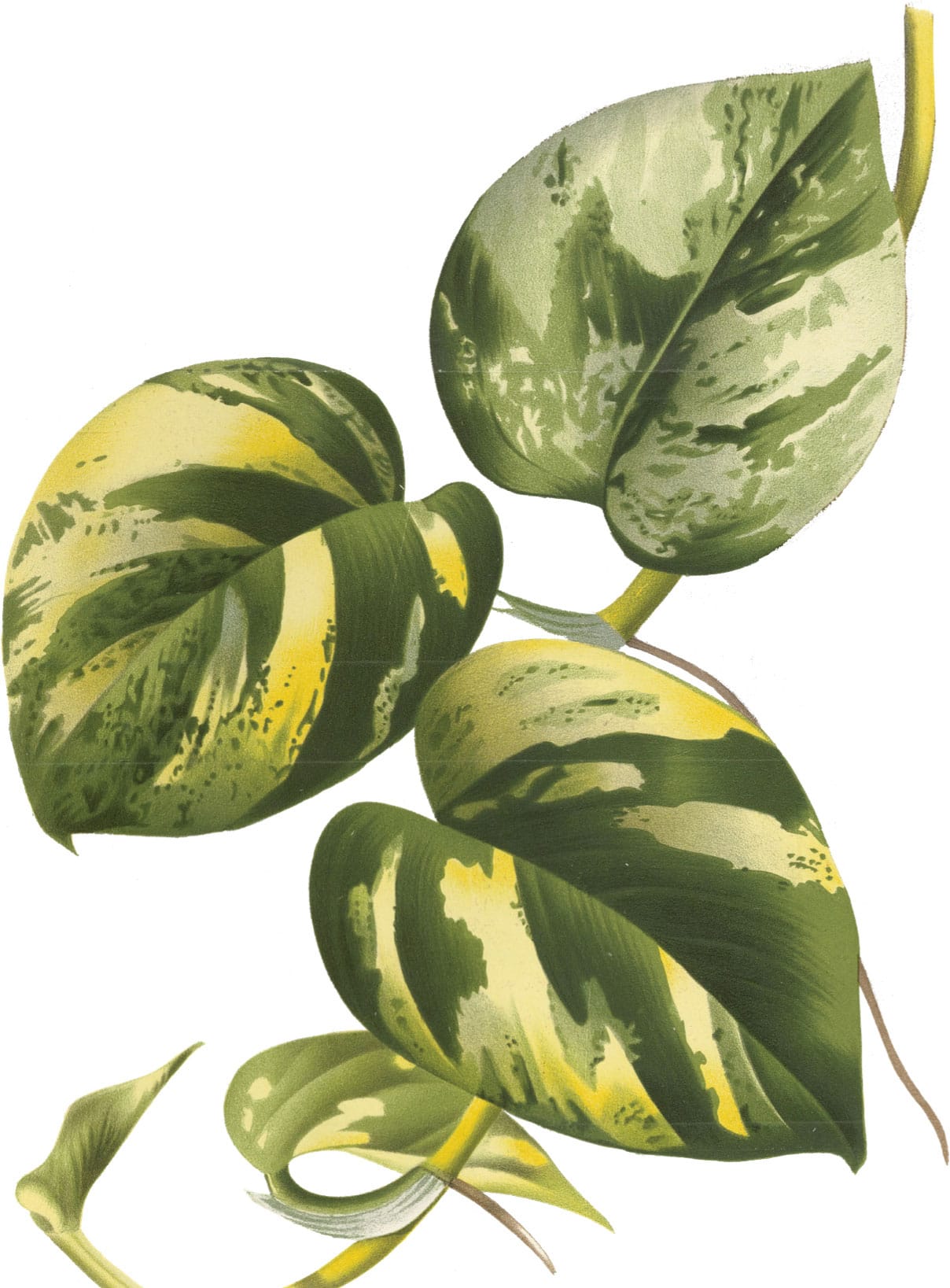
SUCCULENT
Candelabra plant
Euphorbia lactea ‘Cristata’ aka cactus euphorbia
Candelabra plant is actually a combination of two plants (Euphorbia lactea and E. neriifolia) grafted together to create this brain-like habit. Such striking, sculptural plants – more cactus-like than succulent in appearance – have modified stems (as opposed to the modified leaves of cacti) that have developed into thorns.
WHERE TO GROW
A south-facing windowsill suits this weird-looking plant, but protect it from midday rays in the height of summer.
HOW TO GROW
Grow in a coarse, free-draining cactus compost mix so that water can drain away freely; never leave plants sitting in water. In winter, keep the compost almost dry. Feed monthly during active growth.
GROWING TIP
The lower graft occasionally suckers; this can be removed (see here) or be left, depending on your preference.
SKIN IRRITANT
All Euphorbia contain white, milky sap, which is painfully irritating to the skin, so handle plants with care and wear gloves – you will also avoid their nasty thorns. Keep children and pets away.

FOLIAGE
Fiddle-leaf fig
Ficus lyrata aka banjo fig
This statuesque plant with large, leathery, slightly crumpled leaves is top of many house plant growers’ wish list despite it being a somewhat temperamental house guest. Look for comparatively compact Ficus lyrata ‘Bambino’, which reaches just 1m/39in tall.
WHERE TO GROW
Position in front of an east- or west-facing window away from cold draughts and radiators – anywhere, in fact, where temperature swings are common.
HOW TO GROW
Plant in a 3:1 mix of soil-based potting compost and perlite. Keep the humidity up in summer by misting the leaves every few days and preferably grow plants in groups. Figs are sensitive to both over- and underwatering so let the compost dry out between watering and then water really well. Feed monthly in the growing season. Reduce watering in winter, so that the compost is just moist. Repot every few years.
GROWING TIP
Fiddle-leaf fig is often sold as a single- stem plant, but it can be pinched out to encourage branching and to achieve an attractive, tree-like shape.
UNGRATEFUL
In the wild these are banyan figs, which start life as an epiphyte on another tree, then send roots down to the ground and eventually strangle the host tree.

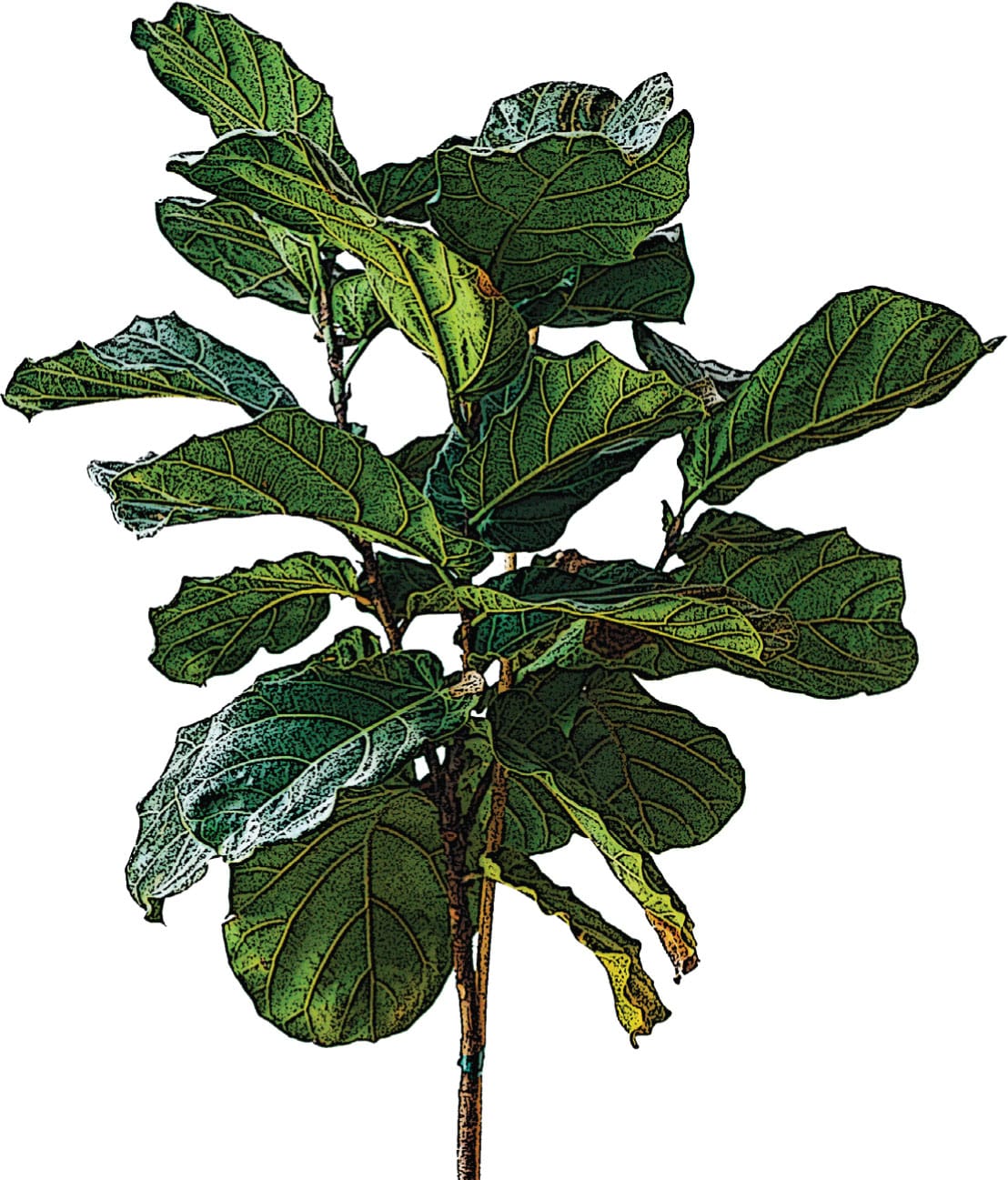
FOLIAGE
Mosaic plant
Fittonia albivenis Verschaffeltii Group aka nerve plant, silver net plant
These striking, little ground-cover plants have dark green leaves with each and every vein picked out in white, pink or red. They can be a little tricky and need their growing conditions just right, but give them the exact warmth and moisture they require and they will fully reward you.
WHERE TO GROW
Grow the mosaic plant in a steamy bathroom or by the kettle in the kitchen. It is also a great terrarium plant (see Miniature rainforest).
HOW TO GROW
Mosaic plants thrive in high humidity so mist them every morning or place each on a tray of pebbles. If too dry, plants wilt quickly and spectacularly but should recover just as speedily when they are watered well. Feed monthly in the growing season. Pinch out the small, summer flowers so that energy is concentrated on the leaves.
GROWING TIP
Plants root well from stem cuttings (see here) so are easy to propagate into new plants for friends or yourself.
DUAL PURPOSE
The marked veining is more than good looks – it helps the plants trap as much light as possible in the limited levels found deep within the rainforest.

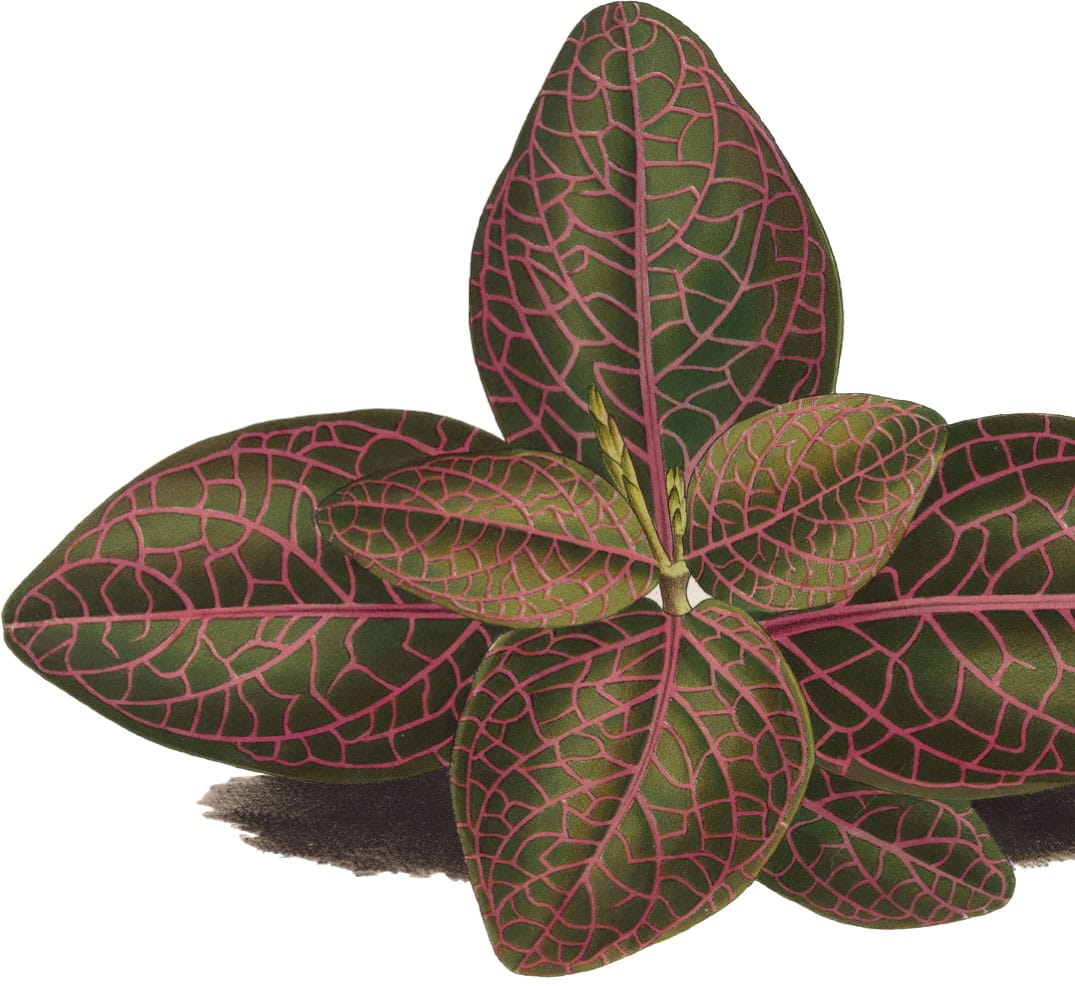
SUCCULENT
Fairy elephants’ feet
Frithia pulchra aka baby toes, elephant’s baby toe
Fairy elephants’ feet is tough, tiny and brilliantly easy to grow. It is a stemless plant producing clusters of erect, modified leaves with ‘windows’ at their tips, to protect them from extreme harsh light and heat.
WHERE TO GROW
Position by a sunny window, opening it at times in spring and summer so that the plant can enjoy the fresh air.
HOW TO GROW
Fairy elephants’ feet needs a very coarse, open compost (see Cacti and succulents). It will rot if too wet so water sparingly in the growing season and hardly at all in winter. If plants get too dry they draw themselves into the ground or compost, to protect themselves; if this happens, increase the watering. Feed every few weeks in the growing season.
GROWING TIP
Plants must be happy, with plump leaves, if they are to produce their showy, bright pink, white-centred, daisy-like flowers in winter.
LASTING GIFT
Frithia was first established as a genus in 1925 by a Kew botanist, N.E. Brown. He named it after Frank Frith, the gardener at Park Station in Johannesburg, who took the plant to Brown when he visited London.

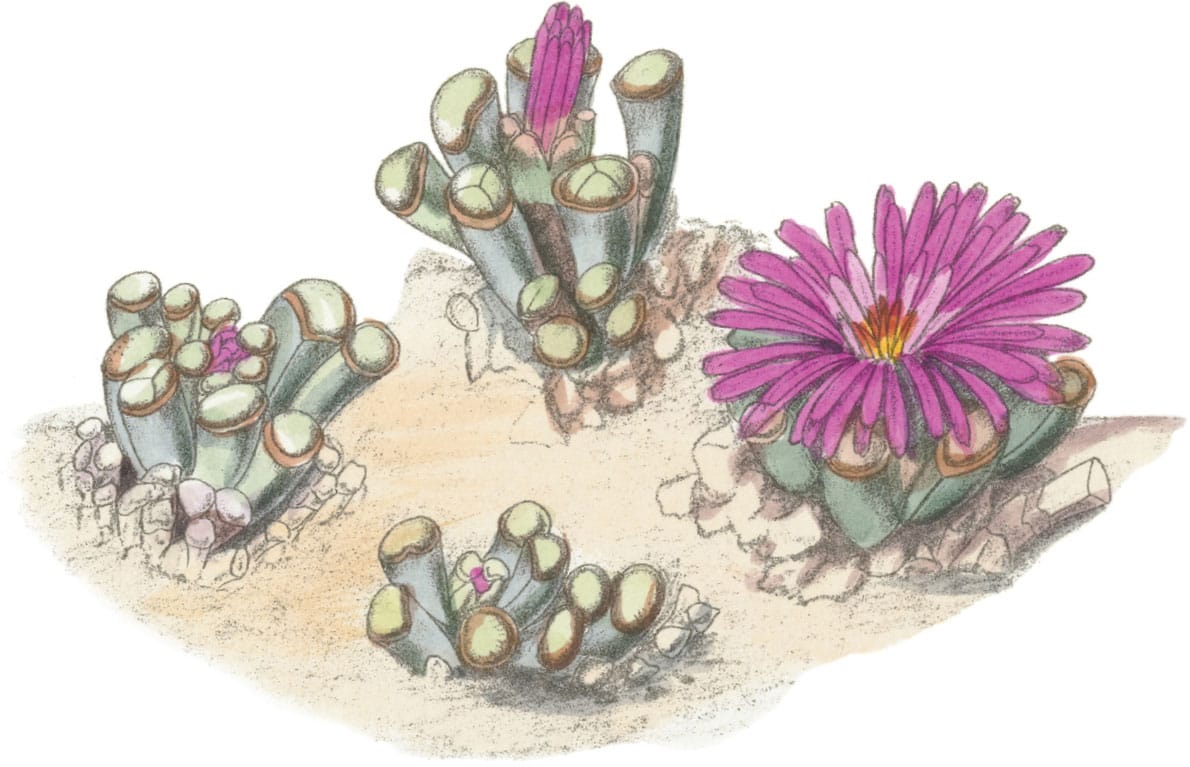
FLOWERING
Cape jasmine
Gardenia jasminoides aka common gardenia
An evergreen garden shrub in warmer climes, this is a lovely house plant for a living space, where its gorgeously heady scent will fill the room. It is beautiful, too, with large, waxy, white flowers shining out from glossy, green leaves.
WHERE TO GROW
These plants like even temperatures so position them away from cold draughts and heat sources. As the light levels drop in winter, move to a sunny windowsill.
HOW TO GROW
Grow in ericaceous compost, and water with rain- or filtered water – tap water contains too much calcium for this acid-lover. It likes high humidity so regularly mist the plant (avoiding the flowers) or grow on a saucer or tray of pebbles topped up with water. In winter, allow the top of the compost to dry out before watering.
GROWING TIP
To ensure flowering, keep plants at a steady 21–4°C/70–5°F during the day and at 15–18°C/59–65°F during the night.
ARTISTIC ATTRACTION
The Gardenia genus has been cultivated in China for more than 1,000 years – it can be seen, in both wild and double forms, in paintings dating back to AD 960.

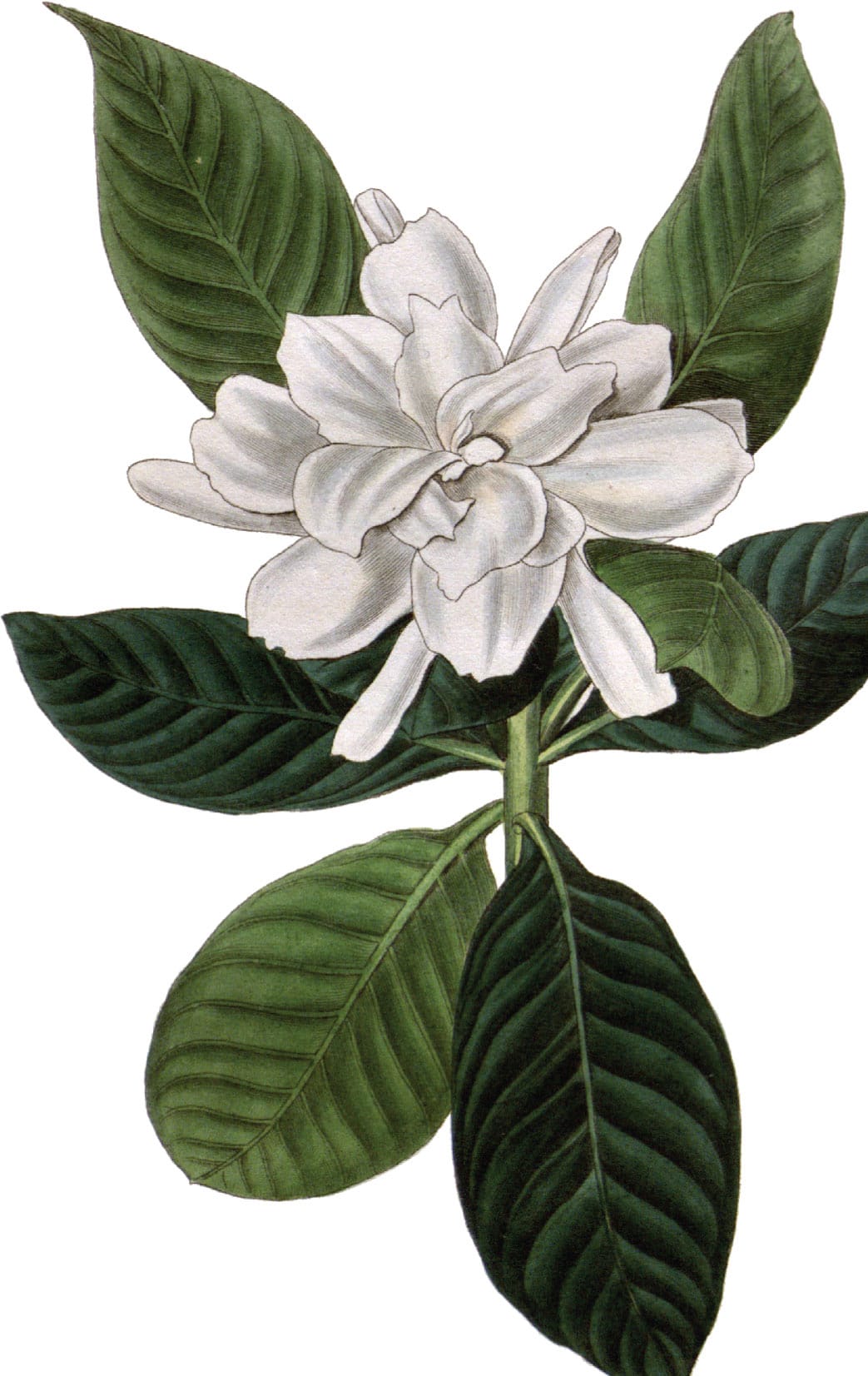
FOLIAGE
Peacock plant
Goeppertia makoyana aka calathea, cathedral windows
Just one of a large group of stunning, leafy evergreens, peacock plant has striking blotches and purple undersides to its leaves. Others include G. zebrina, which produces broad leaves with pinky-white zebra stripes, and G. insignis, which has wavy-edged, slender leaves with snake-like markings in lime-green and dark green.
WHERE TO GROW
Find it a warm spot in a room with high humidity.
HOW TO GROW
Remove excess water so the compost is moist but not soggy. Peacock plant loves humidity so mist plants daily or sit on a tray of pebbles and water. Feed every couple of weeks in spring and summer. For a thriving plant, repot every year.
GROWING TIP
If the leaves start to roll up, it is a sign that the plant is drying out, so water well to keep the compost moist.
VITAL COLOUR
The purple undersides to the leaves is an environmental adaptation that helps plants catch the dim light within the forest.

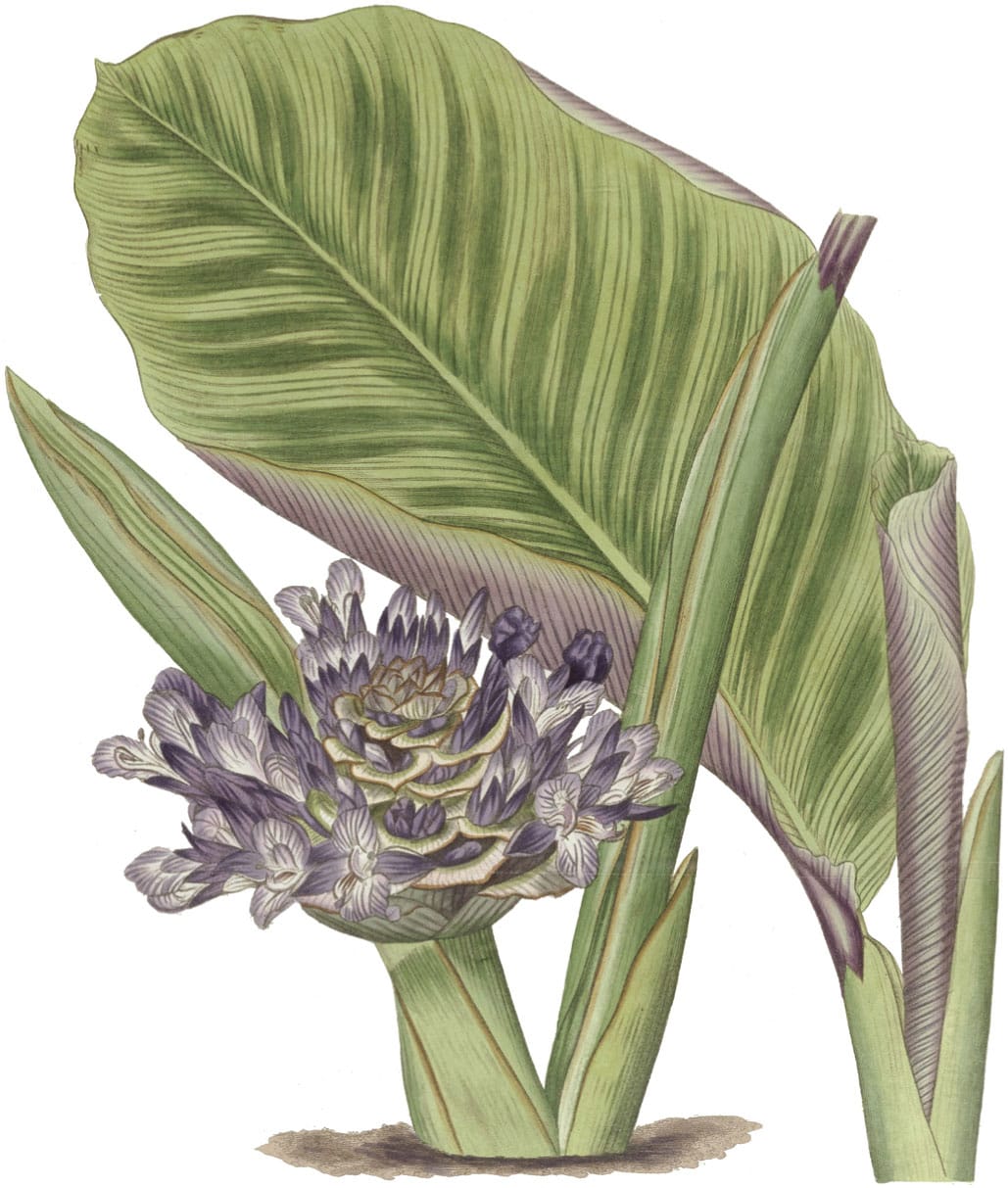
Goeppertia zebrina
BROMELIAD
Scarlet star
Guzmania lingulata aka tufted air plant, tongue-shaped guzmania
The dazzling flower spike of this epiphyte is its main attraction, with vibrant scarlet and orange bracts shooting from the centre of the rosette of glossy, green leaves. Small, white and yellow flowers can be seen within. There are many hybrids and cultivars with yellow, orange and purple bracts.
WHERE TO GROW
Grow on a table or shelf, rather than on a windowsill – the beautiful flowers and striking leaves make this a perfect centrepiece. Plants can also be tied to bark or a piece of wood and bound with moss.
HOW TO GROW
Grow it in a 50:50 mix of orchid compost and multipurpose compost. Keep the central well topped up with rain-, filtered or distilled water so that it is always at least 2cm/3/4in full. Mist the whole plant – leaves, bracts, flowers and aerial roots – daily. Feed once a month with a diluted liquid feed watered into the well; tip this out after a few days and replace with rainwater.
GROWING TIP
Scarlet star is happiest when its roots are snug, and this helps promote flowering.
BORN ANEW
Like other bromeliads, scarlet star dies after flowering, but not before producing offsets at the base. These can be grown on into new plants.

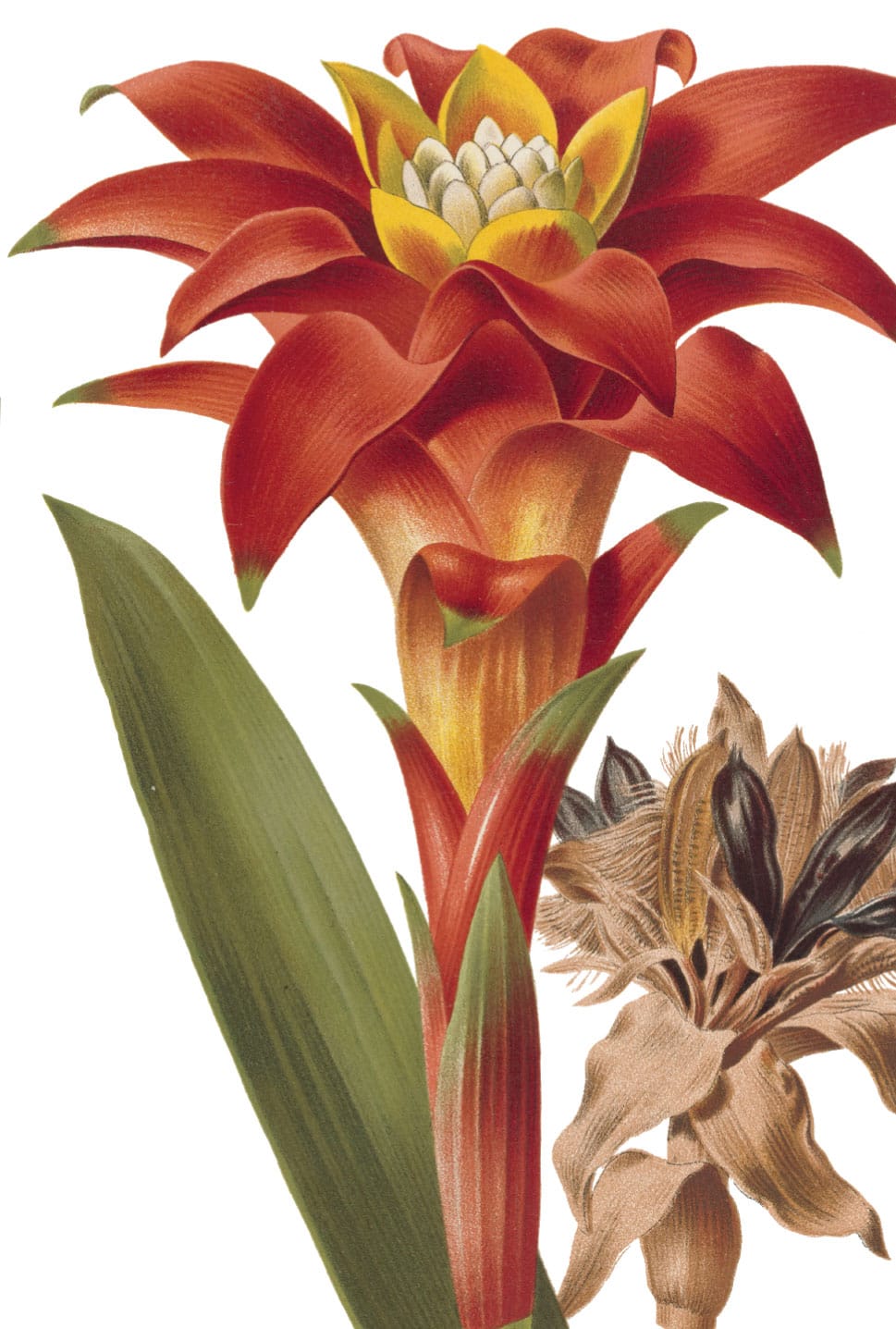
PROJECT 6
Hanging gardens
Suspending plants in the air is a great way to make the most of every bit of space in a room; they draw the eye upwards, too, so the room feels bigger. Suitable containers for hanging come in all sorts of designs and materials, from ceramic and metal to the glass planters shown here. Or you can buy or make your own macramé-style hangers, to slip pots into. Remember that plants are heavier after watering, so make sure that hanging materials are strong enough to hold them.
All hanging planters are best used as cover pots rather than final containers, to avoid plants sitting in water. This also makes watering easier and prevents accidental splashes of water over the floor and furniture. Before watering, remove each plant from its hanging planter; having watered it, allow it to drain, then replace in the planter.
PLANTS FOR HANGING GARDENS
Creeping fig (Ficus pumila)
Devil’s ivy (Epipremnum aureum)
Donkey’s tail (Sedum morganianum)
Heart leaf (Philodendron scandens)
Mistletoe cactus (Rhipsalis baccifera)
Silver-inch plant (Tradescantia zebrina) and others
Spider plant (Chlorophytum comosum ‘Variegatum’)
Staghorn fern (Platycerium bifurcatum)
String of hearts (Ceropegia linearis subsp. woodii)
String of pearls (Kleinia rowleyana)
Wax flower (Hoya carnosa)

1 Mist plants such as this mistletoe cactus regularly, to keep humidity levels high.
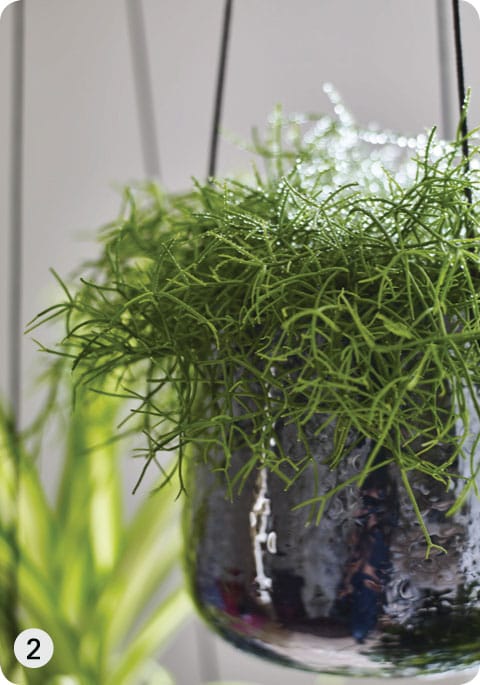
2 Secure plants from hooks in the ceiling, rafters or shelves, or suspend them from a curtain pole or coat rack.
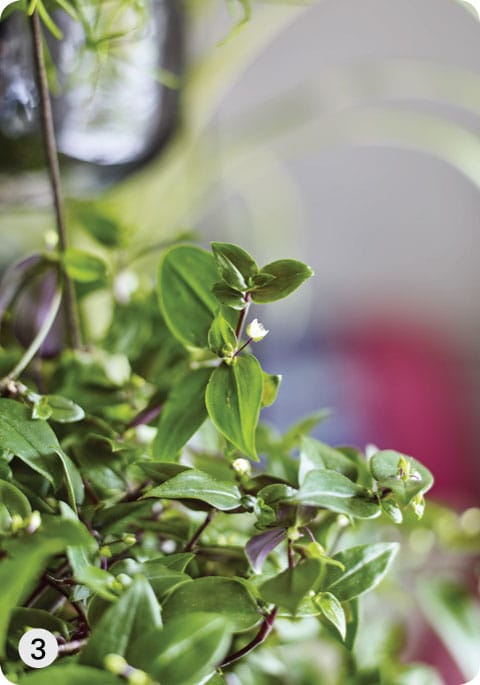
3 Tradescantia ‘Green Hill’ makes a striking feature plant with its pretty, white flowers and leaves that are purple underneath.
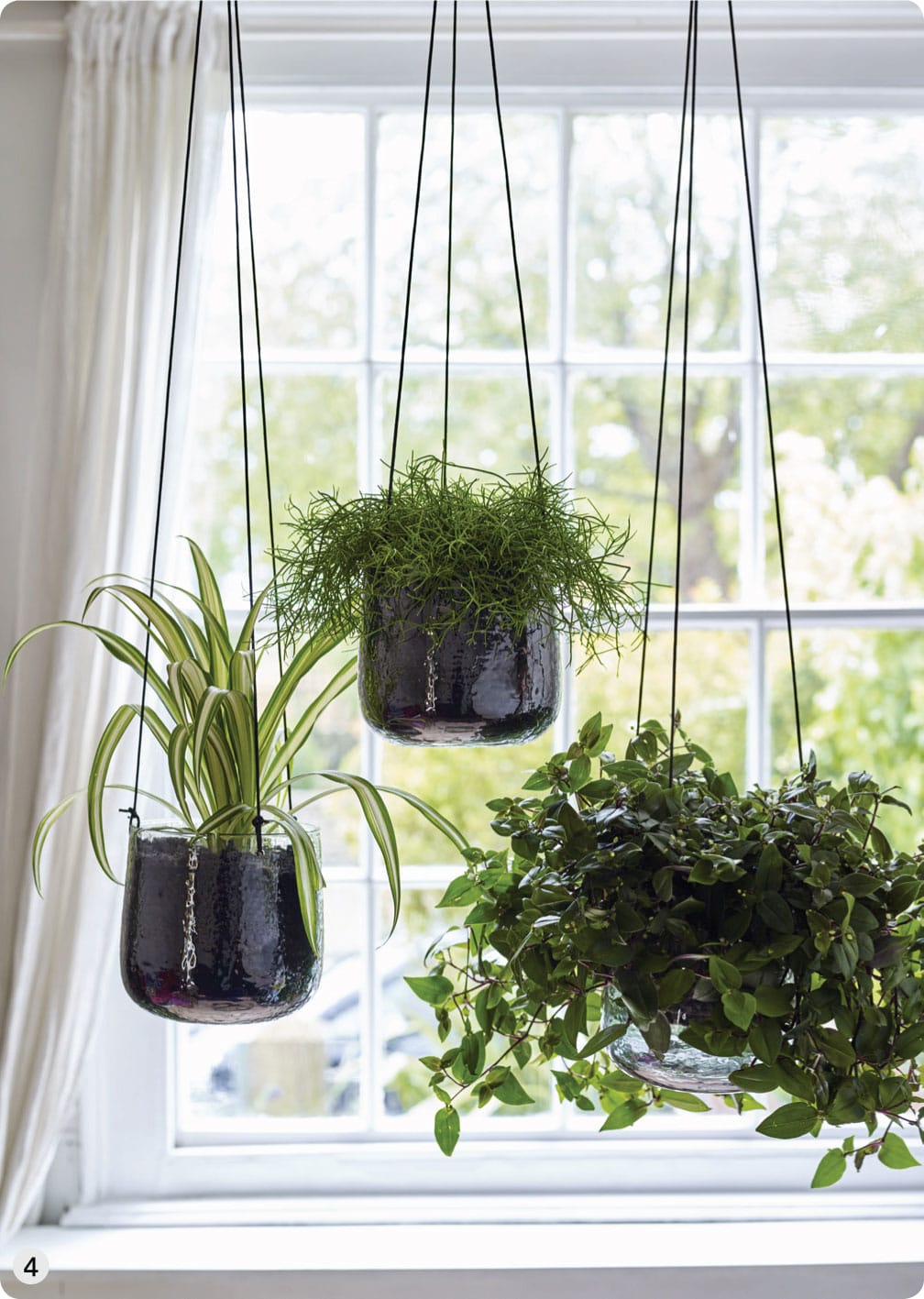
4 When hung in front of a window, plants (here, spider plant, mistletoe cactus and Tradescantia ‘Green Hill’) will create a living curtain of greenery.
SUCCULENT
Zebra cactus
Haworthia fasciata aka pearl plant, star window plant
A tidy, little plant with a rosette of spiky, triangular leaves, zebra cactus resembles an aloe (see here) but has distinctive markings, including those with raised, white stripes or pink bumps. It is an easy house plant to grow, tolerating lower light levels than other succulents.
WHERE TO GROW
Set on an east- or west-facing windowsill. In displays, zebra cactus contrasts beautifully with other cactus and rounder-leaved succulents such as moulded-wax succulent.
HOW TO GROW
Grow in a coarse, open, free-draining compost (see here). Water plants well in spring and summer; in winter, water only occasionally. Feed once a month in spring and summer.
GROWING TIP
Offsets – ‘pups’ – can be easily removed; leave them to dry out for a couple of days and then plant up as new, individual plants (see here).
RED FOR DANGER
When exposed to too much sun or deprived of water, the zebra cactus will change colour to red or purple.
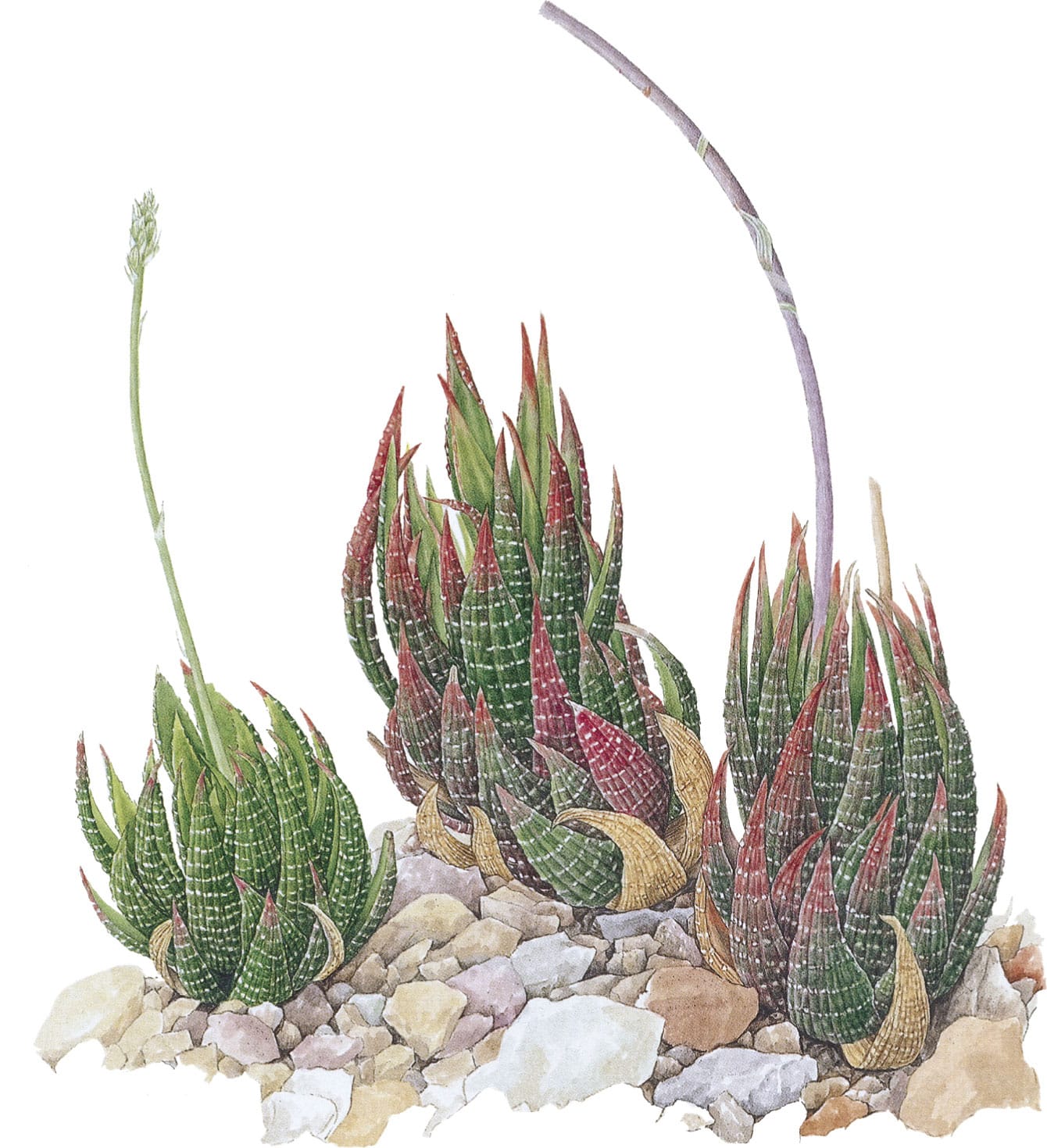
PALM
Bellmore sentry palm
Howea forsteriana aka kentia palm, thatch palm
Bring a touch of the tropics to your living space with this elegant, architectural palm. Endemic to Lord Howe Island in Australia, it will eventually reach a height of 3m/10ft, but slowly – this plant is a long-term investment. Fortunately, it is a toughie and very easy to look after.
WHERE TO GROW
Although plants tolerate a lot, they will always look their best when given moist, humid conditions and indirect light. They will thrive in front of a north- or east-facing window.
HOW TO GROW
Mist regularly or give them a shower in tepid water or outside in summer rain. Feed every two weeks from spring to autumn. Allow the compost to dry out between watering in winter. These palms dislike disturbance so repot them carefully only when plants are particularly root-bound, and only topdress larger plants.
GROWING TIP
To create a bushier look, Bellmore sentry palm is often sold with more than one plant in a container.
PROTECTIVE VIGIL
Bellmore sentry palms graced most houses during the Victorian era, and Queen Victoria loved them so much she instructed that they were to be placed around her coffin when she lay in state.

FLOWERING
Wax flower
Hoya carnosa aka wax vine, porcelain flower, Hindu rope plant
These gorgeous, tropical creepers have waxy leaves and sweetly scented, pale pink flowers that look strangely artificial. They appear in summer and can drip with sticky nectar in the mornings. Hoya lanceolata subsp. bella has a more compact habit and is perfect for a small room.
WHERE TO GROW
Plant this fast grower in a basket or loop it around wire. It is actually tolerant of deep shade and drought, but to flower it requires brighter light and moister compost.
HOW TO GROW
Grow in an open potting mix that comprises an equal quantity of multipurpose compost and perlite. Mist plants regularly but not when in flower, or grow them on a tray of pebbles and water. Feed every two weeks in the growing season. In winter, allow the top of the compost to dry out between watering. Plants flower better when a little snug, so keep them slightly root-bound.
GROWING TIP
Once flowers fade, they produce further blooms so do not snip out the knobbly spurs.
NOT JUST A PRETTY FACE
Wax flower is excellent at removing pollutants from the air (see also Natural air fresheners).

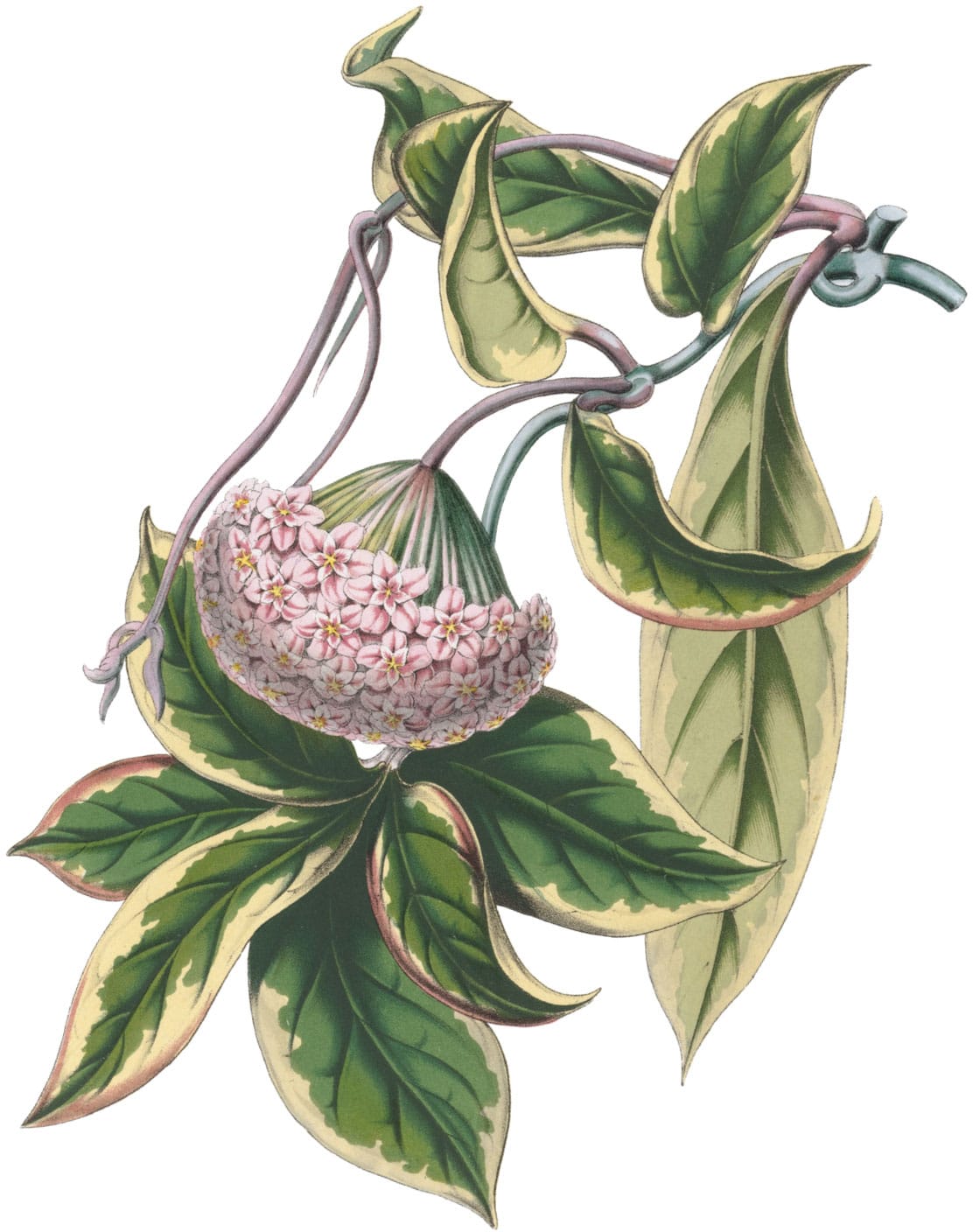
FOLIAGE
Polka dot plant
Hypoestes phyllostachya aka flamingo plant, freckle face, baby’s tears
These jaunty little plants are brightly spotted with pink, red, light green or white speckles on their heart-shaped leaves – there are many cultivars (and some can look a little gaudy). They are undemanding but relatively short-lived and get tattier with age so eventually need replacing.
WHERE TO GROW
Above the kitchen sink or in a bathroom are ideal spots, but place them back from a window. However, if set in too dark a spot, the leaves can revert to solid green. These are great plants for growing in a terrarium (see Miniature rainforest).
HOW TO GROW
Polka dot plant needs the top of its compost to dry out between waterings in the growing season. Mist plants every few days, group with others or stand on a tray of pebbles and water, to keep humidity levels up. Feed every two weeks from spring to autumn. In winter, keep compost just moist. After a couple of years, plants will flower in summer and then slip into a dormant phase – just reduce watering until new shoots appear.
GROWING TIP
Pinch out the stem tips to encourage a bushier, neater plant.
WATCH OUT
Plants seed freely outside, and garden escapees in warmer countries have made polka dot plant an invasive weed.

FLOWERING
Jasmine
Jasminum polyanthum aka scented Chinese jasmine, pink jasmine vine
The star-shaped blooms have an intoxicating scent that is particularly heady at night, and the lobed, deep green leaves make this the prefect package. For a little more variety, J. polyanthum ‘Variegata’ has creamy yellow-edged leaves.
WHERE TO GROW
Keep away from draughts and radiators, particularly in winter. Too warm a room will prevent the plant from flowering. These vigorous growers will twine themselves around hoops or up supports.
HOW TO GROW
Water plants regularly in spring and summer, particularly when plants are in bud and flower. After that, allow them to dry out a little. Feed every two weeks, from spring to autumn. Plants prefer to be tightly packed into their pots, so repot them only when young; topdress larger plants with fresh compost.
GROWING TIP
To ensure plants flower again, prune jasmine hard after flowering, reducing the main stems and side shoots to 2–3cm/3/4–11/4in.
FLORAL TREAT
The flowers of this heavenly scented, twining climber appear copiously in late winter and spring.
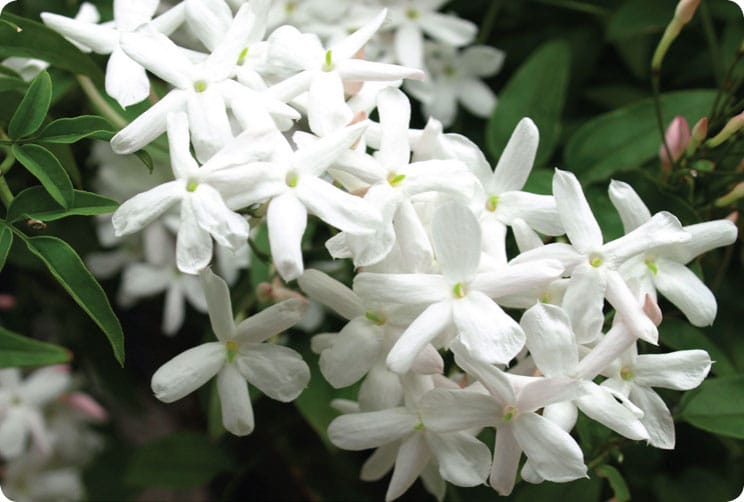
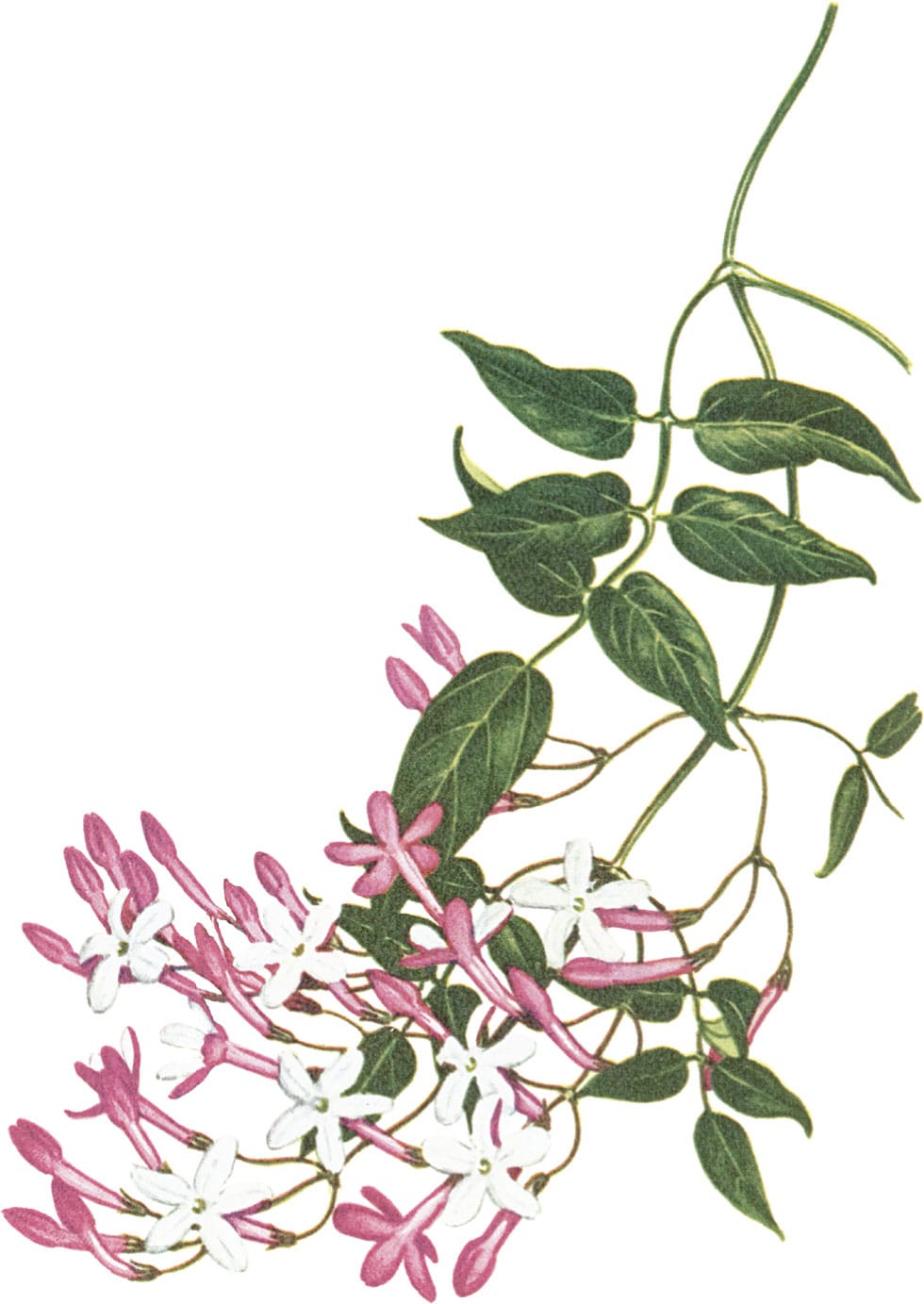
SUCCULENT
Flower-dust plant
Kalanchoe pumila aka dwarf kalanchoe, quicksilver
These are lovely, little, easy-care plants with dusty grey leaves that are appealingly toothed with pinking-shear edges. In winter and spring, plants bear clusters of dusky pink and purple flowers at the ends of sprawling stems.
WHERE TO GROW
Needs a bright spot in a south-facing window in an airy room. Its pendent habit makes it perfect for a hanging basket or to trail over a shelf or windowsill.
HOW TO GROW
Grow in an open, free-draining compost mix (see Cacti and succulents). To protect the foliage, water from below (see here). In autumn and winter, the compost can be kept almost dry. Feed plants monthly from spring to late summer.
GROWING TIP
Deadhead faded blooms, then give the plant a rest, reducing watering until new growth begins.
USEFUL NAME
The pumila in the botanical name means ‘low-growing’ or ‘small’ – referring to this plant’s diminutive stature.

SUCCULENT
String of pearls
Kleinia rowleyana aka string of beads
The cascading strings of pea-like beads, or ‘pearls’, make this plant top of many house plant collectors’ lists. Although it looks fragile, it is brilliantly tough and a great plant for beginners, as it is more than capable of coping with neglect. In spring, small, white, daisy flowers may appear.
WHERE TO GROW
String of pearls is perfect for a table or desk or hanging in a south-facing window. Give the plant cooler conditions in winter, no less than 10°C/50°F, to encourage flowering. Plants are toxic to humans and animals, so keep them well out of the way of pets and little fingers.
HOW TO GROW
Grow in a gritty cactus compost mix (see Cacti and succulents). Feed once a month in spring and summer. Make sure the plant never sits in water. In winter, water very sparingly; if the beads start to shrivel, the compost is too dry. Trim plants if needed in spring (and grow the prunings on as stem cuttings, see here). Repot every two or three years, taking care not to break the stems by holding them carefully in your hand.
GROWING TIP
Whenever a stem touches soil, or compost, it takes root so this is a very easy plant to propagate.
THE NATURAL WAY
We may grow it in hanging pots and baskets, but in its native environment plants creep across the ground rooting as they go, to form dense mats of green beads.

SUCCULENT
Living stones
Lithops aka pebble plants
These amazing, low-lying plants are composed of two swollen leaves with a slit in between, which produces new leaves and flowers. Some varieties have speckled or patterned markings, others bear spots, while many are plain glaucous green. In late summer and autumn, they produce white or yellow, daisy-like flowers. They are easy to look after, making them ideal for the forgetful waterer, and they are also great for arousing children’s interest.
WHERE TO GROW
Give them a hot, south-facing window year-round. Warmth is particularly important in winter, when the light levels drop but plants are still growing.
HOW TO GROW
Plant in a sharply draining cactus compost mix. In winter, spring and summer, water plants as soon as the leaves start to shrivel. In autumn, increase watering so that the leaves stay constantly firm. Too much water can cause plants to burst, while plants will shrink and can disappear below the surface of the compost if conditions get too dry. Feed plants just once, in autumn.
GROWING TIP
Slow-growing living stones prefers to be cultivated in an individual pot rather than in a combined display. It requires potting on only very rarely.
CAMOUFLAGE
In order to avoid being eaten, these plants have evolved to resemble the pebbles and stones that litter their native South African desert floor.

CACTUS
Pincushion cactus
Mammillaria species aka powder puff cactus, nipple cactus
Pincushion cactus is a popular house plant that is generally easy to look after. It is small, often rounded or columnar, and covered in spines. In summer, it rewards growers with a ‘crown’ of brightly coloured flowers.
WHERE TO GROW
These plants are ideal for a bright windowsill. In summer, move them out of direct, scorching sun.
HOW TO GROW
Plant in a sharply draining cactus compost mix. Feed once a month in the growing season. In winter, when plants are dormant, water just a couple of times. Repot plants carefully, wearing gloves, every couple of years in spring. Plants are easy to propagate by offsets (see here).
GROWING TIP
During the dormant season, move plants to a cool, bright, dry room away from a radiator and other heat sources.
FLORAL CROWN
Pincushion cactus has distinctive tubercles – tiny bumps that cover the surface of the plant and from which spines and flowers grow.

FOLIAGE
Prayer plant
Maranta leuconeura var. kerchoveana aka rabbit tracks, rabbit’s foot
These striking plants have leaves that appear to be hand-painted. The undersides are red, but the upper leaf surfaces have dark and light green blotches and veins picked out in red across each leaf. Prayer plant is trickier to grow than some house plants but is less demanding than its other cousins in the family.
WHERE TO GROW
Position away from cold draughts and the drying heat of radiators or other sources.
HOW TO GROW
Mist leaves every few days or place on a tray of pebbles and water, to raise humidity around the plant. Growing it in a group with other plants also helps. Feed every two weeks in spring and summer. Allow the compost to dry out slightly between watering, in winter.
GROWING TIP
Young plants will thrive in a humid terrarium or bottle garden (see Miniature rainforest).
FOLDING FOLIAGE
The common name prayer plant derives from the way the leaves, which are flat and open during the day, endearingly fold together at night, like hands in prayer.

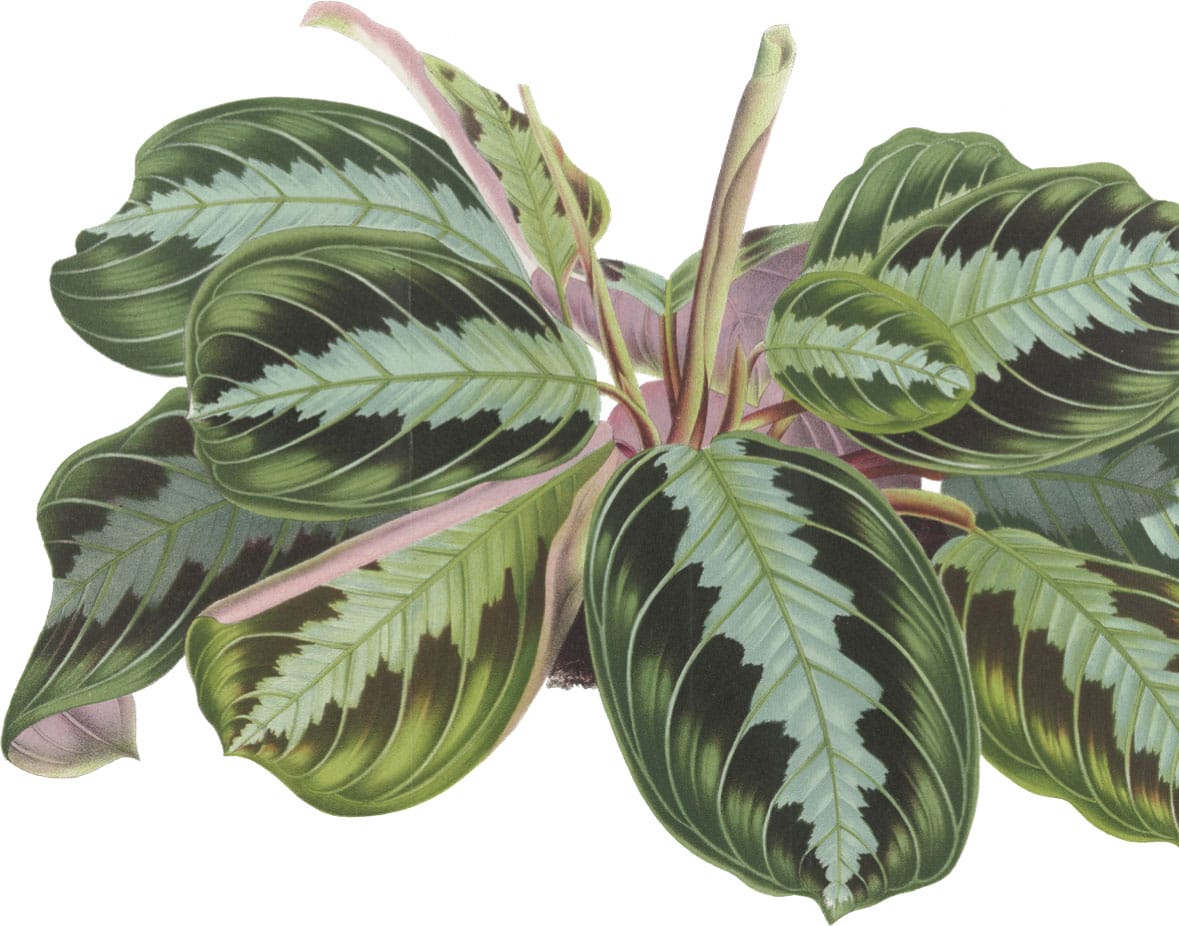
Maranta leuconeura var. massangeana
PROJECT 7
Windowsill propagation
Many house plants can be propagated as leaf cuttings rooted in compost (see here) or in water. Using the latter technique they make a lovely temporary display while rooting. Even plants that cannot be increased in this way but have beautiful leaves can be chosen to create a vibrant and interesting water garden. Display them in plain or coloured glasses, small bottles or pretty vases that are in proportion to the leaf cuttings and position them on a windowsill or shelf, or group them as a centrepiece for your table.
PLANTS THAT MAKE GOOD CUT LEAVES
Asparagus fern (Asparagus setaceus)
Chinese evergreen (Aglaonema commutatum) – also roots in water
Devil’s root (Epipremnum aureum) – also roots in water
Dwarf umbrella tree (Schefflera arboricola)
Fern arum (Zamioculcas zamiifolia)
Foxtail fern (Asparagus densiflorus)
Goeppertia ‘Whitestar’
Peace lily (Spathiphyllum wallisii)
Peacock plant (Goeppertia makoyana)
Prayer plant (Maranta leuconeura var. kerchoveana)
Rose grape (Medinilla magnifica)
Spider plant (Chlorophytum comosum ‘Variegatum’) – also roots in water
String of hearts (Philodendron xanadu) – also roots in water

1 Remove a leaf (here, devil’s root) from the base or stem of the plant and cut it to size, at a 45-degree angle, so that it sits comfortably in its glass. Such an angled cut maximizes the amount of water absorbed.
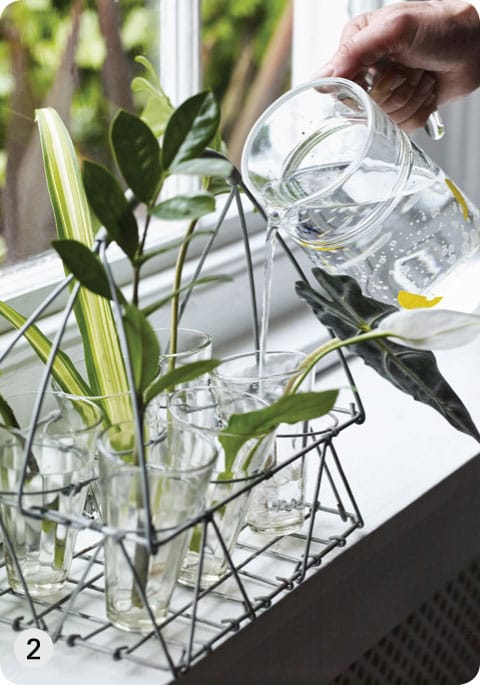
2 Half fill a glass or vase with water and place the leaf cutting with others in a group (here, fern arum, peace lily, spider plant and Amazonian elephant’s ear).
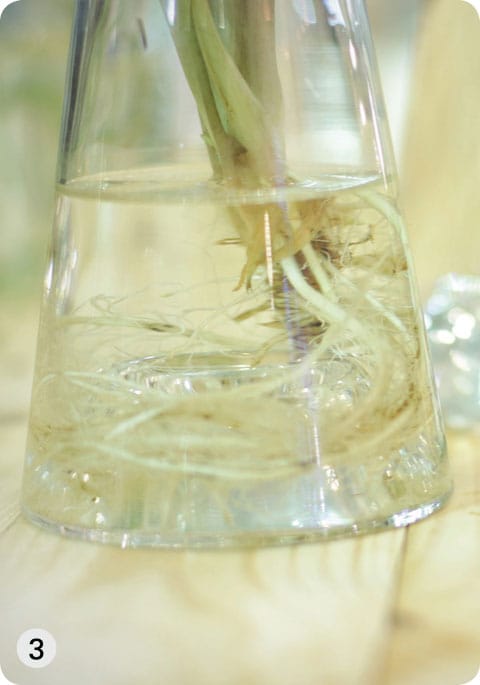
3 Change the water every few days, to keep it fresh, and replace spent leaves when needed.
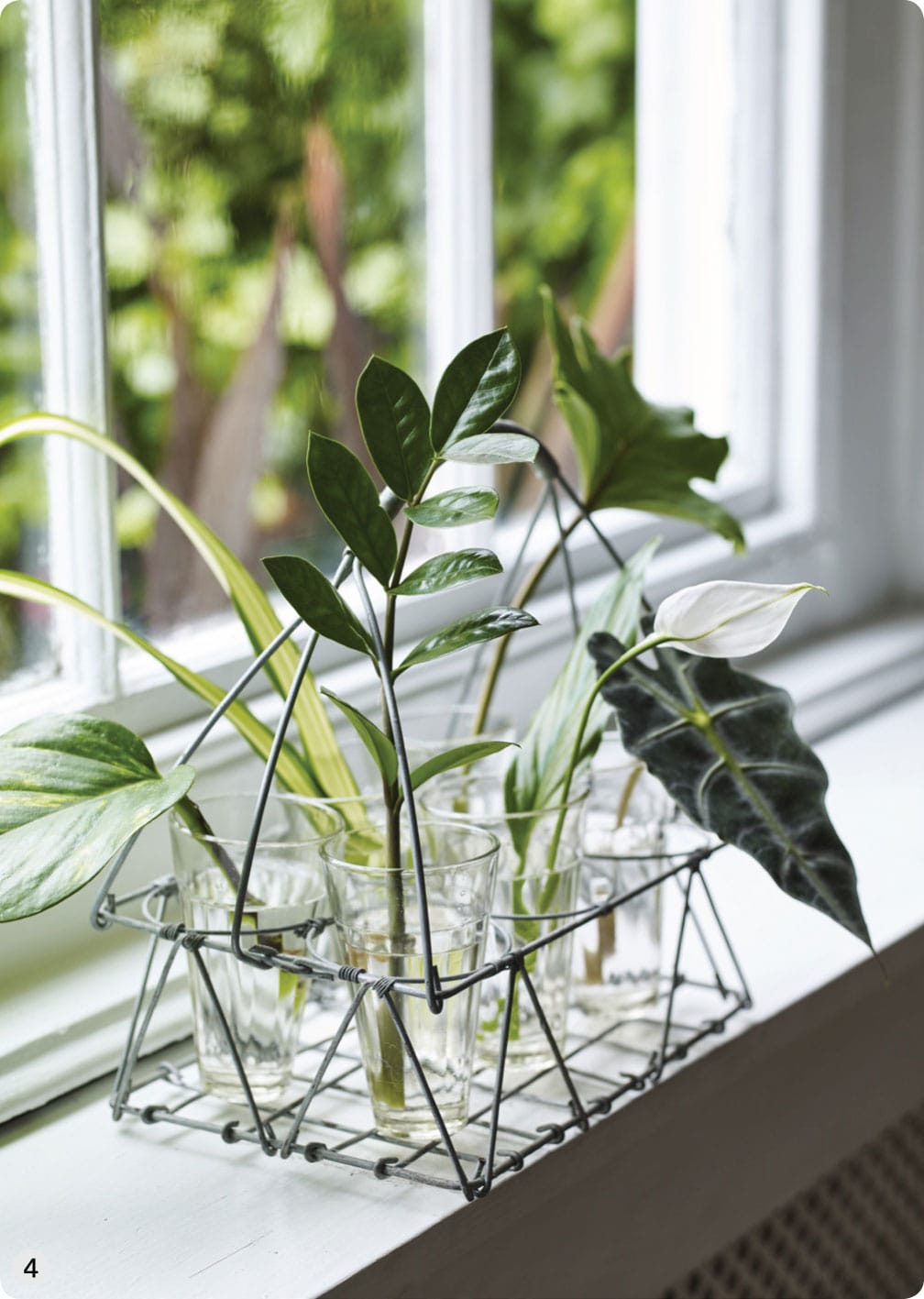
4 Once roots have formed in the water, you can plant rooted stems straight into compost in a new pot or else leave them as they are in the water.
FLOWERING
Rose grape
Medinilla magnifica aka pink lantern, Philippines orchid
When this truly exceptional plant blooms it stops you in your tracks. The large, heavily veined, deep green leaves are wonderful on their own, but the hanging, lipstick-pink, papery bracts and flowers are something else. It is called rose grape after the pink flower buds that hang from its bracts, like bunches of tiny grapes.
WHERE TO GROW
Grow this epiphyte in a tall pot or on a shelf so that it can dangle over the edge. An east- or west-facing window is ideal; just make sure it still gets plenty of light in winter.
HOW TO GROW
Plant in orchid compost, and water from below (see here). Raise the humidity by misting the leaves every other day or by growing on a tray of pebbles and water. Feed every two weeks from spring to summer. In winter, water just enough to stop the compost drying out completely; resume more regular watering when flowers stems are visible. Deadhead the blooms as they fade.
GROWING TIP
Encourage this plant to reach its fully mature size by repotting it every two to three years. It should grow to a magnificent 1m/39in tall and wide.
REGAL NOTE
In the 1990s, King Baudouin of Belgium was so devoted to rose grape that he grew it in his conservatories and they were depicted on the Belgian 10,000 franc note.


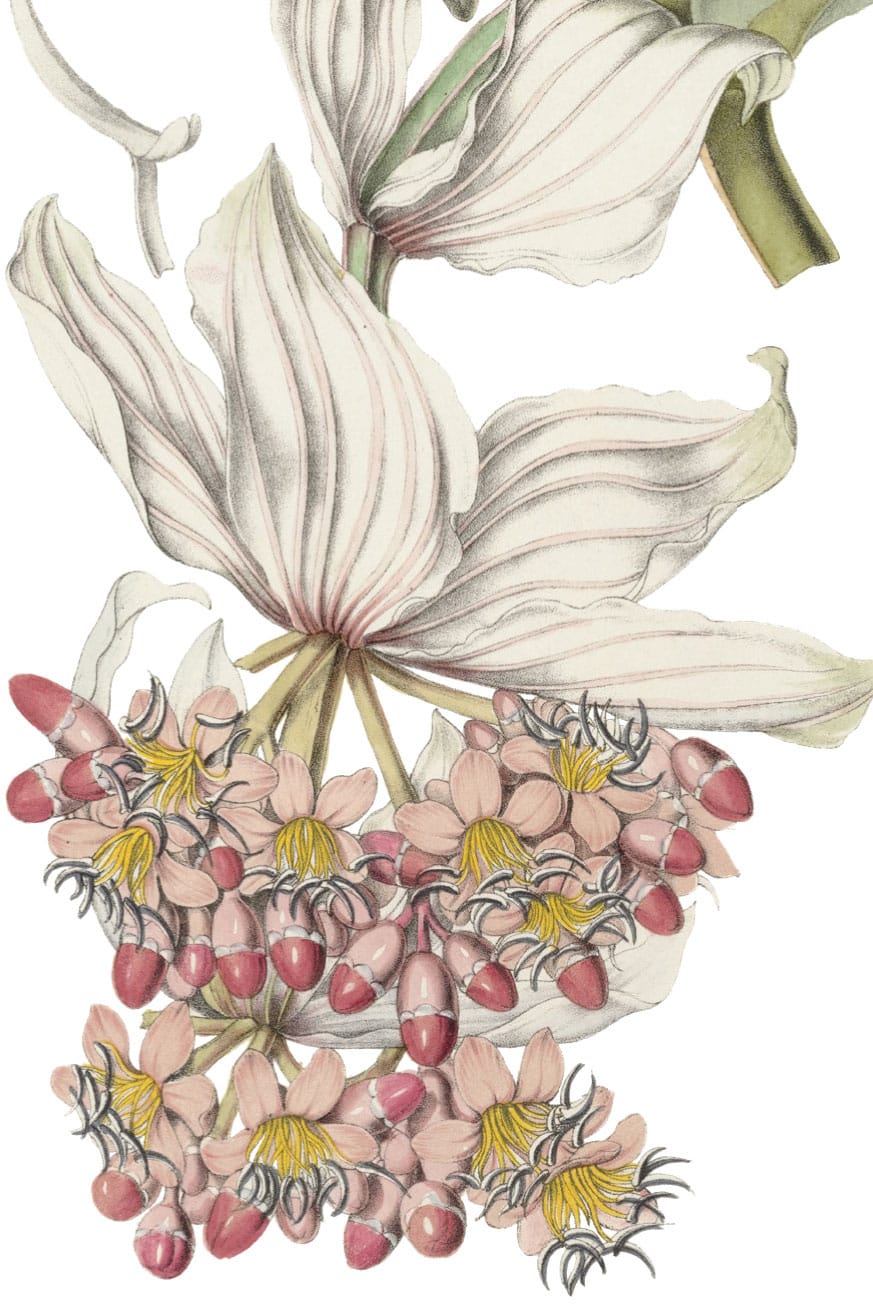
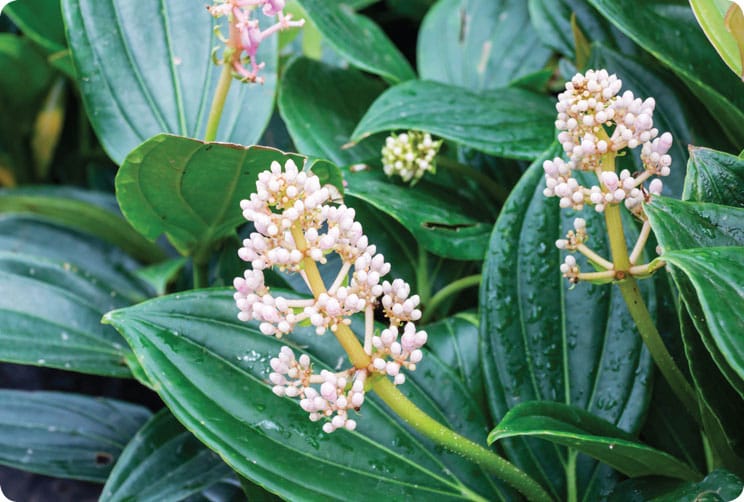
FOLIAGE
Swiss cheese plant
Monstera deliciosa aka fruit salad plant, ceriman
With its beautifully holey, heart-shaped leaves and climbing habit, Swiss cheese plant has long been a house plant favourite, although this seventies classic did fall out of favour for a few years. It is back with a vengeance now and very easy to grow, as long as you have plenty of space for it.
WHERE TO GROW
It is the perfect plant to transform a negative space or dull corner – provided it is not too gloomy nor too shady as new leaves will not then have their distinctive holes. Swiss cheese plant is often sold clinging to a mossy pole but it can also be left to sprawl or climb over your own support.
HOW TO GROW
Water as soon as the compost feels dry, but in winter allow it to dry out a little. Mist the leaves (and the moss pole if it is grown up one) every couple of days or grow on a tray of pebbles and water. Feed monthly in the growing season. Prune in spring, to keep Swiss cheese plant in check.
GROWING TIP
The more content the plant, the larger the leaves will grow.
EVOLUTION
Native to the tropical rainforests of Panama and Mexico, the leaves on Swiss cheese plant have become ribbon-like to allow light and water through to the plant roots below.


BROMELIAD
Blushing bromeliad
Neoregelia carolinae f. tricolor
One of the most dazzling house plants, this sprawling bromeliad has a flat, open rosette of yellow-striped leaves that blush bright red at the centre when it is about to flower. Small, violet flowers appear deep inside the well in summer, but it is the bright bracts that are the main attraction.
WHERE TO GROW
Position by an east- or west-facing window, giving the plant centre stage on a dining or coffee table. Too much sun scorches the leaves while too little causes its colours to fade.
HOW TO GROW
Grow in a 50:50 mix of orchid compost and multipurpose compost. Keep the central well topped up with rain-, filtered or distilled water, so that it is always at least 2cm/3/4in full. Water when the top of the compost feels dry. Mist the leaves every few days. Feed plants once a month by spraying the leaves with a diluted liquid feed.
GROWING TIP
Like other bromeliads, this one dies after flowering, but not before producing offsets at the base of the rosette. These can be grown on into new plants (see here).
FLORAL ALERT
The bright colours at the centre of the rosette are a sign to nearby pollinators that the plant is about to flower.

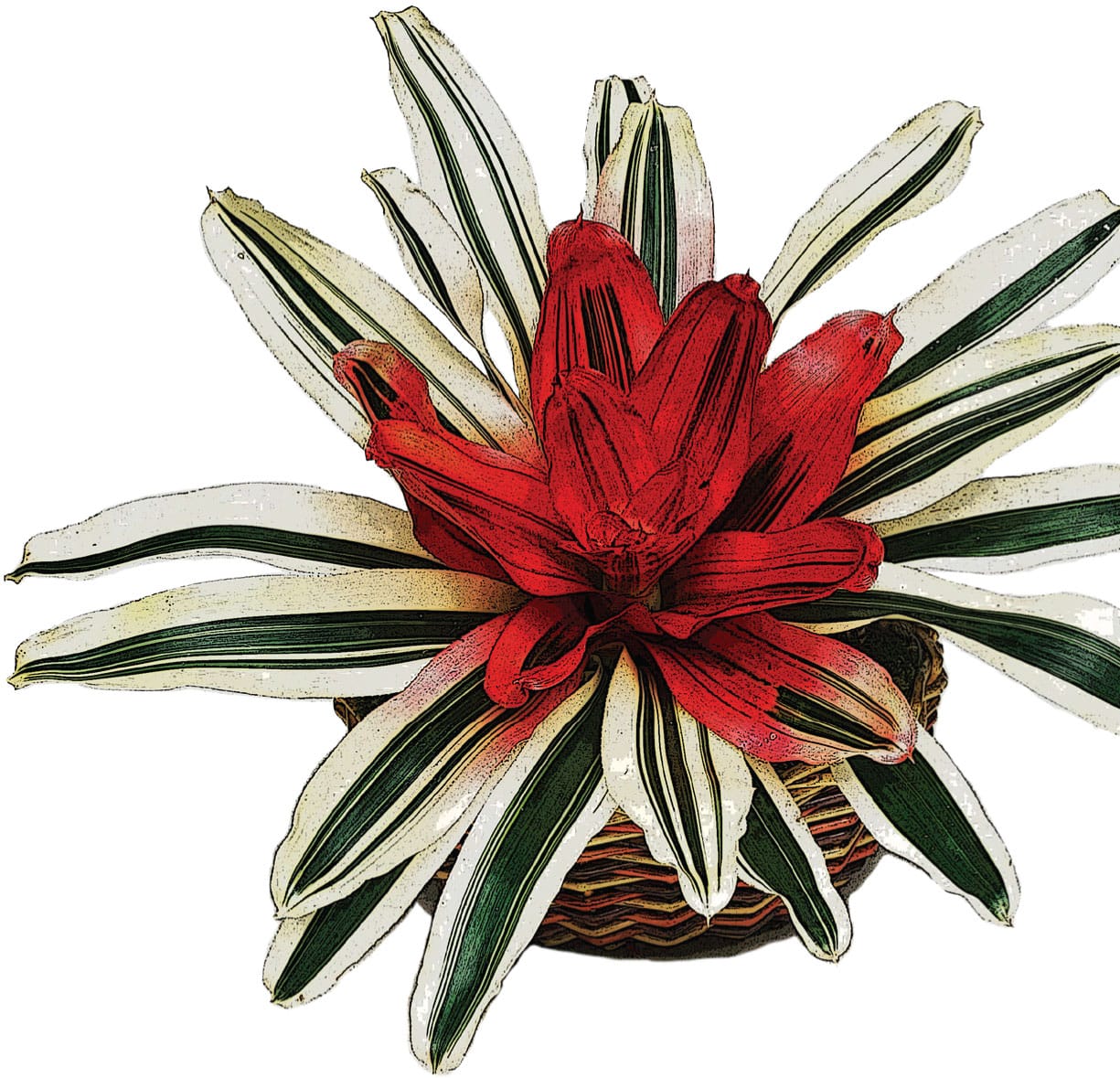
CARNIVOROUS
Monkey cups
Nepenthes sanguinea aka tropical pitcher plant
Carnivorous monkey cups is a scrambling, climbing plant that catches insects and other small creatures in its deep, hanging pitchers, which fill with water and then drown their prey. A vigorous grower with pretty, burgundy pitchers to 30cm/12in long, it is more forgiving than others in its family when it comes to cultural conditions and care.
WHERE TO GROW
Ideal for a hanging basket in a bright, humid room or placed on a shelf above the bath or the kettle in the kitchen.
HOW TO GROW
Grow in an open, low-nutrient compost mix (see Carnivorous plants). Mist every day or stand on a tray of pebbles and water, to keep humidity levels up. Unlike other carnivorous plants, monkey cups can be fed in summer with a foliar feed every couple of weeks (see also Carnivorous vase).
GROWING TIP
Keep out of direct light; these plants are at home in shady rainforests and too bright light will scorch their leaves.
GIANT RELATIVE
Closely related to monkey cups is N. rajah, which grows on the slopes of Mount Kinabalu and is the largest carnivorous plant in the world. Its giant pitchers measure as much as 40x20cm/16x8in.
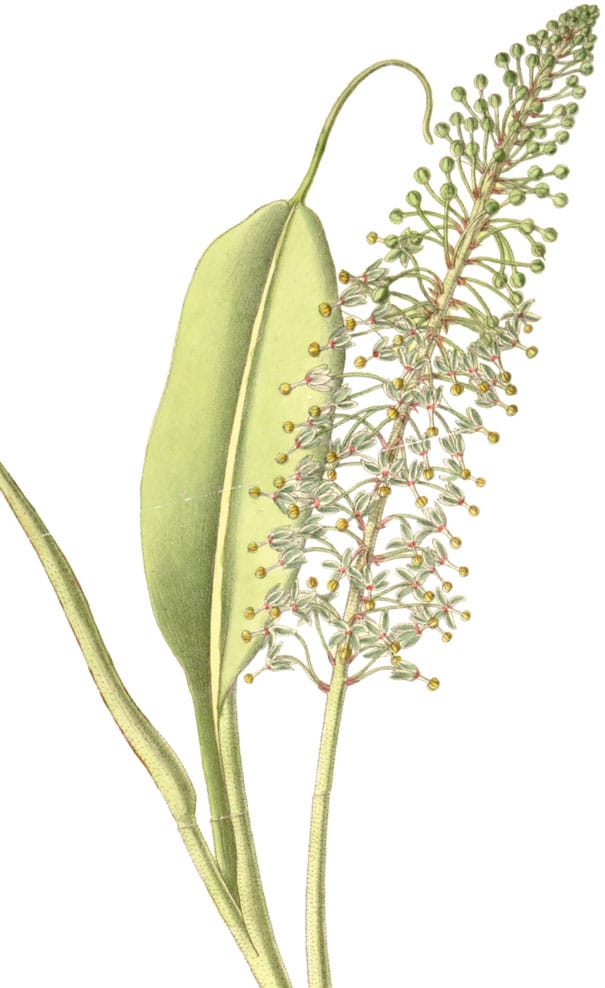
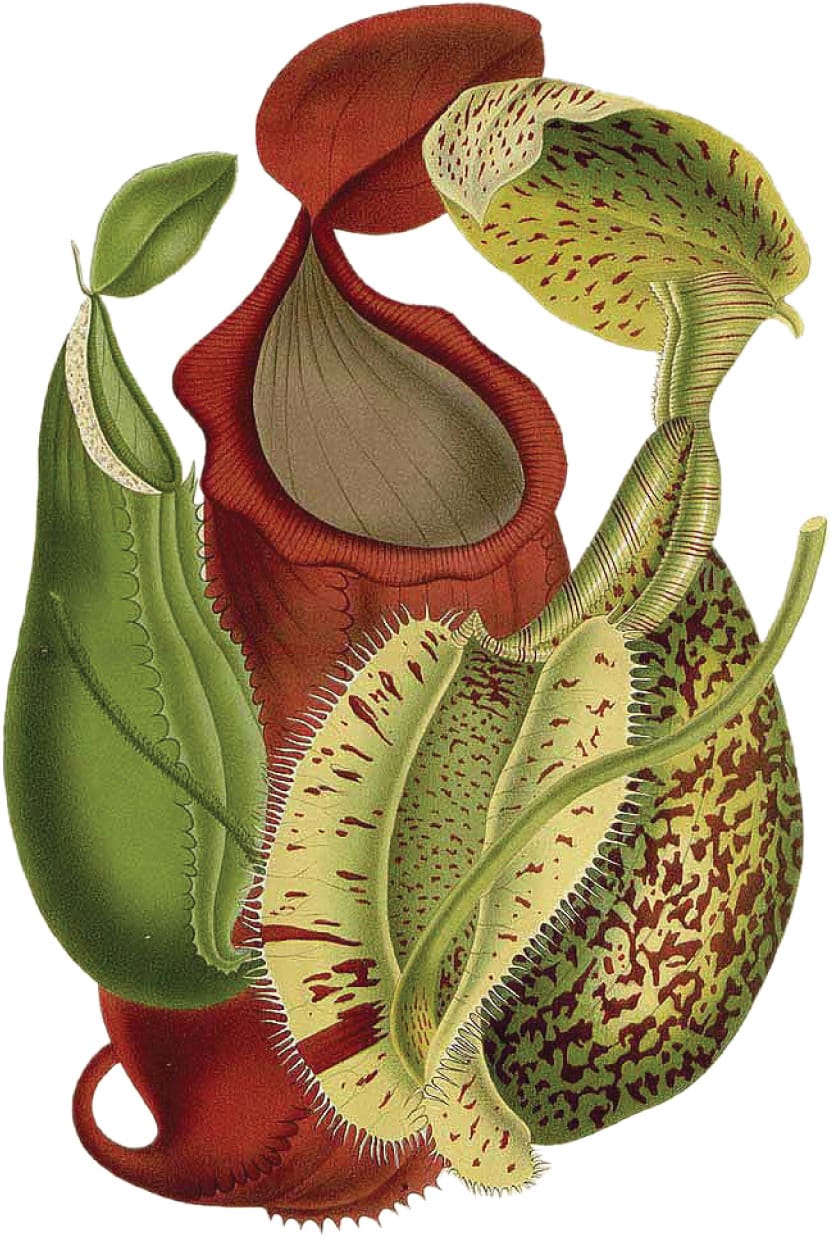
FERN
Boston fern
Nephrolepis exaltata aka sword fern, ladder fern, fishbone fern
A popular and easy-to-grow plant, Boston fern produces a beautiful fountain of abundant green, cascading fronds.
WHERE TO GROW
Boston fern is perfect for the bathroom or a busy kitchen. If growing in a drier room, mist daily or place on a saucer of pebbles and water. With its ruffled, arching habit, it is magnificent in a hanging basket or flowing over a shelf, and if allowed it can become a large statement plant.
HOW TO GROW
Mist plants daily (see above), and feed them monthly from spring to autumn. Reduce watering in winter, so that the compost starts to dry out. Plants keep growing the more room you give them so repot every spring.
GROWING TIP
Regularly turn plants grown on shelves, as they have a habit of going bald at the back. Any fronds that die back or are scorched can be cut off at the base.
LONG-LASTING
N. exaltata ‘Bostoniensis’ is the classic Boston fern prevalent on plant stands in Victorian parlours and still available today.

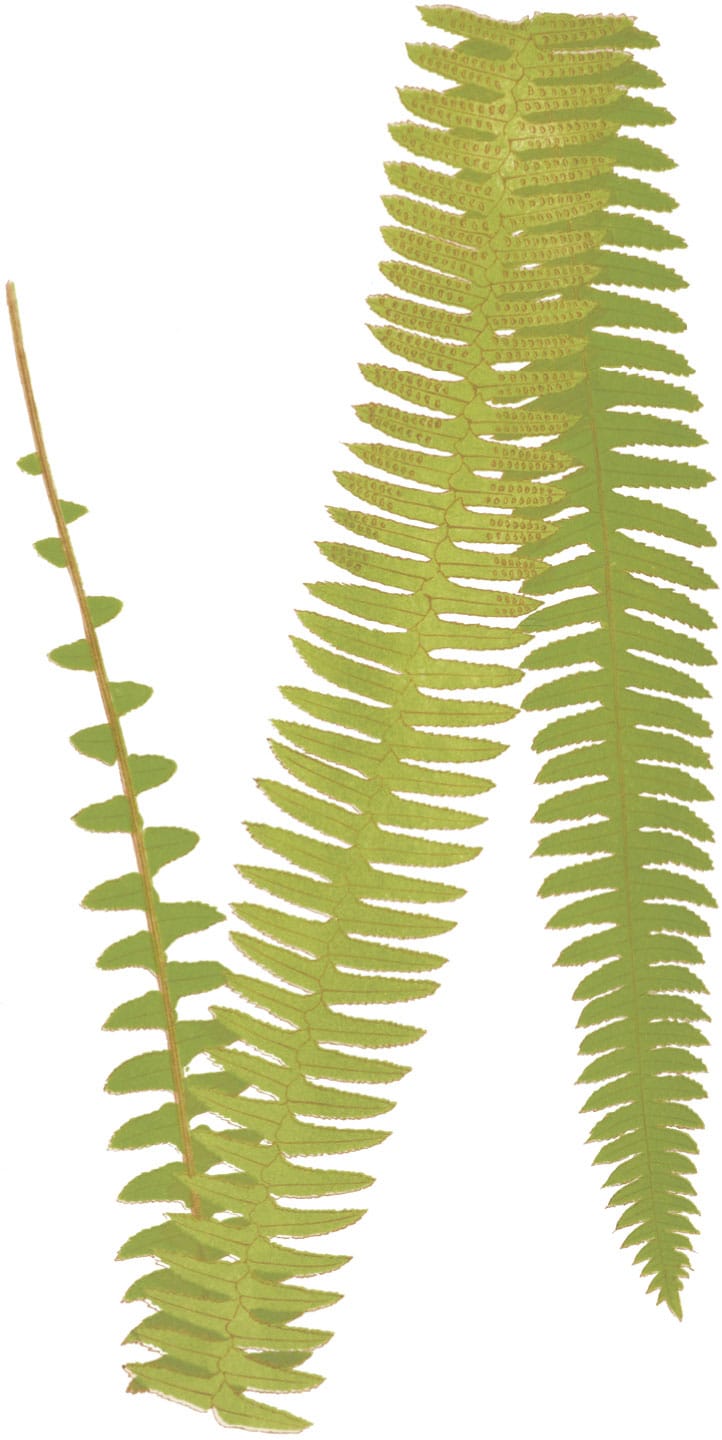
CACTUS
Bunny-ears cactus
Opuntia microdasys aka polka dot cactus, angel’s wings
Endemic to the Mexican desert, this striking architectural cactus has distinctive, flattened stem pads that are dotted with clusters of tiny prickles. These are not spines but glochids – hair-like, barbed prickles that are grouped together in areoles across the pad. Once mature, plants bear large, deep yellow flowers in spring and early summer on the tips of the pads.
WHERE TO GROW
A south-, west- or east-facing window is ideal for the growing season; it prefers a cool room in winter. Position it somewhere it will not be knocked into or brushed against – the tiny hairs come off and imbed themselves into hands or arms very easily (and painfully).
HOW TO GROW
Grow in a coarse, open, free-draining compost mix. In spring and summer, water plants weekly. When the plant is dormant it needs very little; just water once or twice – a little more if it is near a radiator or fire. Feed plants every couple of months, from spring to autumn.
GROWING TIP
The barbed glochids come off much more easily than the true spines on other cacti so this plant is not one to be grown around children or pets.
AIDING SURVIVAL
The flat pads are modified stems or cladodes that have evolved to help the plant cope with drought.
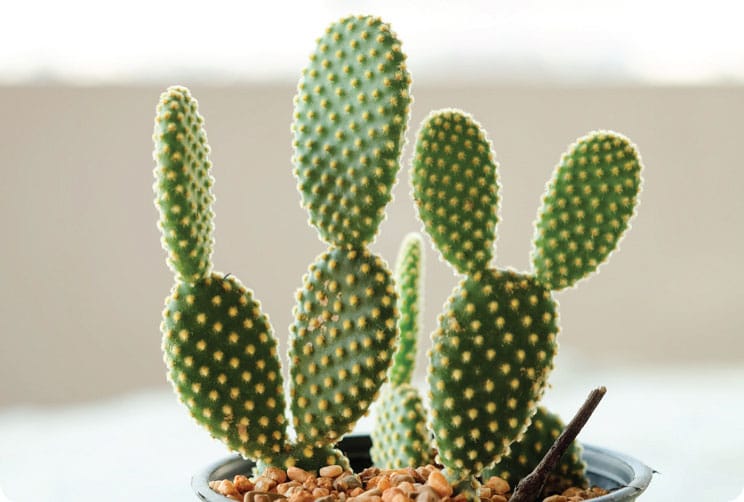
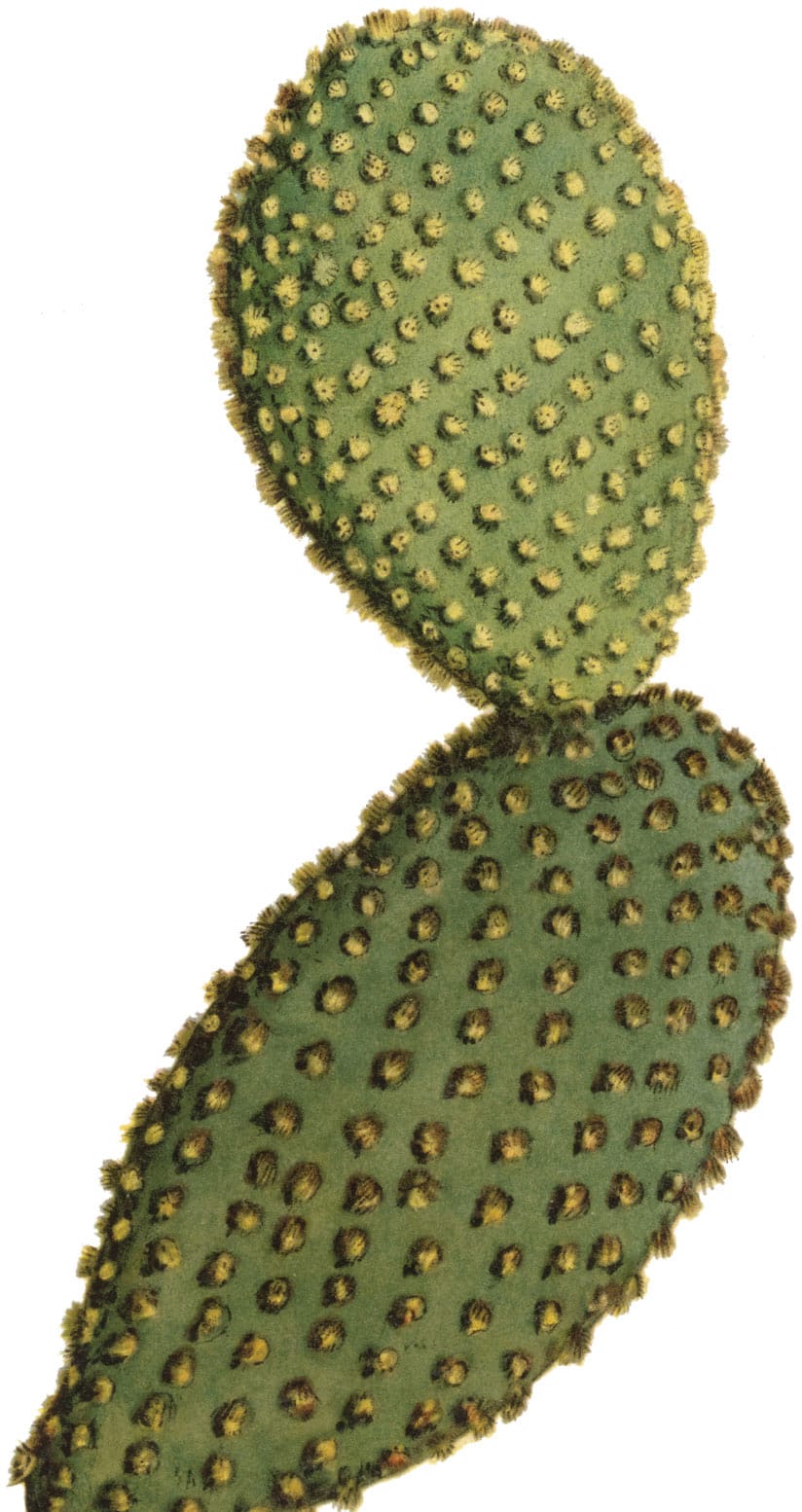
FLOWERING
False shamrock
Oxalis triangularis aka love plant
These endearing plants have shamrock-like, purple leaves held at the end of delicate, straggly stems. Although dainty clusters of pale pink flowers last for several weeks in spring and summer, false shamrock’s most endearing feature is that its leaves respond to light by opening during the day and then gently closing together at night. It also has a fibrous bulbous root system, which makes it the perfect house guest for forgetful waterers.
WHERE TO GROW
Give false shamrock a front-row seat on a table or windowsill and then move somewhere less obvious when dormant in winter.
HOW TO GROW
Plant in a free-draining potting compost with equal parts of perlite mixed in. Feed monthly in spring and summer. In winter, the bulb is dormant, the leaves die back and false shamrock needs no water. Begin watering again after a couple of months; new growth will soon appear.
GROWING TIP
Plant new bulbs in autumn, ensuring each is 5cm/2in below the surface of the compost.
FOOD ALERT
Although false shamrock has a tangy lemony flavour and makes a colourful addition to salads or pesto, it should be eaten in moderation because of the oxalic acid it contains.


PROJECT 8
Picture perfect
Many house plants that are grown for their spectacular foliage are as eye-catching as a work of art, and if you snip off a leaf and insert it in a frame it can become one. When hung in a window, plants with thinner leaves will allow the light to shine through, illuminating their colours; or select intricately shaped foliage and lean your frame against a wall, to create striking silhouettes.
Use specialist frames that have two pieces of glass, or simply buy two cheap frames and use the glass from both instead of the backing board in just one frame. You can flatten thicker leaves first between the pages of a heavy book protected by baking paper.
As leaves fade, replace them with fresh ones or allow them to take on sepia hues for a different look.
PLANTS FOR PICTURE FRAMES
Amazonian elephant’s ear (Alocasia x amazonica)
Bellmore sentry palm (Howea forsteriana)
Bird’s nest fern (Asplenium nidus)
Boston fern (Nephrolepis exaltata)
Button fern (Pellaea rotundifolia)
Cretan brake fern (Pteris cretica)
Delta maidenhair fern (Adiantum raddianum)
False shamrock (Oxalis triangularis)
Prayer plant (Maranta leuconeura var. kerchoveana)
String of hearts (Philodendron xanadu)
Swiss cheese plant (Monstera deliciosa)

1 Lay your chosen leaves (here, Boston fern, bird’s nest fern and delta maidenhair fern) carefully on the bottom pane of glass and then gently lower the top pane on to them. Line up the panes and slide them into the frame
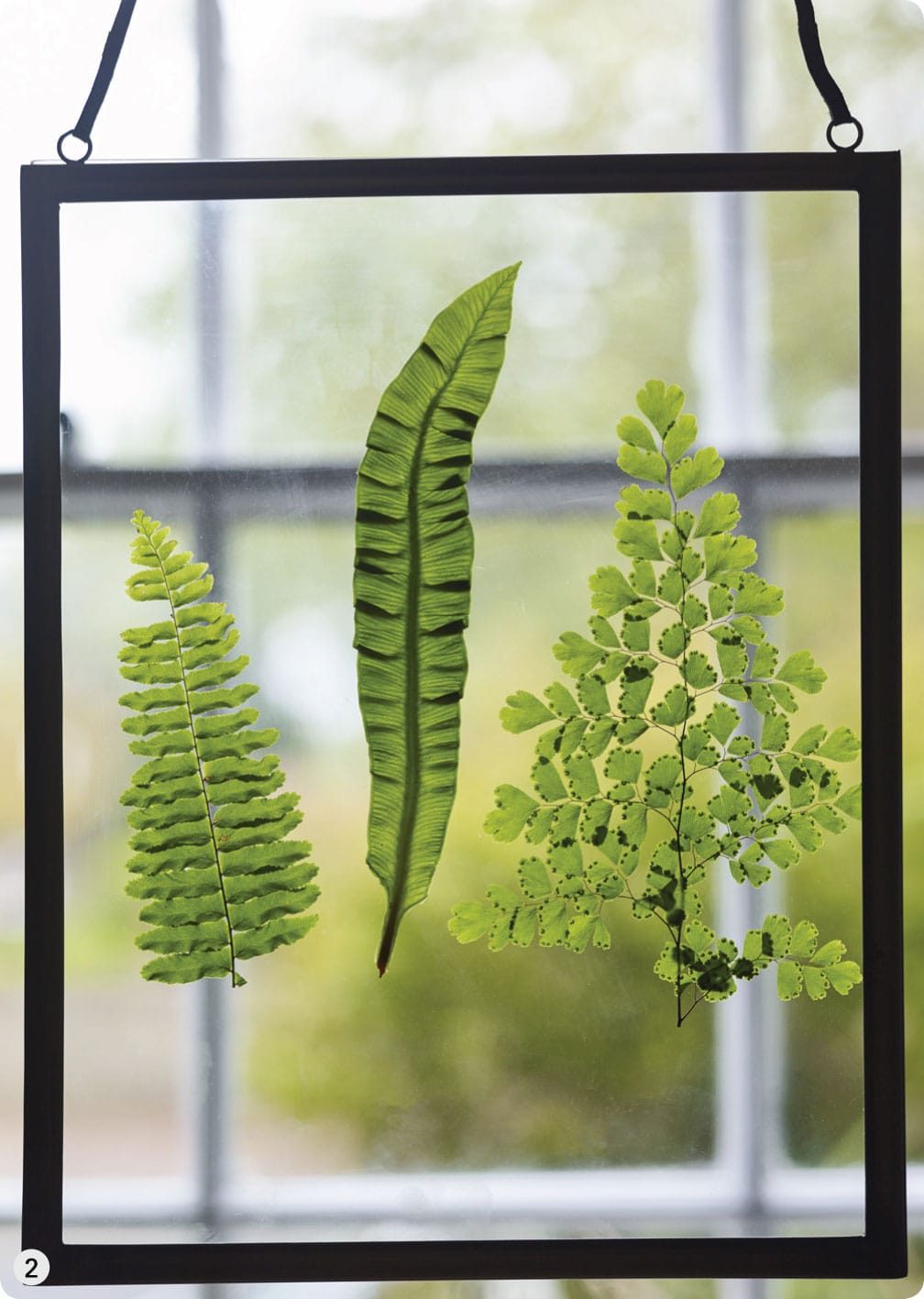
2 Press down firmly, then seal the frame and hang it in a window so that the leaf textures are lit up as sunlight shines through them.
SUCCULENT
Moonstone
Pachyphytum oviferum aka sugar almond plant
Moonstone has plump, fleshy leaves that are the shape of pebbles (hence the common name) or sugared almonds nestled on the surface of the compost. They are a pretty, greeny blue with a dusty bloom. In late winter, long stems burst from the centre of the leaf whorl bearing striking, pink flowers surrounded by fleshy, greeny grey sepals.
WHERE TO GROW
Position on or near a sunny windowsill, especially in winter when light levels are naturally low.
HOW TO GROW
Grow in a free-draining cactus compost mix (see Cacti and succulents) so that water can flow away from the roots. Water plants from below (see here) so that water does not mark the leaves. These plants are in active growth in winter so step up the watering during winter months.
GROWING TIP
Repot after flowering only when plants are root-bound.
DERIVATION
Pachyphytum oviferum literally means ‘thick plant bearing eggs’.

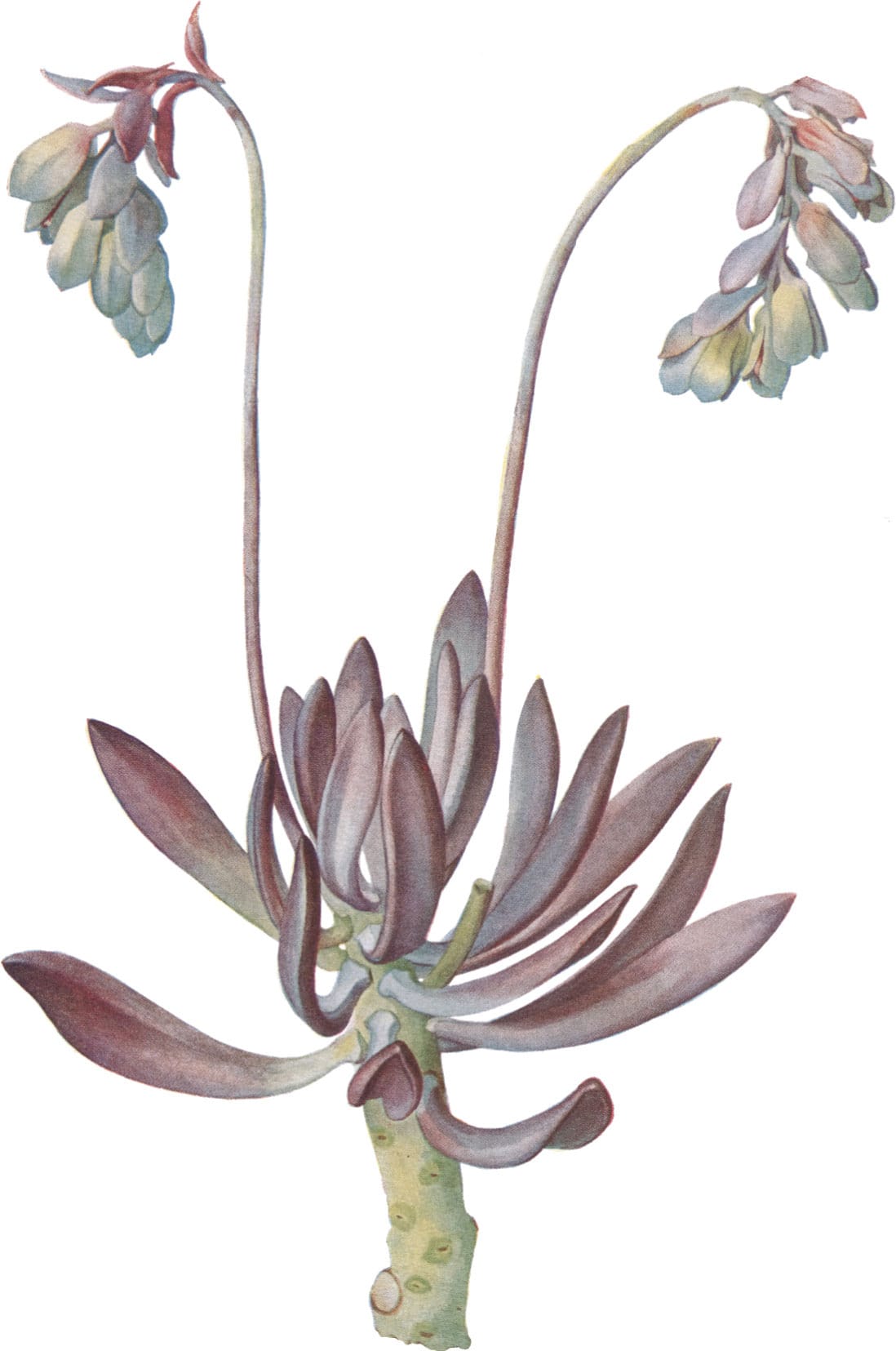
Pachyphytum longifolium
FLOWERING
Geranium
Pelargonium species
They are easy to look after, forgiving of the odd dry spell. Popular types include those with scented foliage, zonal pelargoniums with their dark ring markings on the leaves and regal pelargoniums, which have clusters of large flowers.
WHERE TO GROW
An east- or west-facing windowsill is ideal, to avoid scorching midday sun in summer.
HOW TO GROW
Plants like good drainage so add a handful of grit or perlite to the compost when planting. Water plants well, making sure you do not get water on the leaves or flowers. In winter, water sparingly, keeping the compost almost dry. Feed with a general fertilizer every couple of weeks in spring and then with a high-potash one in summer, to promote flowering. Repot in spring.
GROWING TIP
Geraniums are naturally bushy and should be cut back in early spring, before growth begins, to encourage branching.
LONG-LIVED FLOWERS
Nearly all Pelargonium species are indigenous to semi-desert parts southern Africa. Many will flower in winter as well as summer, if grown indoors.

FERN
Button fern
Pellaea rotundifolia aka New Zealand cliff brake
This charming, little fern has tufted, arching fronds made up of small, button-shaped leaves. It has a light, delicate air and adds a lovely symmetry to group displays and plantings. Endemic to the forests and scrub of New Zealand, it does not need the high humidity and constant moisture that most ferns need and is, therefore, easy to care for.
WHERE TO GROW
Although good in a bathroom, button fern is ideal for an open terrarium (see Miniature rainforest) and also works as a statement plant for kokedama (see here) or in a small hanging basket (see Hanging gardens). It can cope with draughts.
HOW TO GROW
Grow in moist but well-drained, ericaceous compost mixed with a handful of perlite, to improve drainage. Mist plants every few days and feed monthly year-round. Reduce watering in winter. Repot in spring if root-bound.
GROWING TIP
Plants can be divided and potted up individually (see here).
CLASSICAL TOUCH
The genus name Pellaea comes from the Greek pellaios, which means ‘dark’ and refers to the stems that turn dark red as they age.
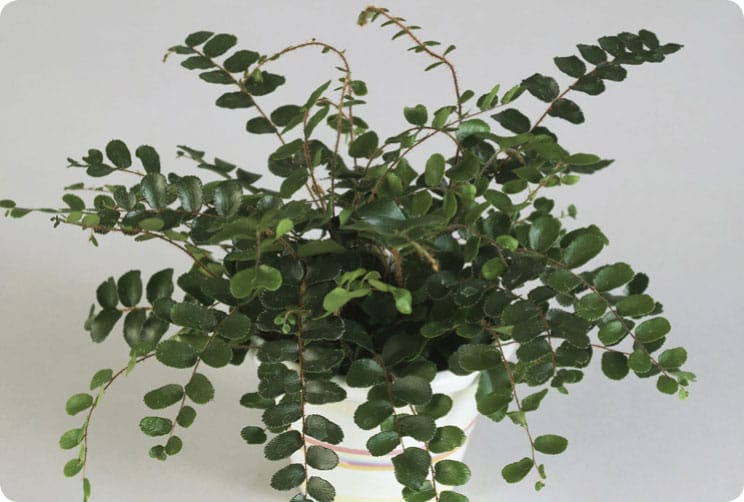
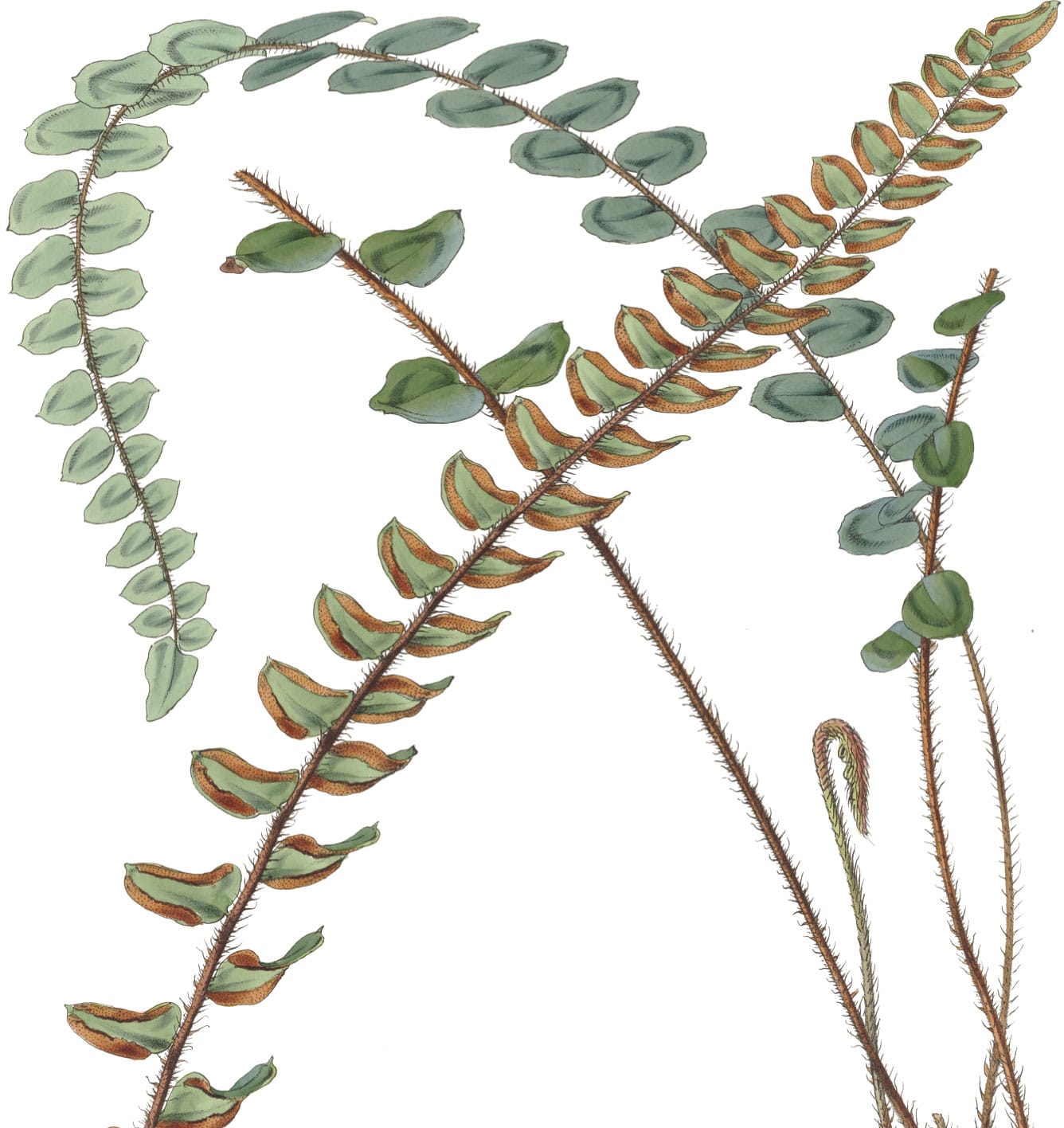
FOLIAGE
Radiator plant
Peperomia caperata
All Peperomia have distinctive leaves and these can be marbled, striped or edged with colour. Radiator plant bears beautiful, corrugated, heart-shaped leaves, and in summer plants send out long, skinny, candlewick flowers. They are easy-going plants to grow.
WHERE TO GROW
Radiator plant appreciates warm humidity so a steamy bathroom is ideal.
HOW TO GROW
Mix a handful of perlite into the compost when planting. Water carefully, avoiding the leaves and crown. Mist daily. In winter, keep the compost almost dry. Feed monthly in spring and summer. Repot only when root-bound.
GROWING TIP
Do not grow radiator plant in too big a pot as it has a shallow root system and struggles if swamped.
AMONG THE TREES
Just one species from a large genus, these compact, little epiphytes are from the Amazon rainforest.
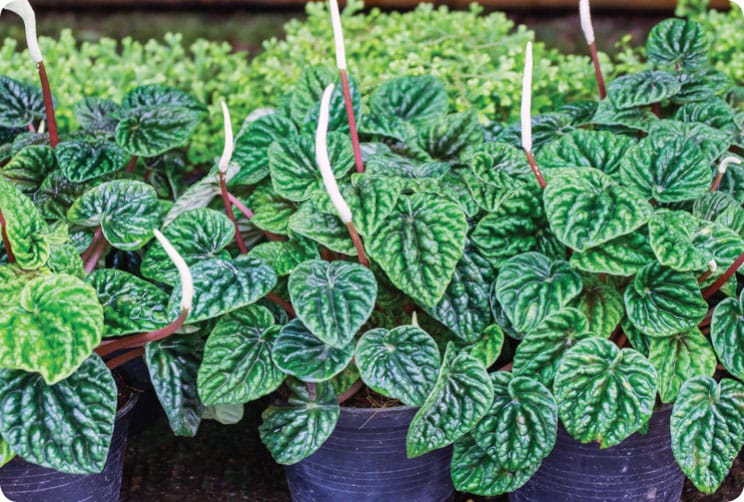
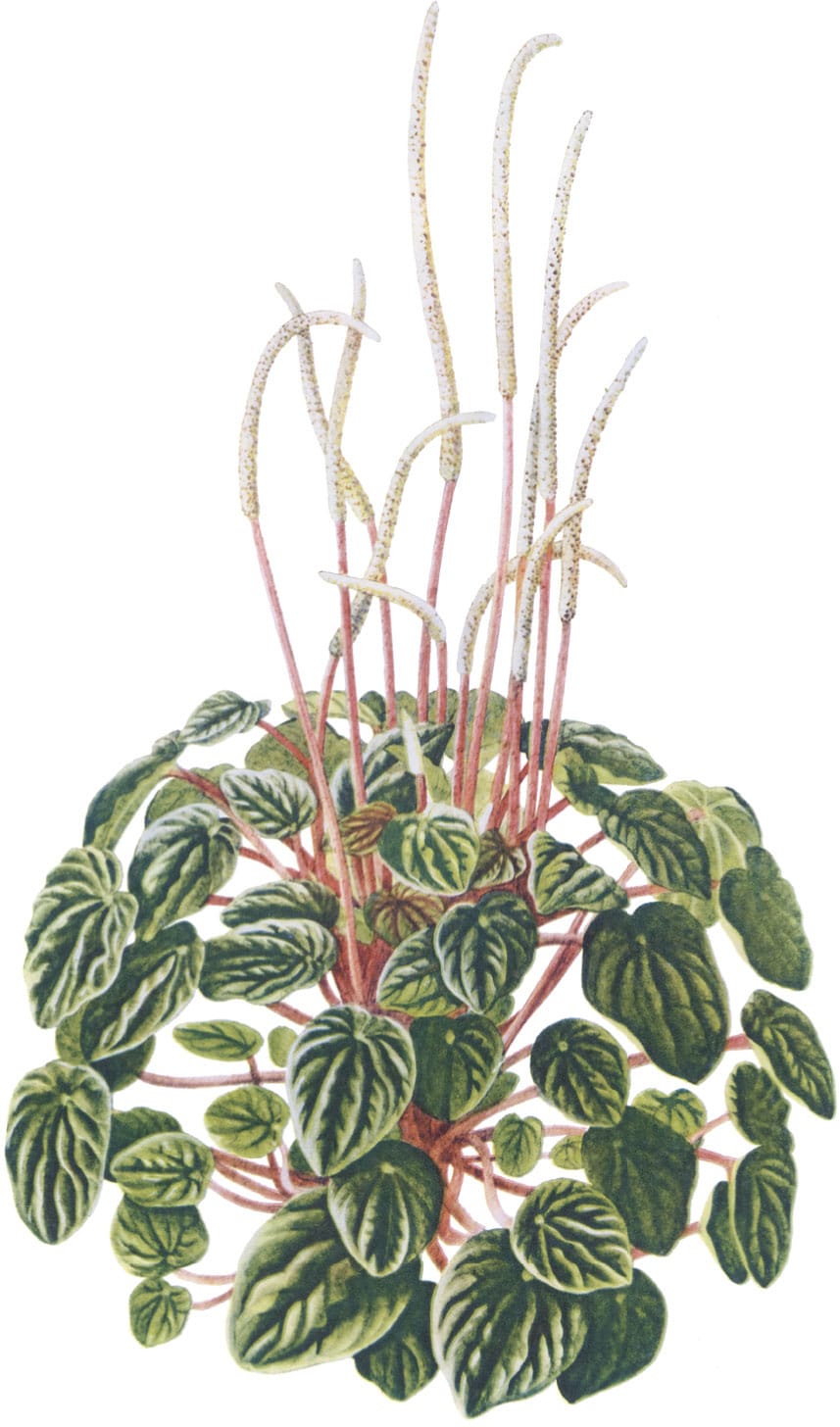
PROJECT 9
Simple kokedama
Kokedama is the art of growing plants in a ball of wet soil covered in moss, and it is increasingly popular as an artistic and sculptural way to display plants. It originated as a form of bonsai in Japan and literally translated means ‘moss ball’. Plants can be displayed as they are on a saucer or tray, or be hung on twine or wire. The best plants for kokedama are strong architectural and textural ones that are happy in semi- or full shade – direct sunlight will dry out the moss and turn the kokedama brown.
Combine equal amounts of bonsai and multipurpose potting compost to help the ball hold moisture. For the covering, sheet moss is best as it can be gathered around the root ball to make a bag; otherwise, carefully mass together chunks of moss until the ball is smothered in soft green.
To check if the kokedama needs watering, feel the weight of the ball. If it is unnaturally light, leave it to soak in a sink or bucket of water until the compost and moss are saturated; take care not to submerge the leaves. Then let the kokedama drain.
PLANTS FOR KOKEDAMA
Asparagus fern (Asparagus setaceus)
Coin leaf peperomia (Peperomia polybotrya ‘Raindrop’)
Cretan brake fern (Pteris cretica)
Missionary plant (Pilea peperomioides)
Staghorn fern (Platycerium bifurcatum)
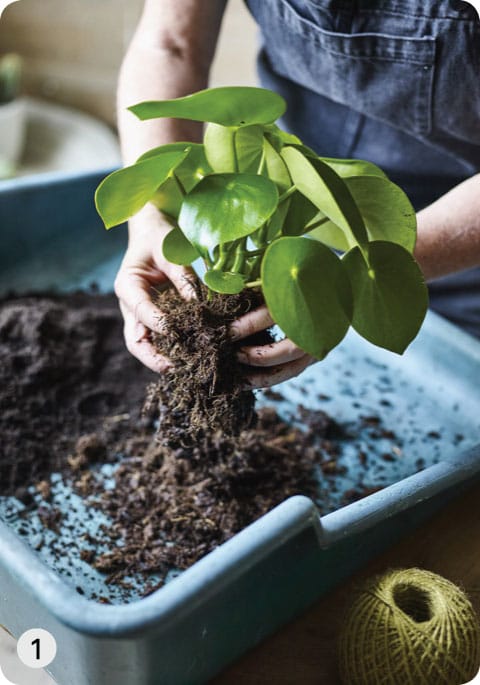
1 Remove the plant (here, Peperomia polybotrya ‘Raindrop’) from its pot and shake off the excess soil from around its roots.

2 Moisten the compost mix until sticky and then compact it into a firm ball around the plant roots until it is about the same size as the plant’s original pot.
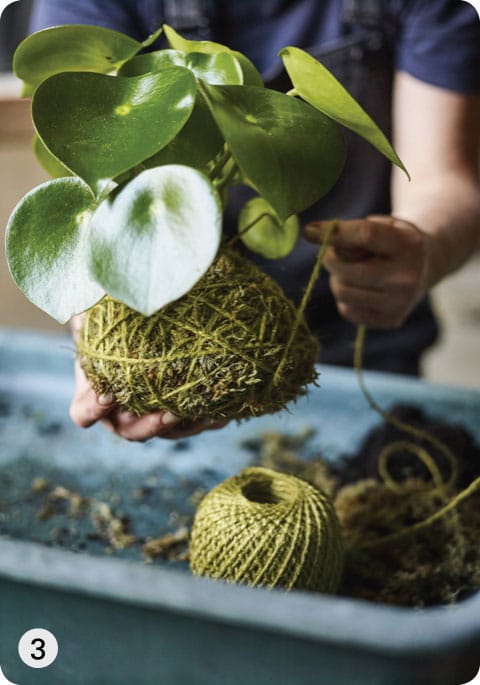
3 Wrap the ball with moss and then bind it together with twine or florist’s wire, winding it around and around the moss ball until it is secure.
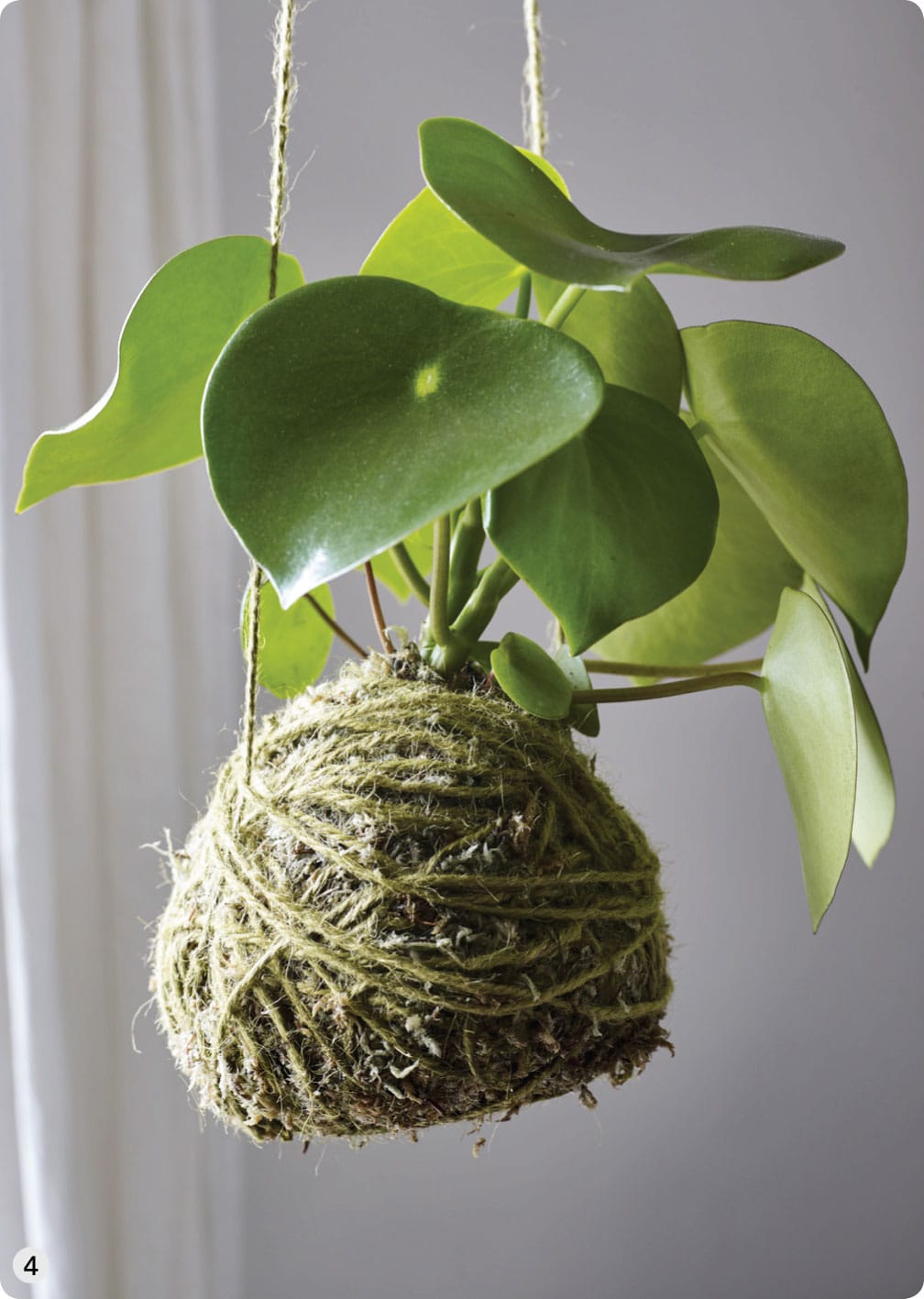
4 Tie on a last piece of twine, then hang up the kokedama, out of direct sun.
FOLIAGE
Heart leaf
Philodendron scandens aka sweetheart plant, love tree
This fast-growing climber has lush, heart-shaped leaves that are very glossy and get bigger and bigger as the plant grows. They are a pretty bronze when young. Also look out for P. xanadu with its deeply cut, glossy green leaves.
WHERE TO GROW
Heart leaf thrives deep in the rainforest where conditions are humid, warm and dark so replicate this at home – but the lighter the spot the more vigorously it will grow. As it matures, train and support stems against a wall.
HOW TO GROW
Plant in a 2:1 mix of multipurpose compost and perlite. Mist the leaves every few days or grow on a saucer of pebbles and water. Wipe leaves regularly, to clean them. Feed monthly in spring and summer. In winter, water when the top of the compost feels dry.
GROWING TIP
Pinch out the growing tips, to encourage branching and a bushy plant.
DISPLAY OPTIONS
Heart leaf is often sold supported by a moss pole, but plants will also trail and cascade beautifully, transforming any room into a verdant jungle


FOLIAGE
Missionary plant
Pilea peperomioides aka Chinese money plant, pancake plant, UFO plant
Hugely popular, these gorgeous little plants have lovely, rounded, fleshy leaves, each with a cute, yellow spot near the centre where the stem meets the leaf. They are neat, compact plants that form loose, handsome domes and are low-maintenance and very easy to grow.
WHERE TO GROW
Display on a windowsill or in the centre of a table – just shelter them from draughts. Plants also make great kokedama feature plants (see Simple kokedama).
HOW TO GROW
Grow in a 2:1 mix of multipurpose compost and perlite. Mist plants regularly. Feed every couple of weeks in the growing season. Keep the compost just moist in winter, letting the water drain away. Repot in spring when plants are root-bound.
GROWING TIP
Easy to propagate from stem cuttings, in water or potting compost (see here).
LATE-COMER
Native to southern China, missionary plants were brought to Europe by a Norwegian missionary in the 1940s. However, being widely unknown by professional growers, its identity was established only in 1984 when an illustration was published in Kew Magazine.

FERN
Staghorn fern
Platycerium bifurcatum aka elkhorn fern, antelope ears
Staghorn fern is all a house plant should be: easy to grow, magnificent and wonderfully weird. It has two types of fronds: fuzzy fertile ones shaped like a stag’s antler; and sterile fronds that are rounder and heart-shaped. The soft down on the fronds protects them against bright light and prevents them from drying out.
WHERE TO GROW
Looks best in a basket or mounted on a chunk of wood or bark, ideally in a steamy room.
HOW TO GROW
Plant in orchid compost. Mist the fertile fronds every day. Water these plants from below (see here) if the rounder fronds cover the compost, as these will rot if they get wet. In winter, let the surface of the compost dry out before watering.
GROWING TIP
The flatter, rounder fronds naturally turn brown with age, and new fronds will grow above them.
HELPFUL POINTER
Bifurcatum means ‘bifurcated’ or ‘forked’ and refers to the antler-like fertile fronds.

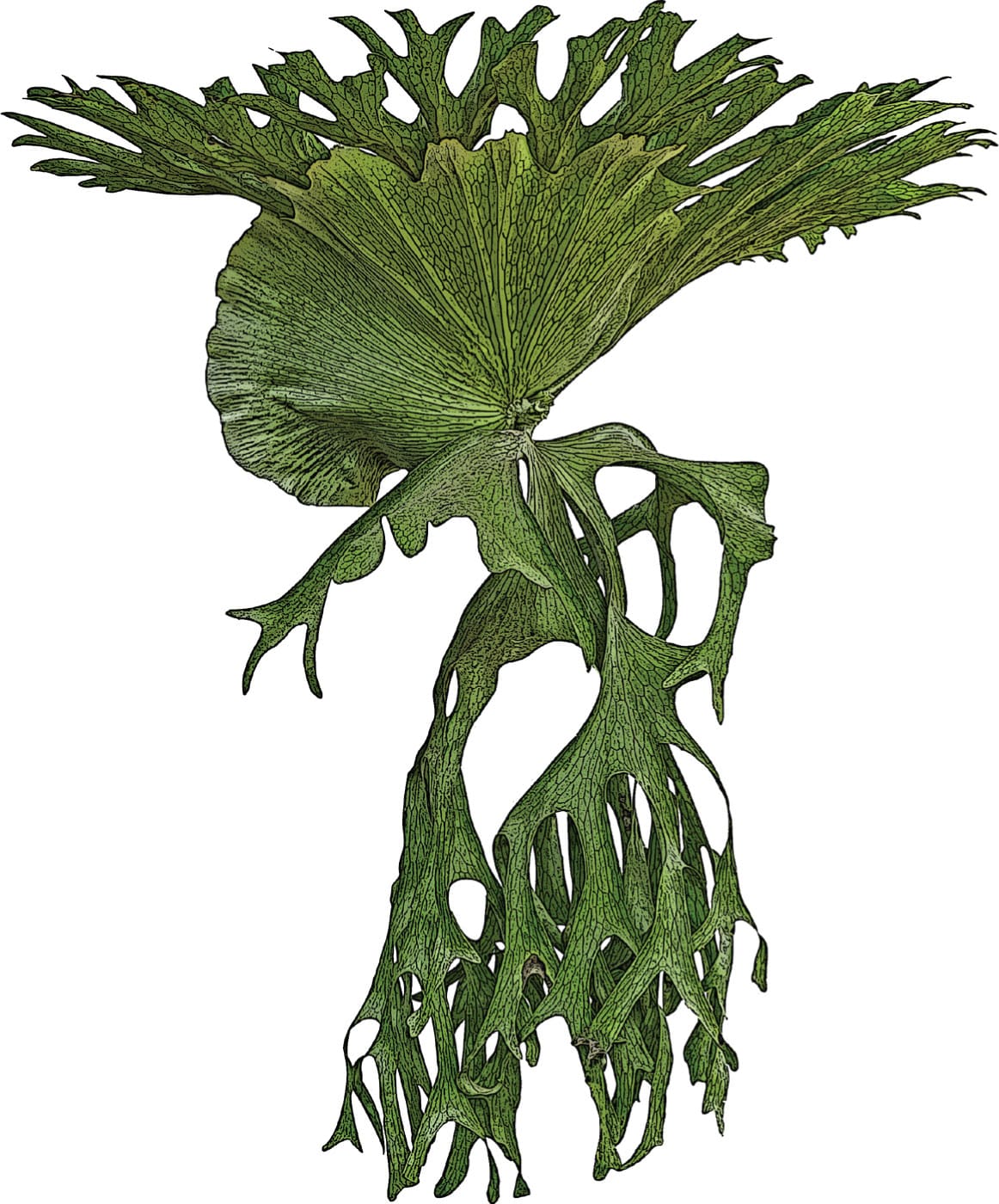
FERN
Cretan brake fern
Pteris cretica aka brake fern, ribbon fern, table fern
These are elegant, dainty tropical and subtropical ferns with wiry stems and unusual, ribbon-like leaflets that can be plain green – or striped as with the variegated P. cretica var. albolineata, which has a broad, central, cream strip.
WHERE TO GROW
This is a good plant for the bathroom or kitchen.
HOW TO GROW
Mist every couple of days and place on a tray of wet pebbles, to increase humidity around the plant. Feed monthly in the growing season. Reduce watering slightly through the cooler months; the roots will rot if left sitting in wet compost over winter. Plants are slow-growing but rejuvenate well so tatty fronds can be snipped off at the base. Repot every couple of years.
GROWING TIP
Plants are easily divided (see Propagation by division), just ensure each piece has at least two fronds and a section of the rhizome.
DIRECT HEAT
Keep Cretan brake fern away from hot radiators and out of bright sun, which will scorch its leaves.

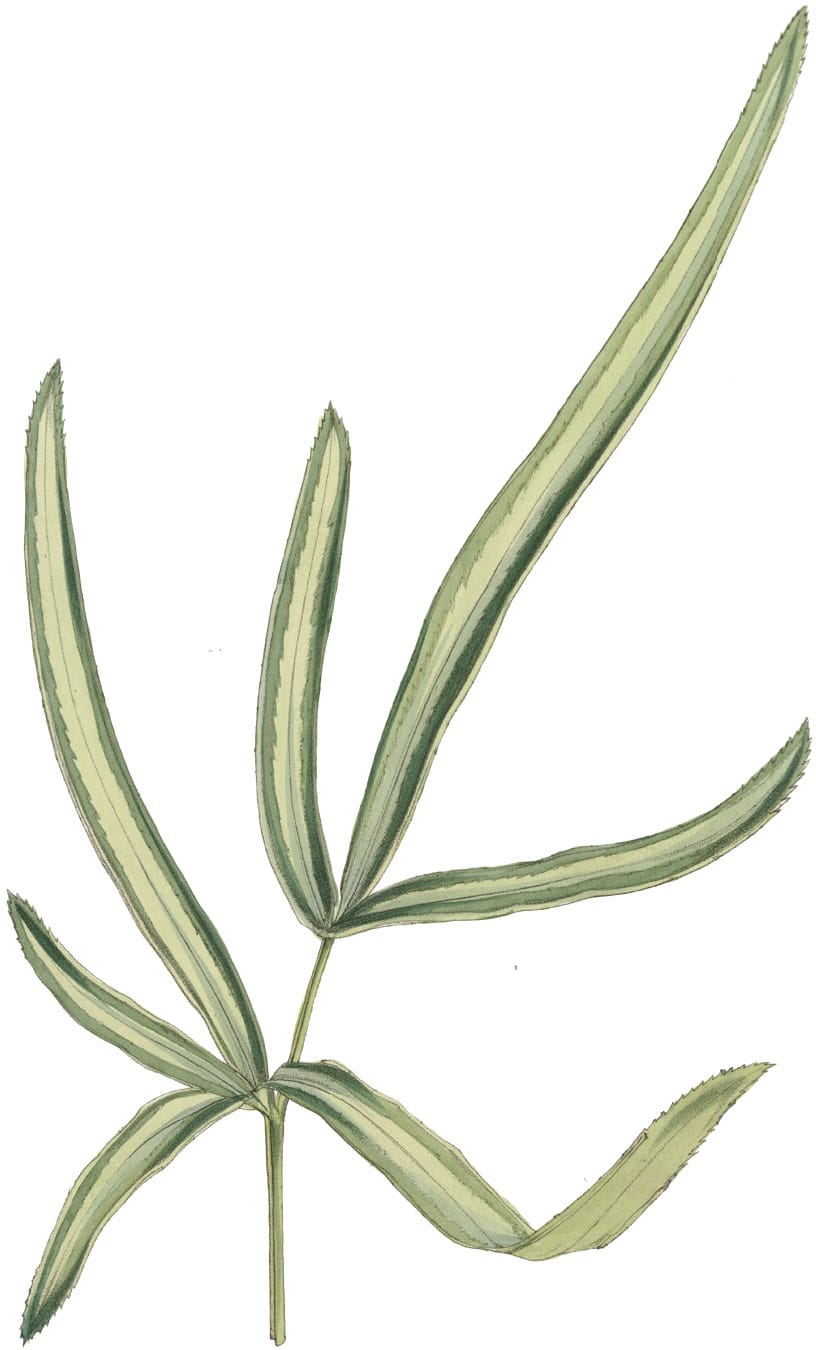
PROJECT 10
Miniature rainforest
Terrariums are a lovely way to display plants, creating a tiny garden within its own miniature glass world. Tropical rainforest plants that dislike direct light are perfect for such planters as they thrive in the humid environment that the sealed glass helps to create. Small ferns such as button fern, delta maidenhair fern and Cretan brake fern introduce a range of leaf shapes, while plants such as mosaic plant, polka dot plant and aluminium plant have pretty spots or stripes.
You can use specialist terrariums, but scrupulously clean glass jars, vases, bottles or aquariums work well, too. However, bottles and anything with a narrow neck are tricky to plant so use long tools such as spoons, dibbers and chopsticks to help you. Grit or gravel mixed with activated charcoal helps with drainage and air movement within the terrarium, as well as stopping the growth of fungi.
Plants in a terrarium require misting frequently, to maintain the humid environment. However, they need less water than traditionally potted plants – check the surface of the compost regularly and, when dry, water with a can fitted with a rose.
PLANTS FOR A MINIATURE RAINFOREST
Aluminium plant (Pilea cadierei)
Bird’s nest fern (Asplenium nidus and A.n.‘Parvati’)
Button fern (Pellaea rotundifolia)
Cretan brake fern (Pteris cretica)
Delta maidenhair fern (Adiantum raddianum)
Mosaic plant (Fittonia albivenis)
Polka dot plant (Hypoestes phyllostachya)

1 Add a layer of grit or gravel and activated charcoal to the base of the terrarium and then cover with 5–7cm/2–3in compost.
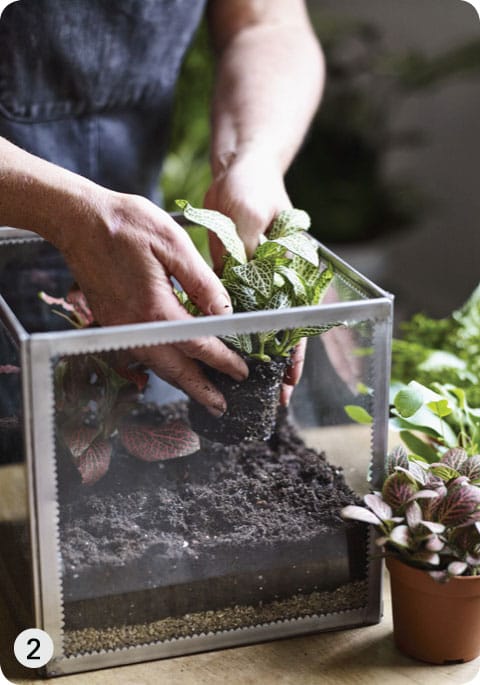
2 Remove each plant (here Cretan brake fern, mosaic plant and Asplenium nidus ‘Parvati’) from its pot and place in the compost, filling in and firming down where needed.
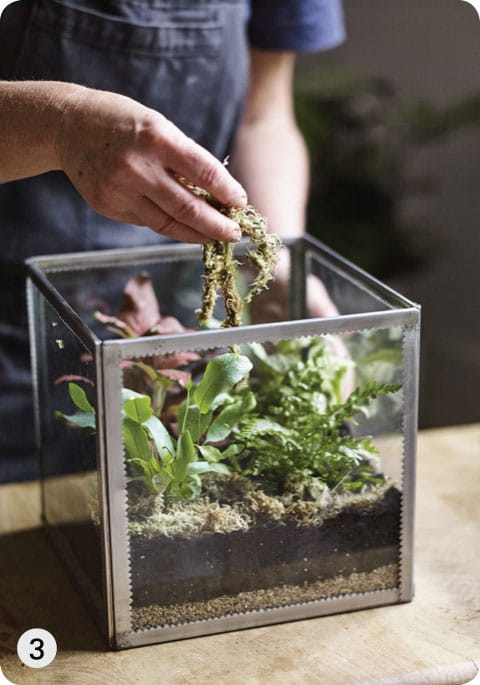
3 Cover the compost with a generous layer of moss or decorative pebbles. This will help to maintain humidity levels within the terrarium and set off the plants well.
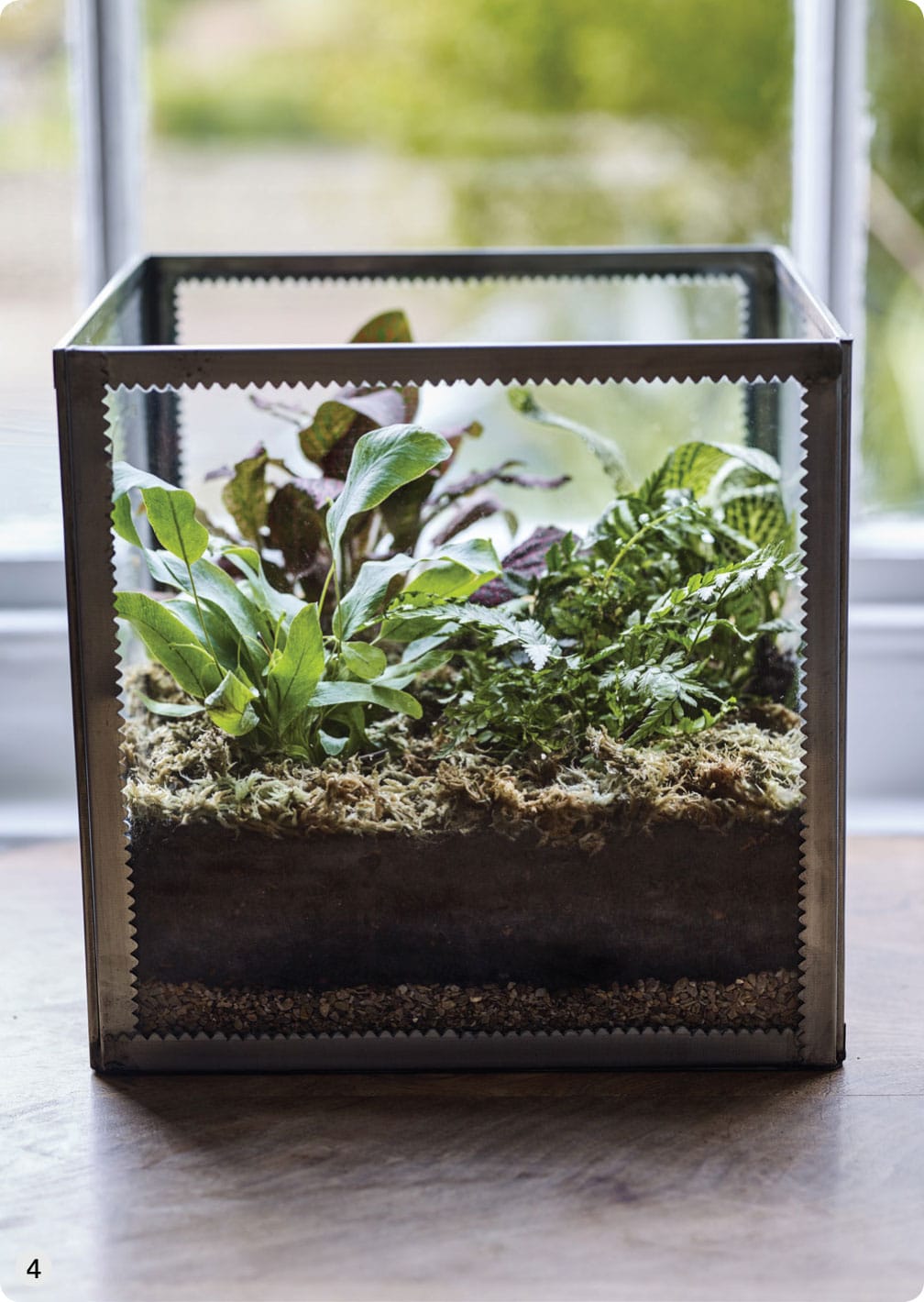
4 Wipe the glass clean both inside and out, then place the terrarium in a bright spot, but not in direct sunlight, which will scorch the plants through the glass.
PALM
Bamboo palm
Rhapsis excelsa aka lady palm, broadleaf lady palm
The unusual, bamboo-like stems and broad, blunt leaves are quite different to those on a typical palm. Bamboo palms are dramatic, bushy plants, ideal for first-time or nervous growers who want to make a statement.
WHERE TO GROW
Being happy in low light, bamboo plant will add interest to a dead corner or hallway. It is slow-growing, too, so although plants eventually get very large most reach only 2m/7ft.
HOW TO GROW
Plant in a 3:1 mix of soil-based potting compost and perlite. Mist the leaves once a week in summer, to keep them fresh. Ensure the compost is evenly moist but not sodden, as roots will rot if kept too wet, particularly in winter. Feed two or three times in the growing season. Repot plants only when root-bound.
GROWING TIP
Offshoots can be divided from the base and potted on into new plants (see Propagation by offsets).
ENDANGERED
Bamboo palm is believed to be native to southern China, but there are no longer any known plants left in the wild and they exist only in cultivation.


CACTUS
Mistletoe cactus
Rhipsalis baccifera
Unlike its more predictable cacti cousins, mistletoe cactus is spineless and prefers humidity and dimmer rather than bright light. Its common name comes from its white berries, which may follow cream, white or yellow flowers that appear in summer when plants are mature.
WHERE TO GROW
This weeping epiphytic cactus is perfect for a hanging basket (see Hanging gardens) or kokedama (see Simple Kokedama) in a warm bathroom, where it will cascade shaggily.
HOW TO GROW
Increase humidity by misting every few days. Water well in the growing season, but ease off in winter, unless the plant is in a very hot room. Mistletoe cactus can tolerate drought, but its stems will start to shrivel. Feed once a month in the growing season.
GROWING TIP
Stem cuttings root easily if they are left to callus over and then planted in moist compost (see here).
FAR-REACHING
Mistletoe cactus is the only cactus found in the old and new world – intriguingly it is at home in both tropical America and Africa and in Sri Lanka, and theories abound, including dispersal by sailors and birds, as to how this can be!

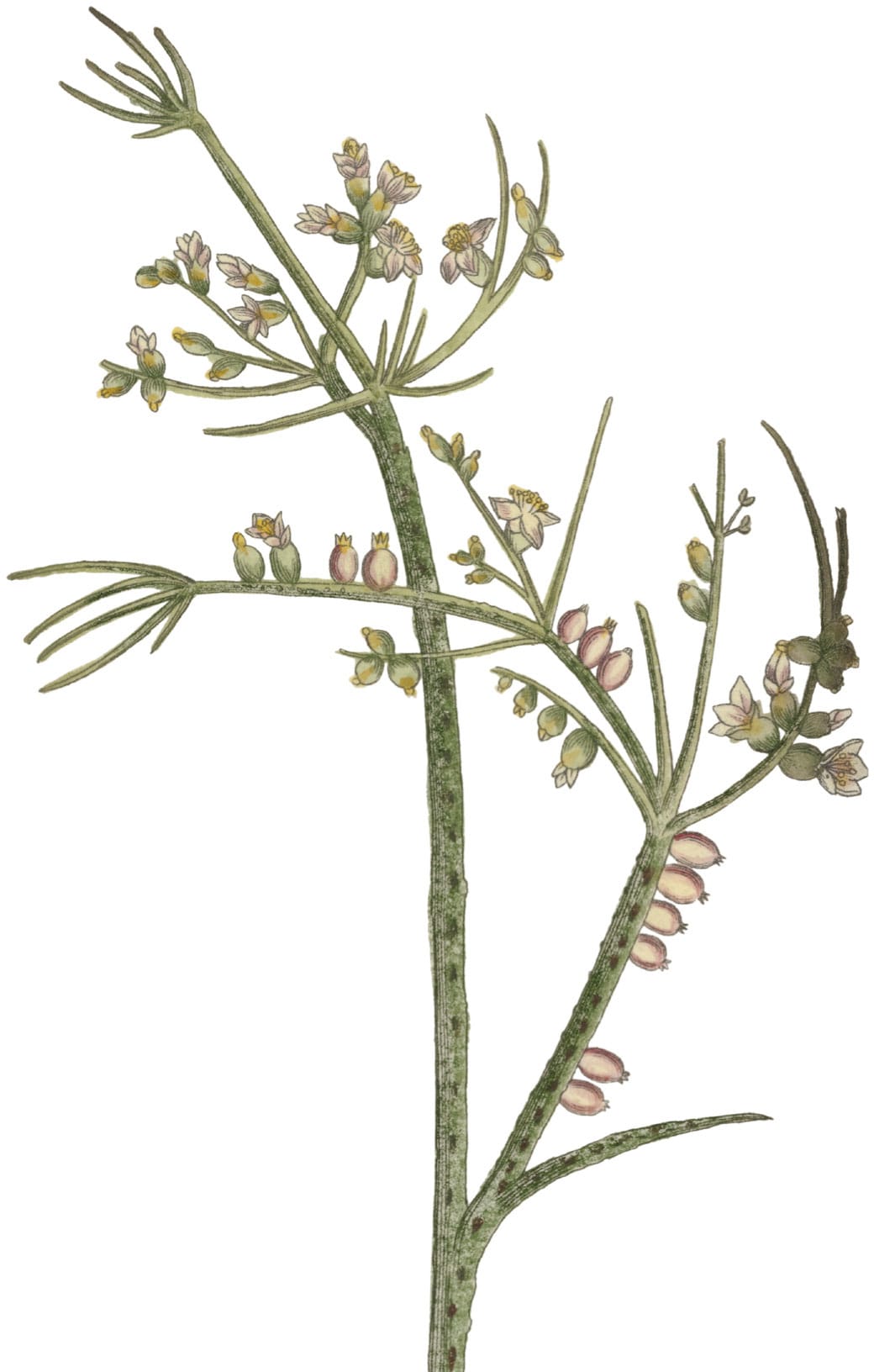
FLOWERING
African violet
Saintpaulia cultivars
These pretty plants have been firm favourites as house plants for a long time, thanks to their soft, fuzzy leaves and small flowers in purple, pink, white or red. Blooms can also be frilly, two-tone, single or double; if happy, plants flower almost continuously.
WHERE TO GROW
Such small, low-growing plants are ideal for a windowsill or shelf out of a draught. During the growing season, an east- or west-facing spot is perfect; in winter, move to a south-facing window.
HOW TO GROW
Plants appreciate humidity so grow on or next to a tray of wet pebbles. Protect the leaves by watering plants from below (see here) with tepid water; avoid cold water as it can mark and damage leaves. Feed once a month in the growing season. Deadhead fading flowers regularly. Repot plants every two to three years, in spring.
GROWING TIP
Plants can be propagated very easily from leaf cuttings, rooting in both water or compost (see here), as well as from stem cuttings (see here).
HABITAT CRISIS
Most of the many cultivars available are from S. ionantha, which sadly is now classified as near threatened in the wild due to its natural habitat being cleared for agriculture.
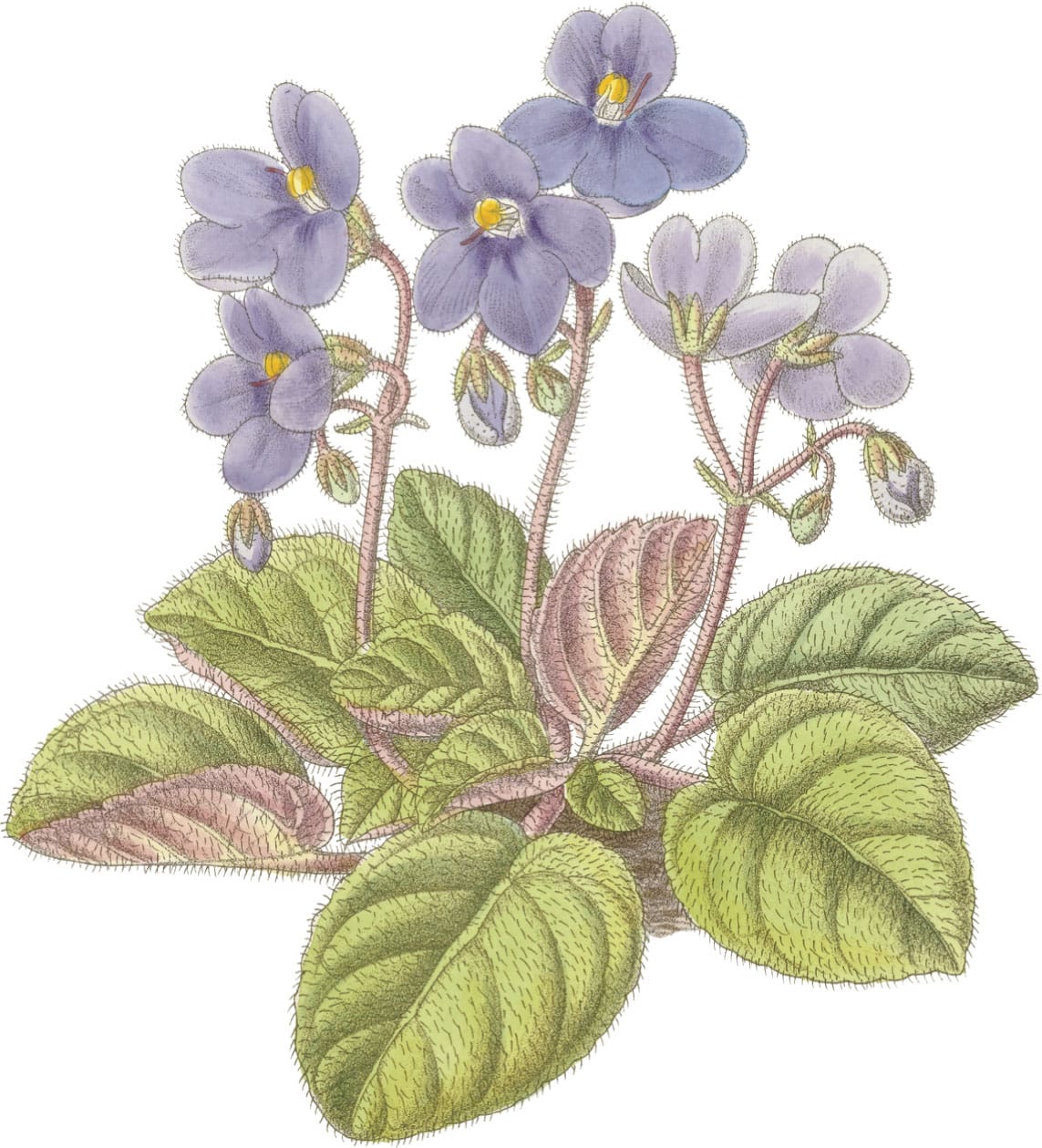
SUCCULENT AND FOLIAGE
Snake plant
Sansevieria trifasciata aka mother-in-law’s tongue, good luck plant, devil’s tongue
A house plant classic that grows slowly and lasts for many years, snake plant produces clusters of tough, silvery green, sword-like leaves in dense rosettes and is tolerant of erratic watering and extremes of light conditions.
WHERE TO GROW
It is one of the best plants for purifying the air (see Natural air fresheners) so position in a bedroom or living room.
HOW TO GROW
Plant into a free-draining cactus compost mix (see Cacti and succulents) and a pot that is not too big – snake plant likes its roots crowded so choose one that is a snug fit. Feed once a month from spring to autumn. In winter, reduce watering to just once a month. Repot only when plants are tightly root-bound.
GROWING TIP
Plants are easily propagated by leaf cuttings (see here) or by division (see here), teasing away new stems that are growing around the base of the plant.
MULTI-GENERATION
These are plants that are handed down in families and are well-loved for their forgiving and easy-going nature.

Sansevieria zeylanica
PROJECT 11
Natural air fresheners
Studies have shown that many house plants can boost physical health and well-being by improving the air quality in our homes. Their leaves and stems soak up the harmful toxins and chemicals such as formaldehyde, xylene and benzene found in plastics, household detergents, paints, varnishes, carpets and furniture, and thereby leave the atmosphere cleaner. When grouped together, the effect of any of the following plants will be even stronger than when positioned individually. Living rooms and bedrooms are good spots to grow these plants, but, if you choose the right ones and scatter them in every room, your whole house can benefit.
To ensure that leaves effectively absorb harmful particles, keep them clean and dust-free.
PLANTS THAT IMPROVE AIR QUALITY
Bamboo palm (Rhapis excelsa)
Bellmore sentry palm (Howea forsteriana)
Bird’s nest fern (Asplenium nidus)
Boston fern (Nephrolepis exaltata)
Cast-iron plant (Aspidistra elatior)
Delta maidenhair fern (Adiantum raddianum)
Dumb cane (Dieffenbachia seguine)
Fiddle-leaf fig (Ficus lyrata)
Goeppertia ‘Whitestar’
Jade plant (Crassula ovata)
Mother-in-law’s tongue (Sansevieria zeylanica)
Peace lily (Spathiphyllum wallisii ‘Bellini’)
Rubber plant (Ficus elastica)
Snake plant (Sansevieria trifasciata)
Spider plant (Chlorophytum comosum ‘Variegatum’)
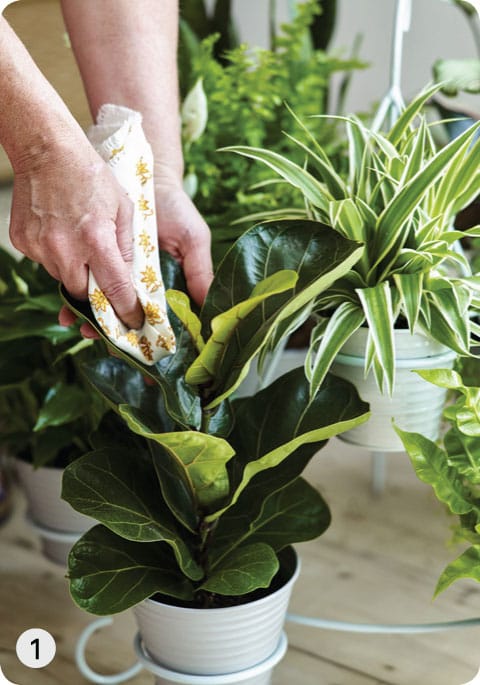
1 Use a soft cloth to wipe the dust from larger-leaved plants (here, fiddle-leaf fig).
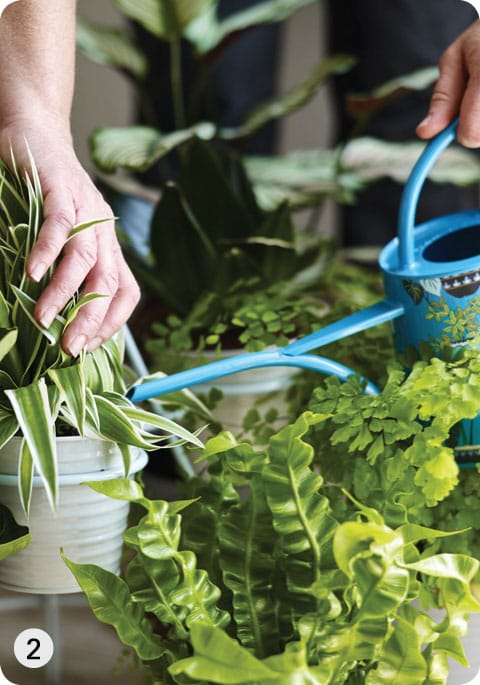
2 Check grouped plants individually, and water each according to its needs.
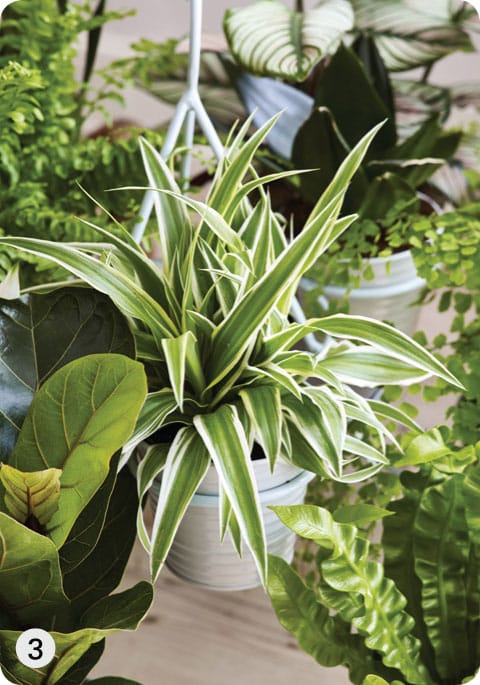
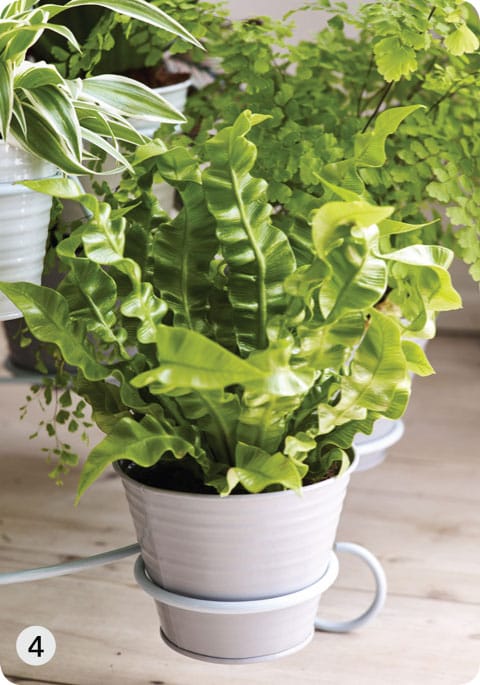
3/4 To remove ammonia, benzene, formaldehyde and xylene from the atmosphere, grow spider plants (here, Chlorophytum comosum ‘Ocean’) or larger-leaved cultivars (here, Asplenium nidus ‘Crispy Wave’).
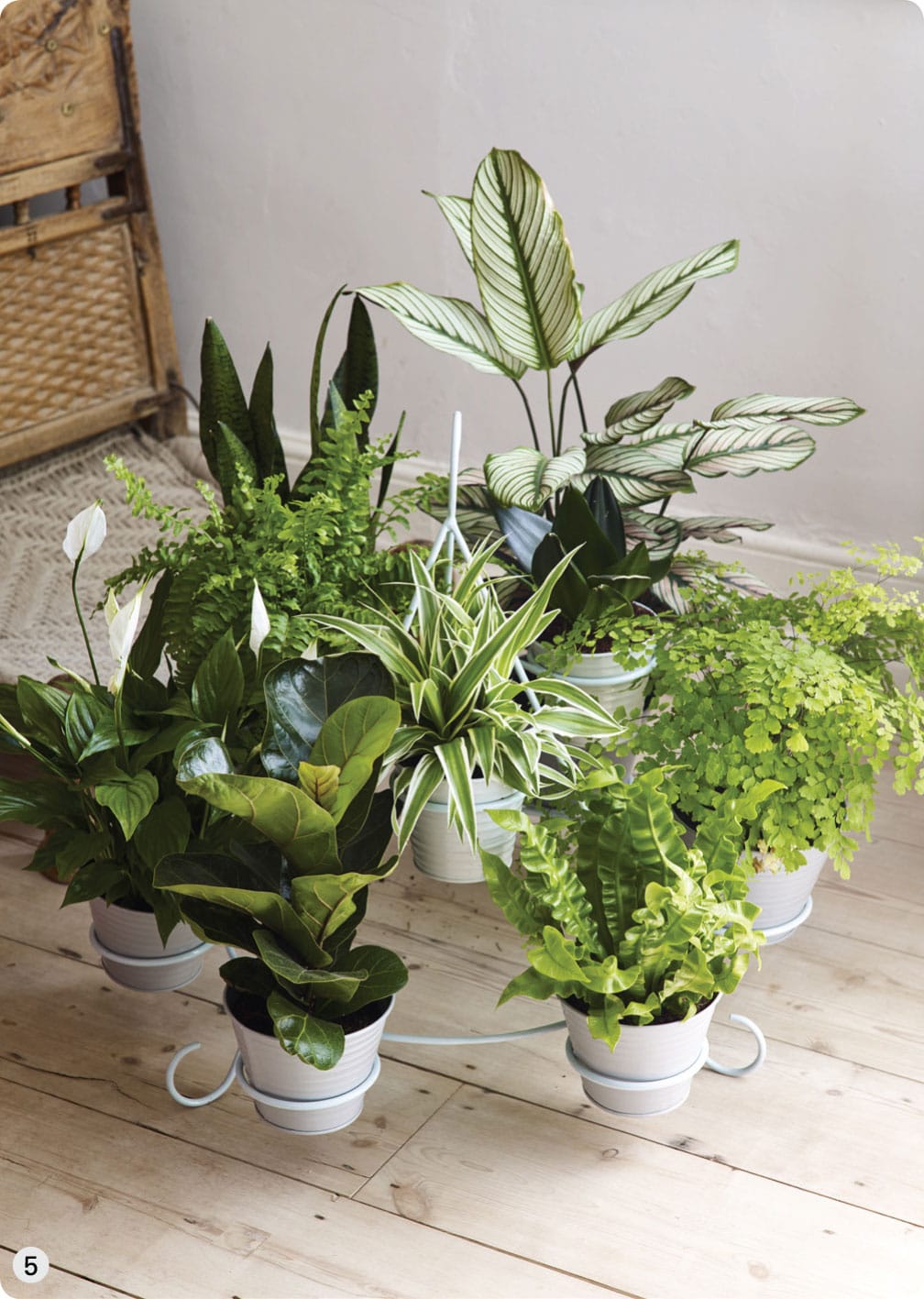
5 If any gets too big for the display, move it to another home and swap with something new.
CARNIVOROUS
North American pitcher plant
Sarracenia flava aka trumpet pitchers, pitcher plant, huntsman’s horns
The North American pitcher plant belongs to a small genus of carnivorous plants whose long, colourful leaves have evolved into striking pitchers to trap insects. These each have a strong-smelling nectar around the neck, which draws prey to and into the pitcher from which insects cannot escape.
WHERE TO GROW
Thrives on a windowsill in a bright room; although tolerant of a little shade, it is happier in bright, direct light. In autumn, move your plant to a cooler room, just 10°C/50°F or less, until early spring.
HOW TO GROW
Grow North American pitcher plant in a specialist carnivorous plant mix (see here). Stand on a tray of rain- or distilled water in spring and summer; in autumn, remove the tray but keep the compost just moist. When dormant, leaves die back but resist the urge to tidy them until they turn papery brown in winter. In summer, you can put plants outdoors, to catch insect prey; they do not need feeding (see also Carnivorous vase).
GROWING TIP
Repot in autumn only when plants are quite root-bound, as North American pitcher plant prefers to be snug about the roots.
EXOTIC TOUCH
Pitchers come in shades of lime, burgundy, red and pink and are often mottled or veined and have wonderful, slightly space-age flowers that match the colour of the pitchers.
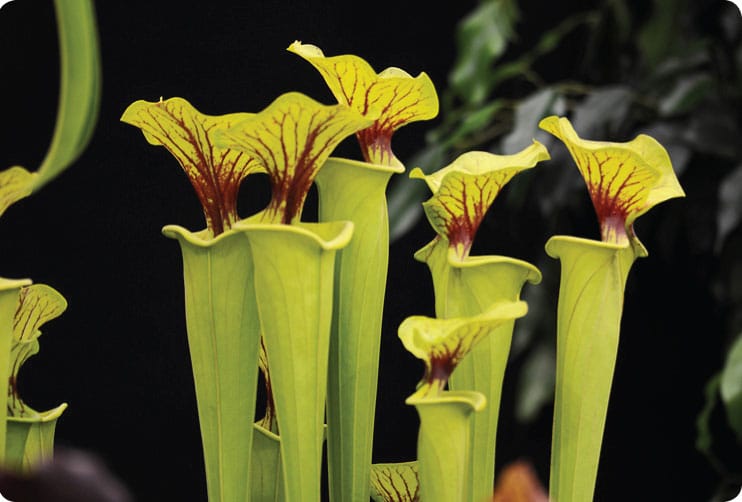
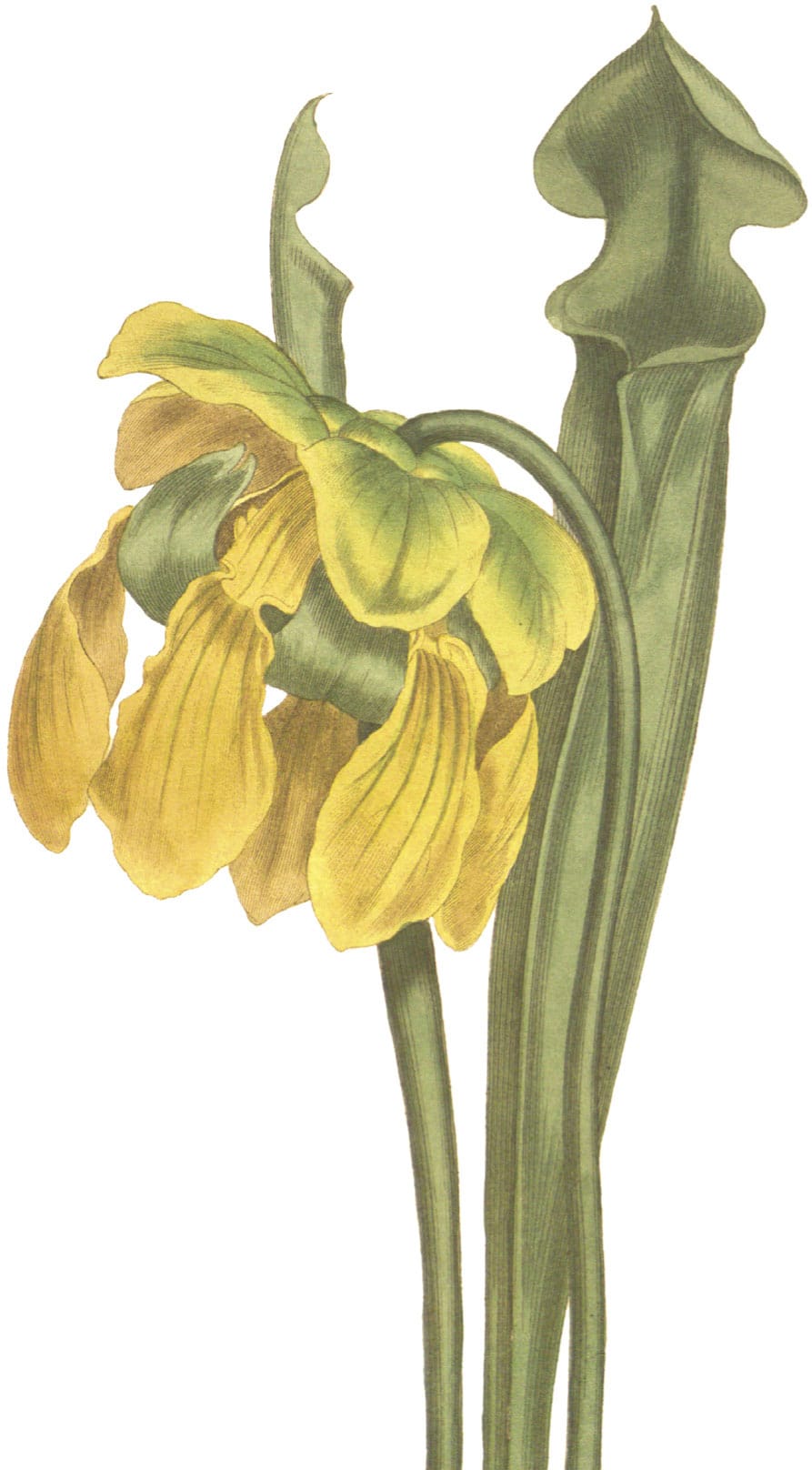

FOLIAGE
Dwarf umbrella tree
Schefflera arboricola aka parasol plant
These stately, handsome plants produce glossy, evergreen, hand-shaped leaves on tall stems. They are tough, forgiving plants that cope comfortably with central heating. Many variegated varieties are available with yellow, cream or gold markings, such as S. arboricola ‘Gold Capella’.
WHERE TO GROW
Although dwarf umbrella tree tolerates poor light and erratic watering, it will thrive in a warm room out of direct sun and draughts. Keep away from pets and children, as all parts are toxic.
HOW TO GROW
Give dwarf umbrella tree a heavy pot to stop it toppling over. Water well in the growing season, allowing the water to drain through the pot. Mist weekly or place on a tray of wet pebbles. Feed monthly in the growing season, and wipe leaves to keep them glossy and dust-free (see Natural air fresheners). Reduce watering in winter, to just once a month. Repot plants every couple of years in spring.
GROWING TIP
If leaves turn yellow and fall from the plant, it is being overwatered. Reduce watering, so the compost is no longer soggy.
INDIGENOUS PLANTS
In the wild, plants have clusters of nectar-rich, red flowers in summer, followed by rounded, orange fruits, but unfortunately plants rarely flower indoors.

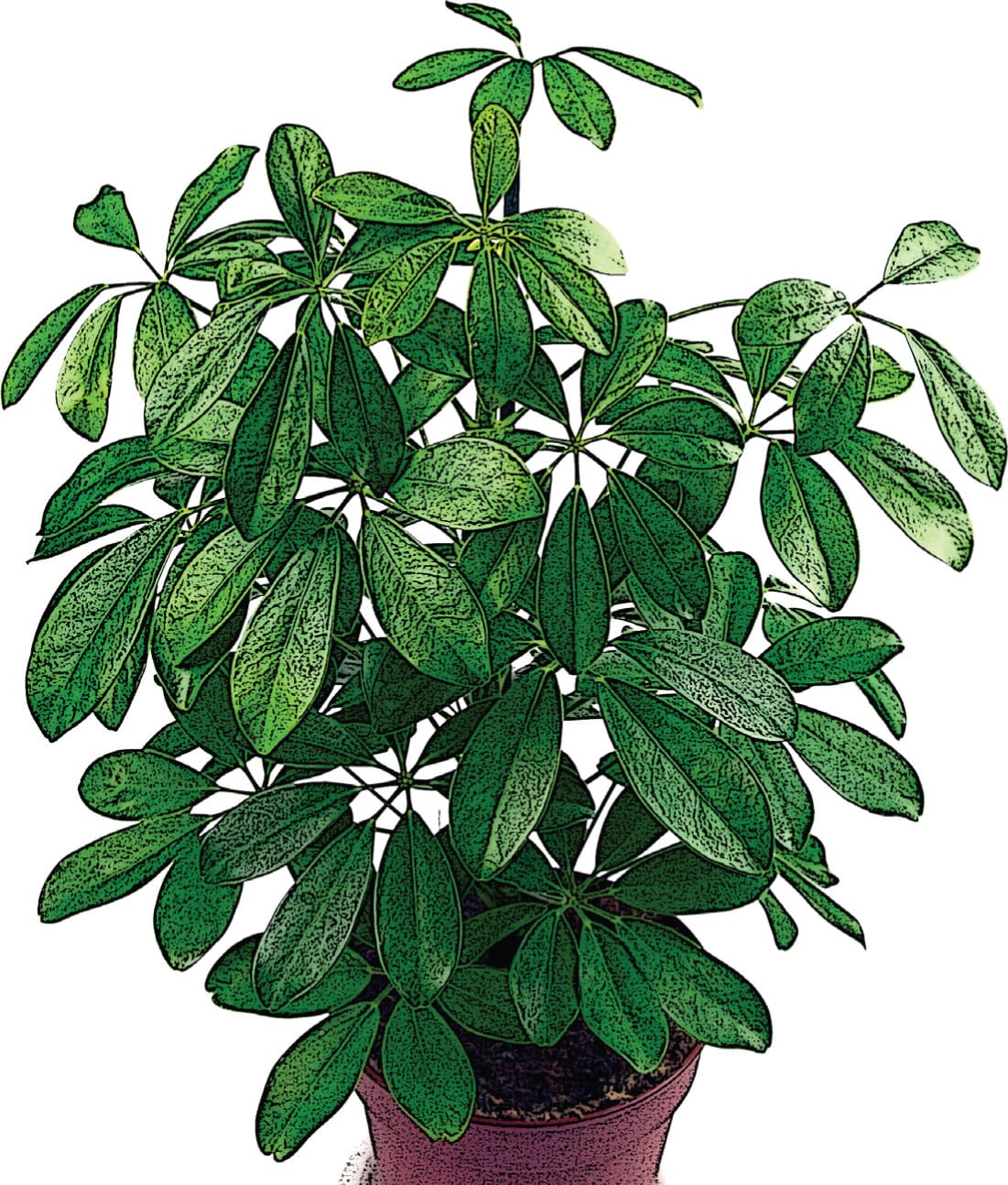

CACTUS
Christmas cactus
Schlumbergera x buckleyi aka holiday cactus, crab claw cactus, Thanksgiving cactus
The perfect winter gift, this tropical cactus has flat, prettily segmented, trailing stems and is tipped in neon-pink flowers in winter. Plants are easy to grow and cope well with neglect, but if you want further flowers they do need a little more care.
WHERE TO GROW
Sturdy, young bushes develop weeping stems as they mature and these look lovely in baskets or trailing over a shelf. For best results, position away from draughts and radiators.
HOW TO GROW
Grow in a gritty compost mix (see Cacti and succulents). Mist plants every day or place on a saucer of wet pebbles. Feed once a month from mid-spring to early autumn. In mid-autumn, reduce watering to promote flowering. When buds appear in midwinter, resume watering. After flowering, stop watering for a few more weeks. Repot in spring only when plants are root-bound. Shape plants by pinching off stem segments in spring.
GROWING TIP
To promote flowering, move plants to a cool room in early autumn and give them total darkness for twelve hours a day until buds appear after 6–8 weeks.
SEASONAL COLOUR
The Christmas cactus is a hybrid of S. russelliana and S. truncata and was originally crossed by William Buckley of Rollisson Nurseries in the 1840s. There are now many varieties in red, mauve, yellow and orange.
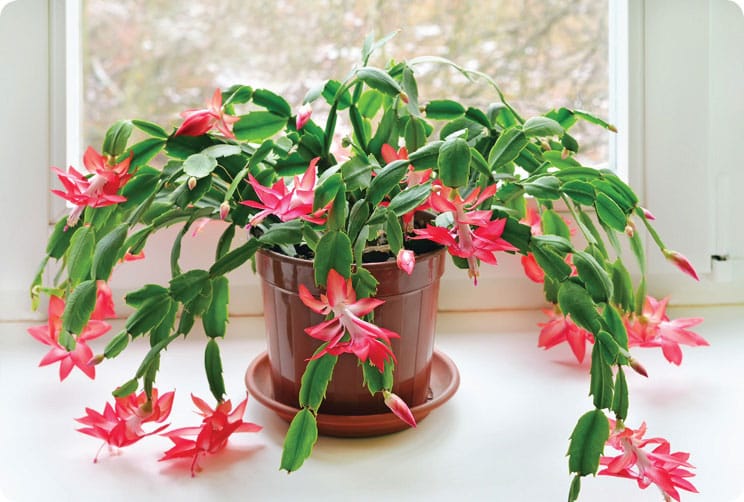
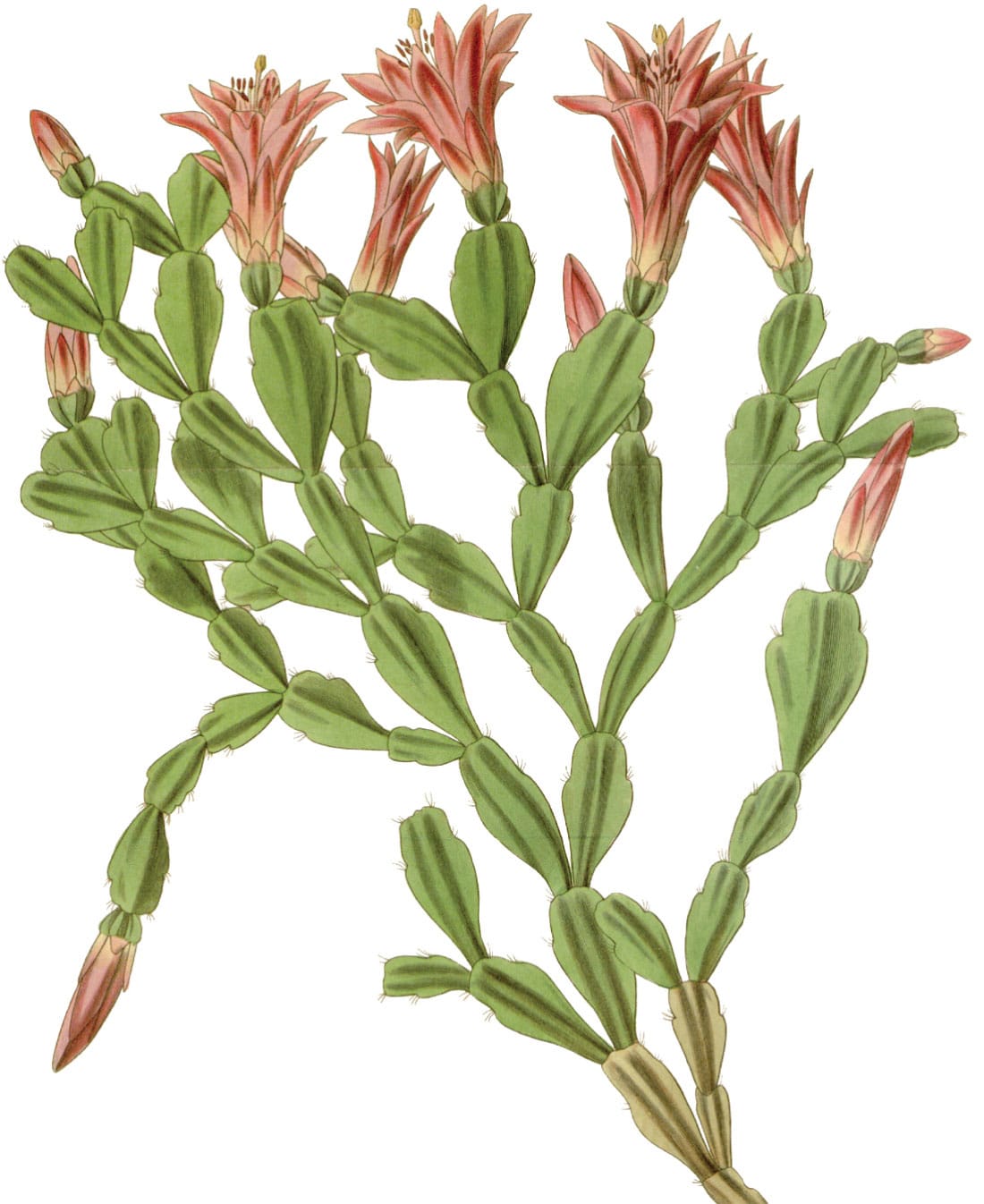
SUCCULENT
Donkey’s tail
Sedum morganianum aka burro’ tail, lamb’s tail, horse’s tail
These stonecrops are hugely desirable with their long, trailing stems covered in plump, dusty green and blue leaves. They are one of the best succulents for drawing the eye and, if you are lucky, rosy pink flowers will bloom at the tips of the ‘tails’ in summer.
WHERE TO GROW
Plant in a mix of two parts cactus compost and one part grit. Donkey’s tail is a great focal point, whether grown in a hanging basket or trailing over a shelf or windowsill. It needs a warm, bright spot in full sun to thrive, and bright, direct light will help to encourage flowering.
HOW TO GROW
Plants can get heavy as they get older and longer, so give each a sturdy pot. Feed monthly in the growing season. From late autumn, water plants just once a month. Repot plants when root-bound, every two or three years, in spring.
GROWING TIP
Handle plants carefully as the fleshy leaves break off with the slightest nudge, but they will root easily if laid on top of compost to make new plants (see Propagation by adventitious roots).
DETECTIVE WORK
Despite being in cultivation since 1935, donkey’s tail was one of just a few cultivated plants whose habitat in the wild was unknown. Finally, after years of searching it was spotted in 2010 growing in remote ravines in Veracruz, Mexico.

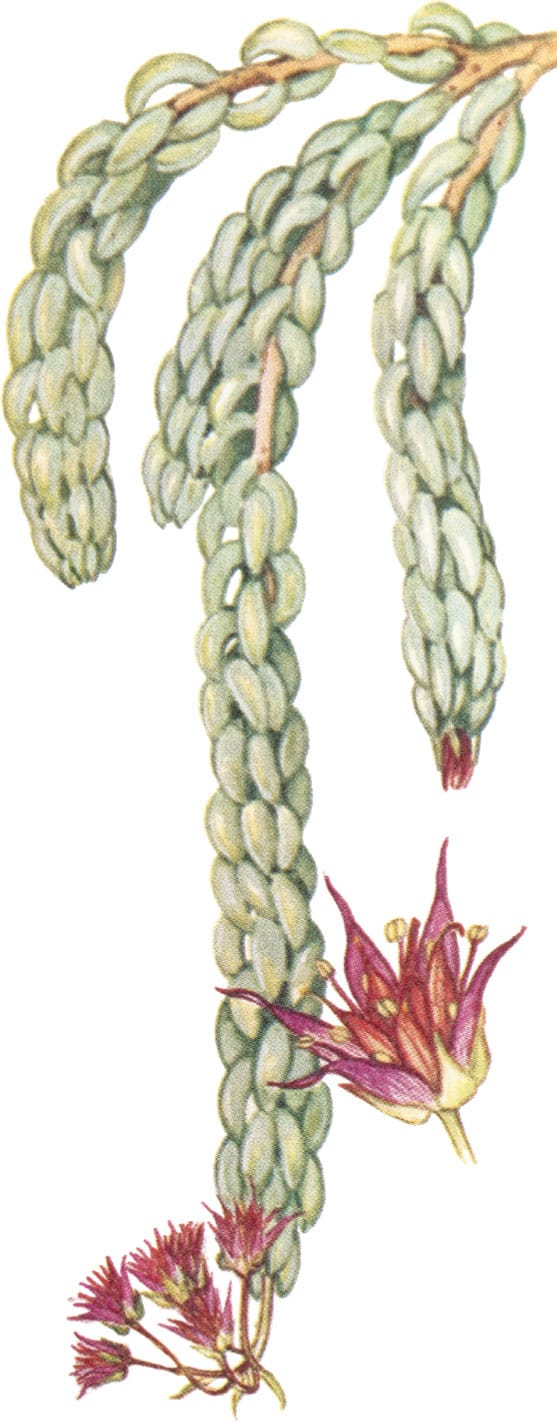
FLOWERING
Peace lily
Spathiphyllum wallisii aka white sails, spathe flower
Stylish plants, these have glossy, green leaves and an elegant, open habit. They are easy to look after and, considering their boggy homes in the wild, very forgiving of neglect. Their flowers cluster on a spike, or spadix, which is surrounded by a spathe – a pure white ‘petal’, which fades to green and lasts for several weeks.
WHERE TO GROW
Although tolerant of very low light levels, peace lily prefers brighter conditions, particularly if you want it to flower. A bathroom is a good choice as plants are adept at removing mould spores from the air (see Natural air fresheners).
HOW TO GROW
Mist plants often and grow on a tray of damp pebbles, to keep humidity levels high. Dust the shiny leaves regularly. Snip off fading flower stems and any yellow leaves. Feed plants once in summer. In winter, water only when the top of the compost has dried out. Repot in spring, in a pot just one size up as peace lily prefers life a little snug.
GROWING TIP
Plants do not like tap water, particularly in hard water areas. Therefore, collect rainwater or leave tap water to stand for a few hours before using, so that the chlorine can evaporate.
NO RELATIVE
Peace lilies are not true lilies and instead are in the same family as dumb cane and heart leaf.
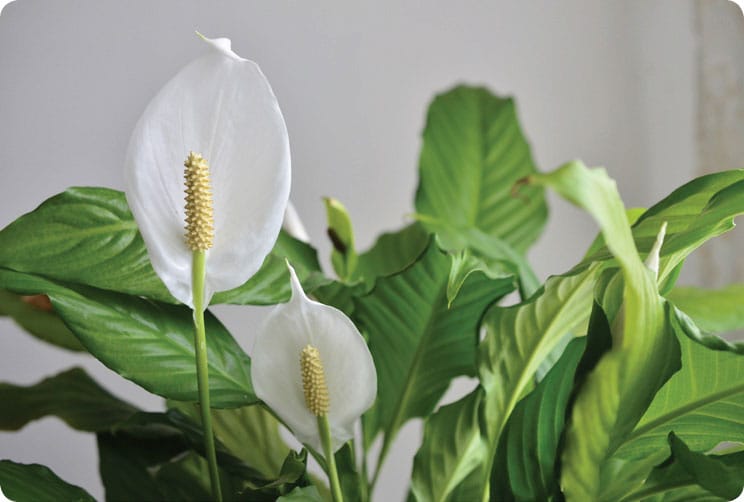
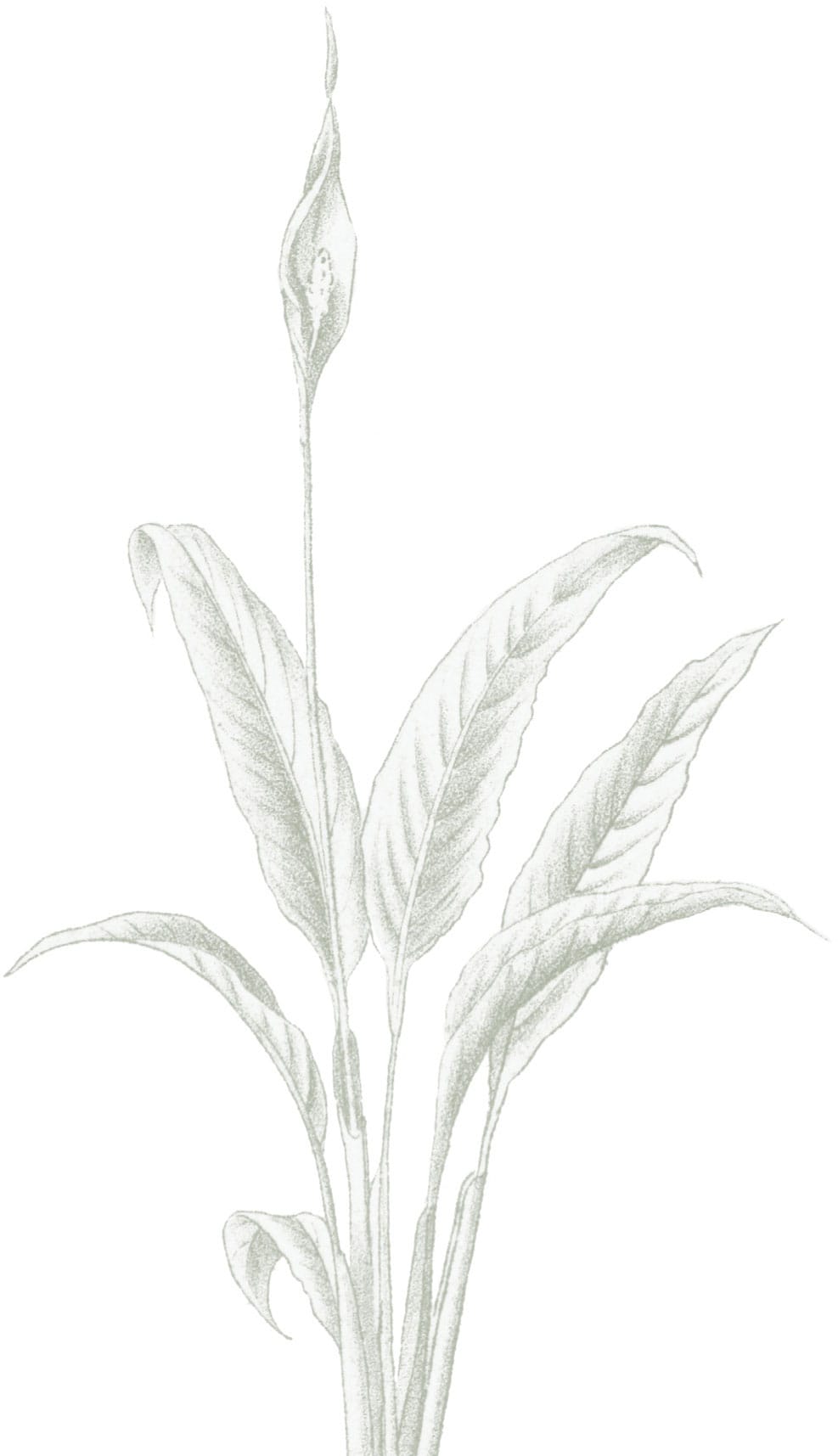
FLOWERING
Stephanotis
Stephanotis floribunda aka Madagascar jasmine, bridal wreath
These glorious, twining climbers are a visual and sensory delight. They produce shiny, green leaves and long-lasting, fragrant, white flowers in summer.
WHERE TO GROW
In flower this is a showstopper whose fragrance will fill a room, so give it pride of place in a sunny spot; keep it away from draughts. It can be trained up and across a wall, or around supports such as a hoop if you have less room. Move to a cooler area, 18°C/64°F, in winter.
HOW TO GROW
Mist regularly, especially in summer, and place on a tray of damp pebbles. Give high-potash feed every couple of weeks from spring to autumn. In winter, allow the top of the compost to dry out before watering. Plants can be trimmed in spring, to keep them in shape.
GROWING TIP
Plants prefer life slightly root-bound so repot every three years; or replace the top layer of compost each spring.
GOOD LUCK TOKEN
The pretty, trumpet-shaped flowers with their jasmine-like scent are a traditional flower in bridal bouquets.

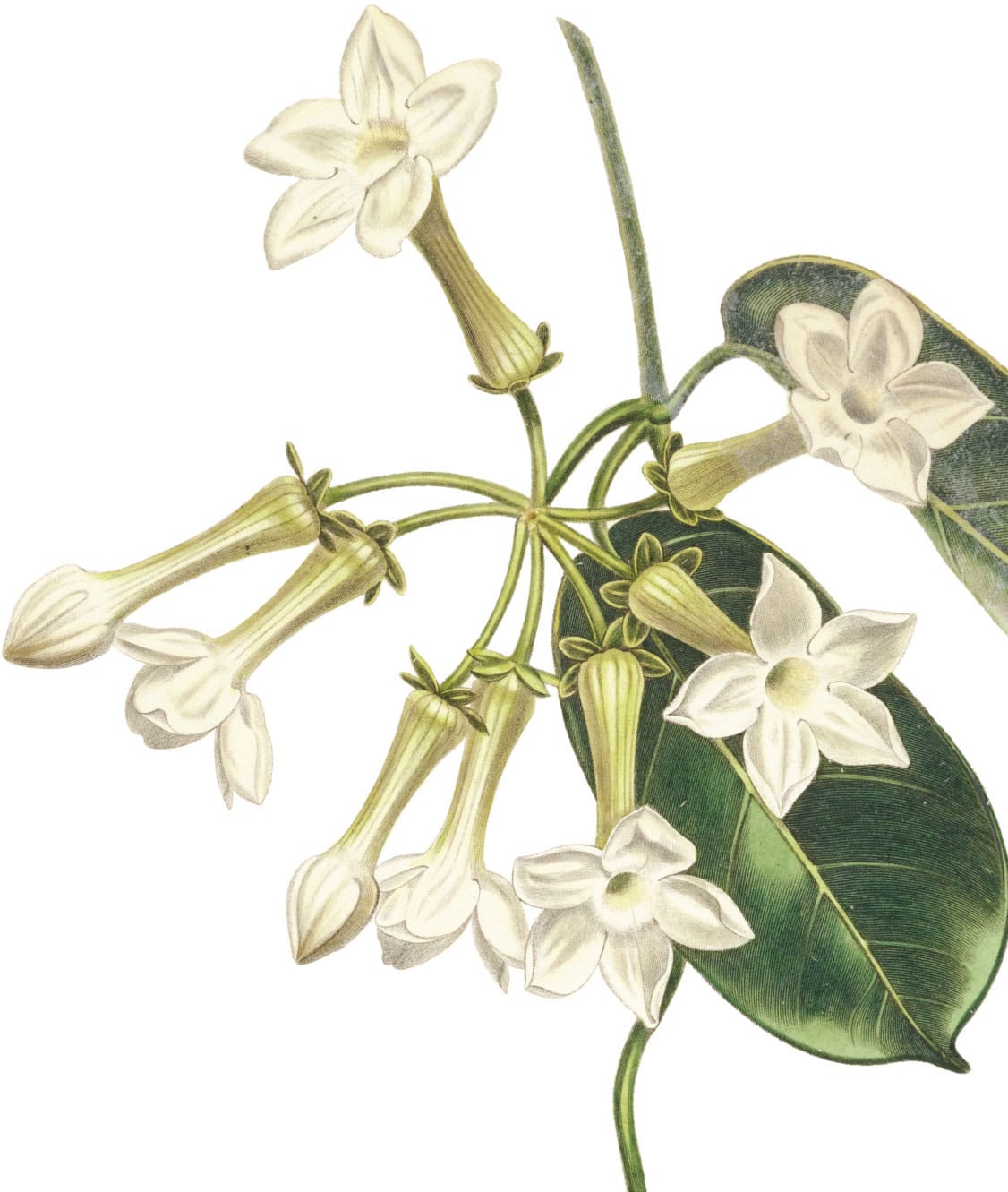
PROJECT 12
Driftwood anchor
Air plants are fascinating plants that have no roots and can survive happily in the wild without soil and very little water. They are, therefore, extremely easy to look after and can be used in the house in all sorts of ways – placed in pretty shells, jars or bowls or attached to foraged pieces of bark or attractive branches and hung up or placed on tables, shelves or windowsills out of direct sun. Driftwood collected from the beach complements the glaucous leaves of air plants well but must be submerged in clean water for a couple of weeks before using it to remove any salt residue in the wood.
Having arranged the air plants across your piece of bark or wood, you can either leave them loose or secure them in place by tying them gently with florist’s wire, thread or fishing line. Do not be tempted to use glue, which will damage the plants.
Mist air plants twice a week, preferably with rainwater, to keep the humidity levels around the plants high, and untie them once a week so they can be soaked in tepid rainwater.
GOOD AIR PLANTS FOR DISPLAY
Tillandsia argentea
T. brachycaulos var. multiflora
T. capitata ‘Peach’
T. usneoides
T. xerographica
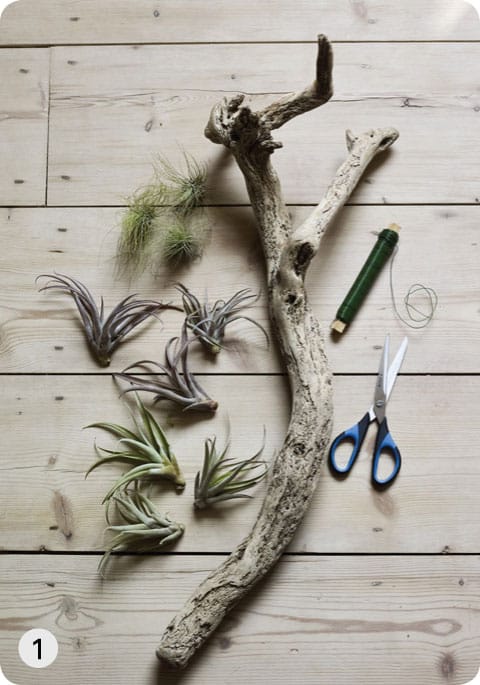
1 Assemble your air plants (here, Tillandsia), some well-soaked driftwood, a roll of florist’s wire and scissors.
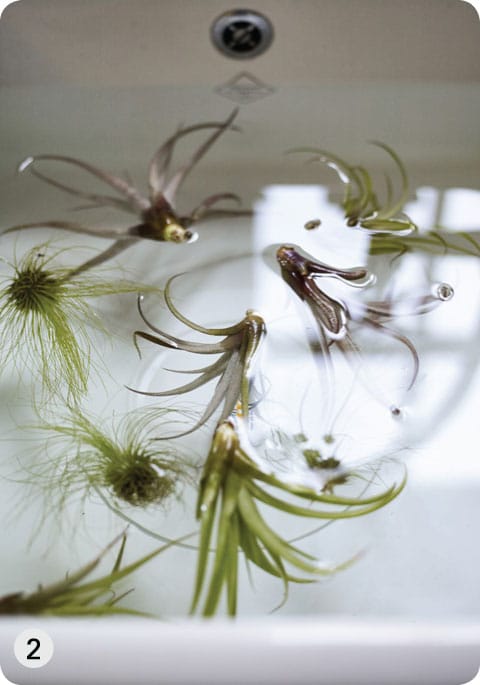
2 Before ‘planting’, soak plants for a few minutes in a sink filled with tepid rather than cold rainwater. Then stand them upside down on a soft cloth so that excess water can drain away.
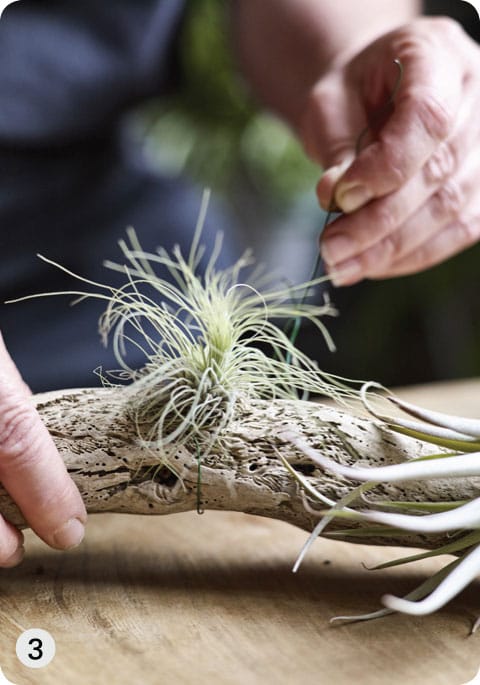
3 Secure plants in place by tying florist’s wire loosely around the main body of each plant.

4 Place your air-plant branch in a humid spot out of direct sun.
FLOWERING
Cape primrose
Streptocarpus hybrids
These house plants have a long flowering season, from spring to autumn, and are easy to care for, springing back brilliantly from neglect, even when their leaves are wilting.
WHERE TO GROW
Give them a home on an east- or west-facing windowsill.
HOW TO GROW
Water plants either from below (see here) or from above (see here), but always allow plants to drain well afterwards as the roots can easily rot. Feed once a month from spring to autumn, but do not overfeed, or overwater, which will produce plenty of leafy growth but no flowers. Deadhead flower stems as the blooms fade. In winter, Cape primrose can sit almost dry – plants recover very well from dehydration. Nip out old leaves in spring, to make room for fresh growth.
GROWING TIP
Cape primrose likes to feel slightly constricted so always give it a small pot, even when potting it up in spring.
SPOILT FOR CHOICE
Cape primrose comes in a huge range of flower colours, from pink and purple to white and blue, and many have two-tone or patterned petals.

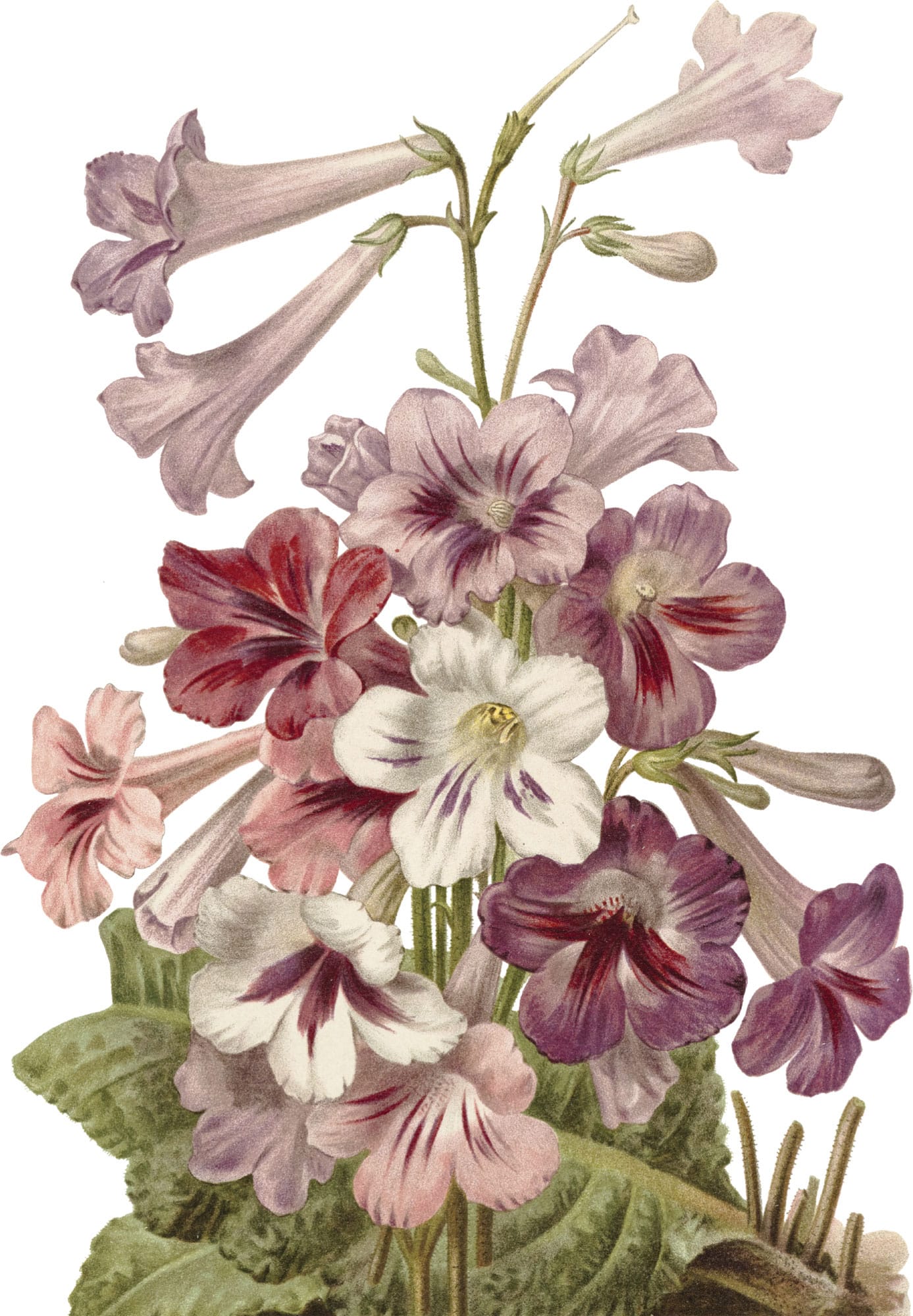
BROMELIAD
Air plant
Tillandsia species
The ultimate easy-care plant, these delightful little bromeliads need no soil to grow in, hence their name, and they survive on very little water and attention. Air plants come in all sorts of forms and sizes – some are dense and sprawling, others spidery and spiky. Many will flower colourfully in the growing season, once mature; they then die, having also produced baby plants to replace themselves.
WHERE TO GROW
Air plants are happiest in a humid spot, such as a bathroom or kitchen, out of draughts and away from radiators or fires. They can be displayed hanging from driftwood or bark or in jars or shells, but resist the temptation to use glue to attach them (see also Driftwood anchor).
HOW TO GROW
Soak plants in a bowl of tepid rain- or distilled water. Make sure they dry by draining well or hanging upside down, as excess water causes rotting. Do not wet the flowers.
GROWING TIP
Standing an air plant in the neck of a jar of water will give it the humidity it craves and is also an interesting, easy way to display it.
HABITAT RANGE
Many air plants are typical epiphytes, living on other plants, either hanging from branches or nestled among tree trunks, but some are aerophytes and have no roots at all, growing on unstable desert sands.
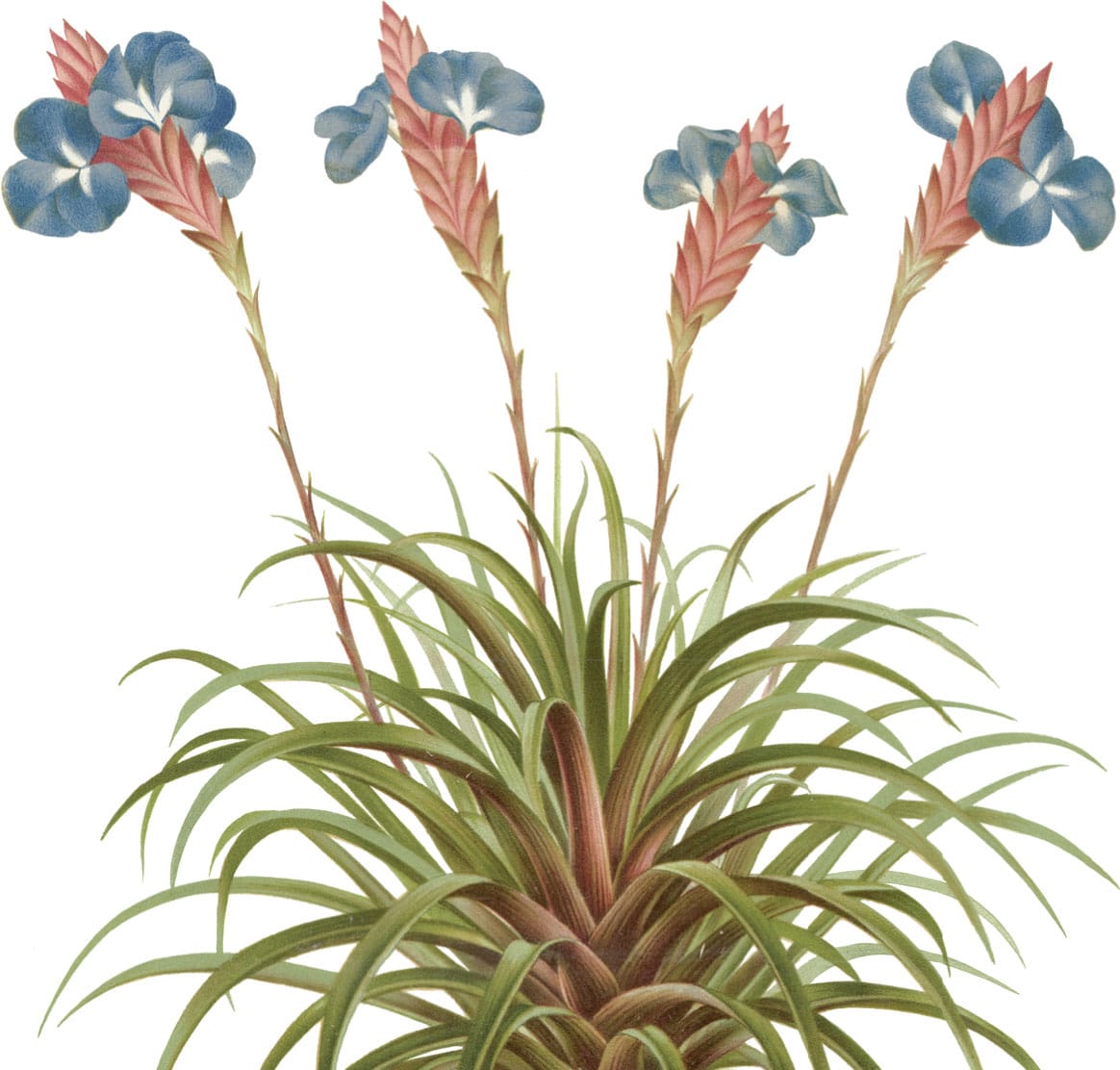
FOLIAGE
Silver-inch plant
Tradescantia zebrina aka spiderwort, wandering Jew
The striped, zebra-like pattern on the fleshy leaves has given this attractive plant its common name. The undersides are purple, as are the young leaves, so plants actually have a decorative, multicoloured look. They also bear lovely, three-petalled, lavender flowers.
WHERE TO GROW
An east- or west-facing window in a hanging basket or tumbling over a shelf or windowsill is perfect. Plants will revert to green if light levels drop too low.
HOW TO GROW
Grow in a free-draining mix of 3:1 potting compost and perlite. Mist plants weekly in spring and summer, and feed monthly also. The fleshy leaves can withstand drought for a while, but growth will be halted until watering resumes. In winter, reduce watering so that compost is kept just moist. Trim stems in spring, to encourage bushy growth. Cut plants right back if they become neglected and tatty. Repot plants only when root-bound.
GROWING TIP
Plants can be propagated very easily from leaf cuttings rooted in water or compost (see here).
NEW WORLD FIND
The botanists John Tradescant the Elder (1570–1638) and his son John Tradescant the Younger (1608–1662) brought Tradescantia virginiana back from a collecting trip to Virginia in North America.
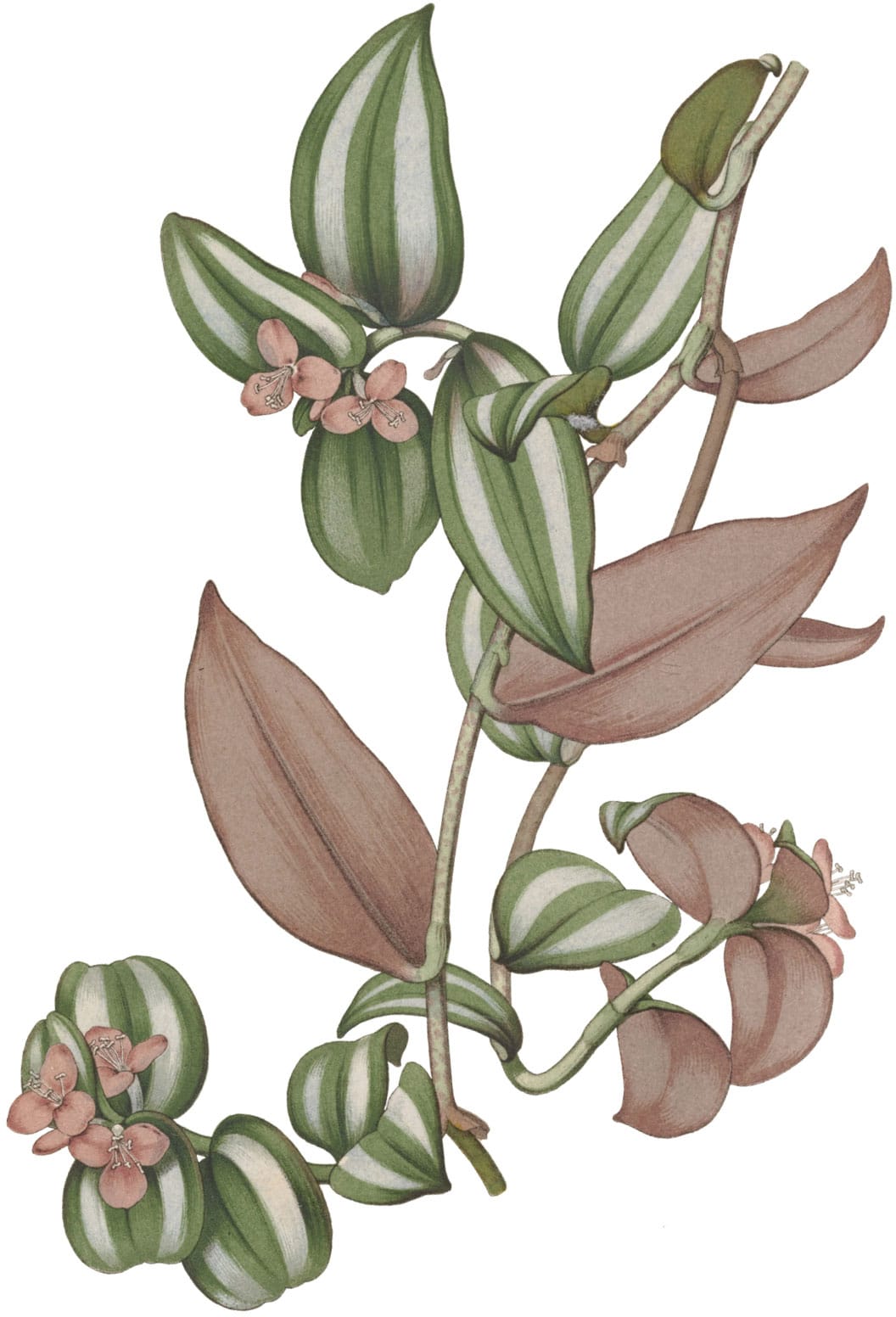
FOLIAGE
Spineless yukka
Yucca elephantipes aka stick yukka
The perfect statement plant, these architectural showstoppers are tough, tolerant of drought and love sunbathing in direct light. Each palm-like trunk has a tuft of sword-shaped leaves sprouting from the top. If happy, a mature plant may bear spikes of scented, creamy white flowers in summer and autumn.
WHERE TO GROW
Spineless yukka thrives when basking in front of a south-facing window.
HOW TO GROW
Feed monthly in the growing season. In winter, water plants just once a month. Repot every two years or, if repotting a large plant is tricky, freshen the top layer of compost.
GROWING TIP
If spineless yukka gets too tall, simply cut its trunk with a saw in spring; new leaves will soon appear.
CULINARY TREAT
Many parts of yukka are useful or edible. In El Salvador, where they are the national flower, the flowers (Flor de Izote) are traditionally eaten with scrambled eggs and tacos.
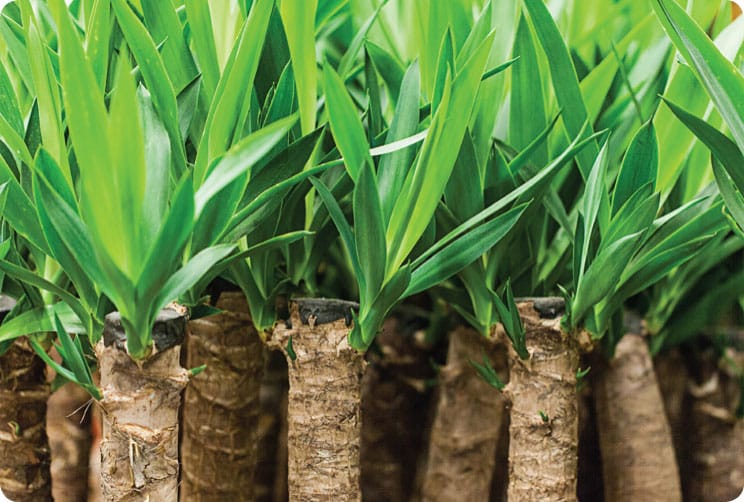

FOLIAGE
Fern arum
Zamioculcas zamiifolia aka ZZ plant, Zanzibar gem, zuzu plant
The handsome, glossy foliage of this plant is known as ladders after the leaf pairs that are borne along its upright stems. Slow-growing and easy to look after, fern arum is happy in both sun and shade and even tolerates the odd missed watering, so is ideal for nervous and first-time growers.
WHERE TO GROW
It is very effective at purifying the air (see Natural air fresheners) so a warm bedroom or living room in a north-facing window is a good choice.
HOW TO GROW
Plants have succulent, fleshy rhizomes that help them withstand drought, but if kept dry plants will become dormant, look far less handsome and eventually start to drop their leaves. Feed monthly from spring to autumn. Water plants just once a month in winter. Trim plants if they need to be kept in shape, in spring. Repot plants every two years.
GROWING TIP
Yellow leaves are a sure sign that plants are being overwatered.
RECENT ARRIVAL
New to the house plant scene, fern arum was first commercially cultivated as recently as 1996 by Dutch nurseries.
